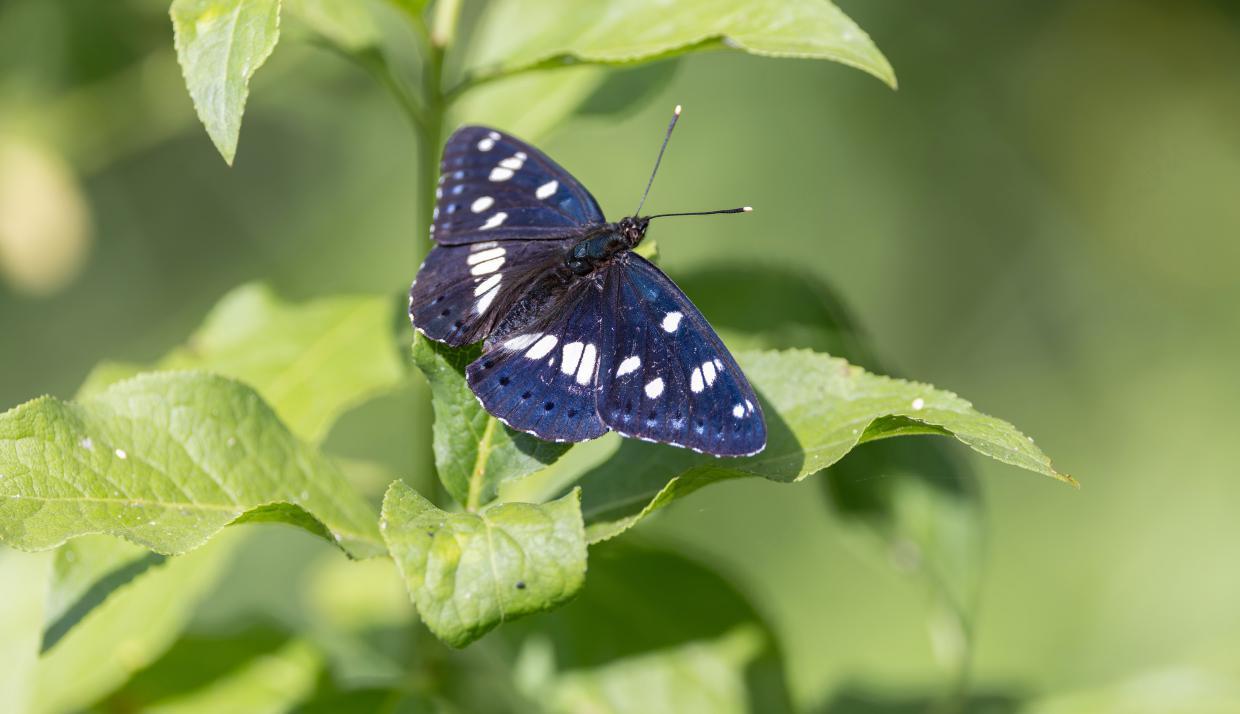SERBIA
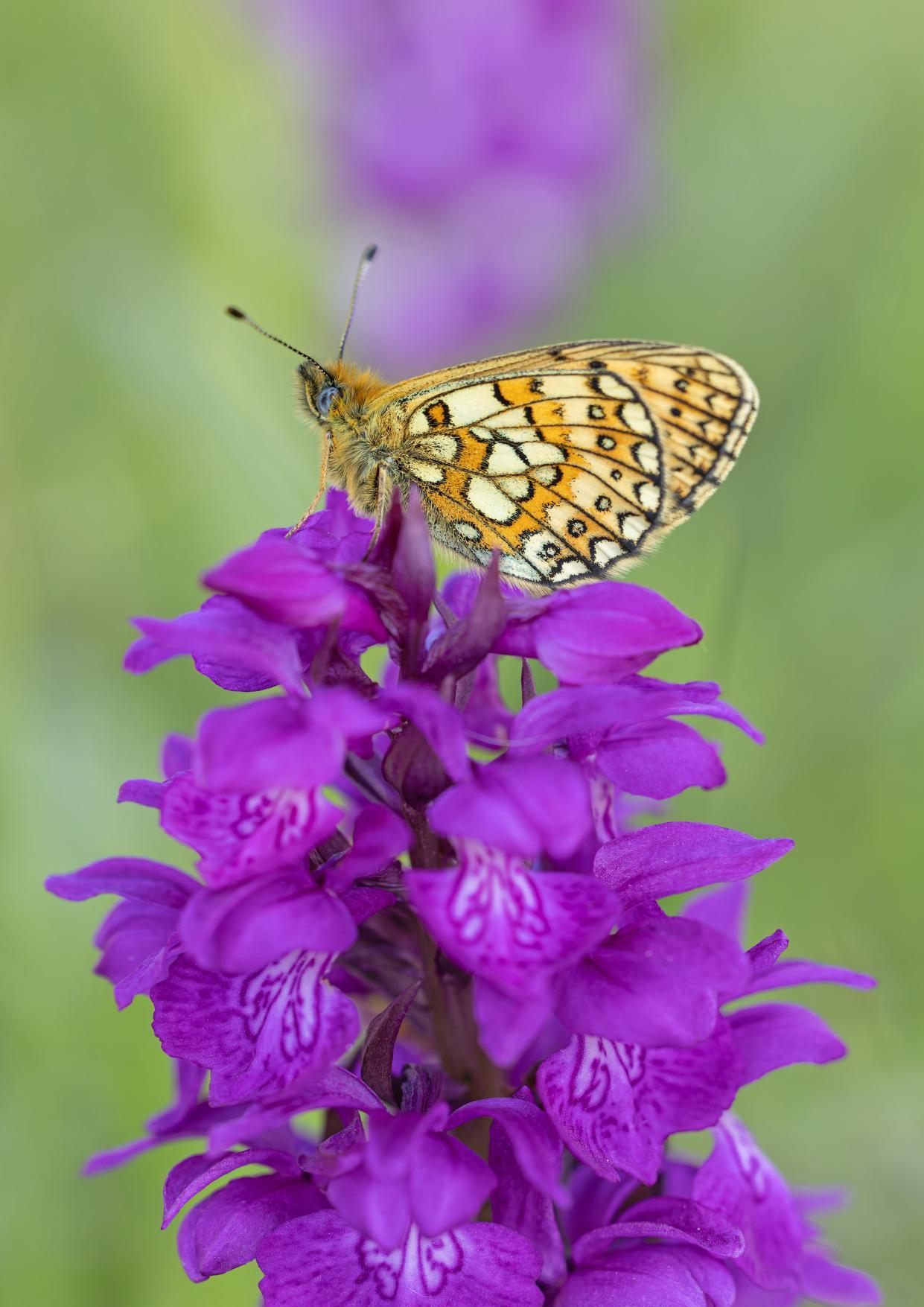
11 – 17 JUNE 2025
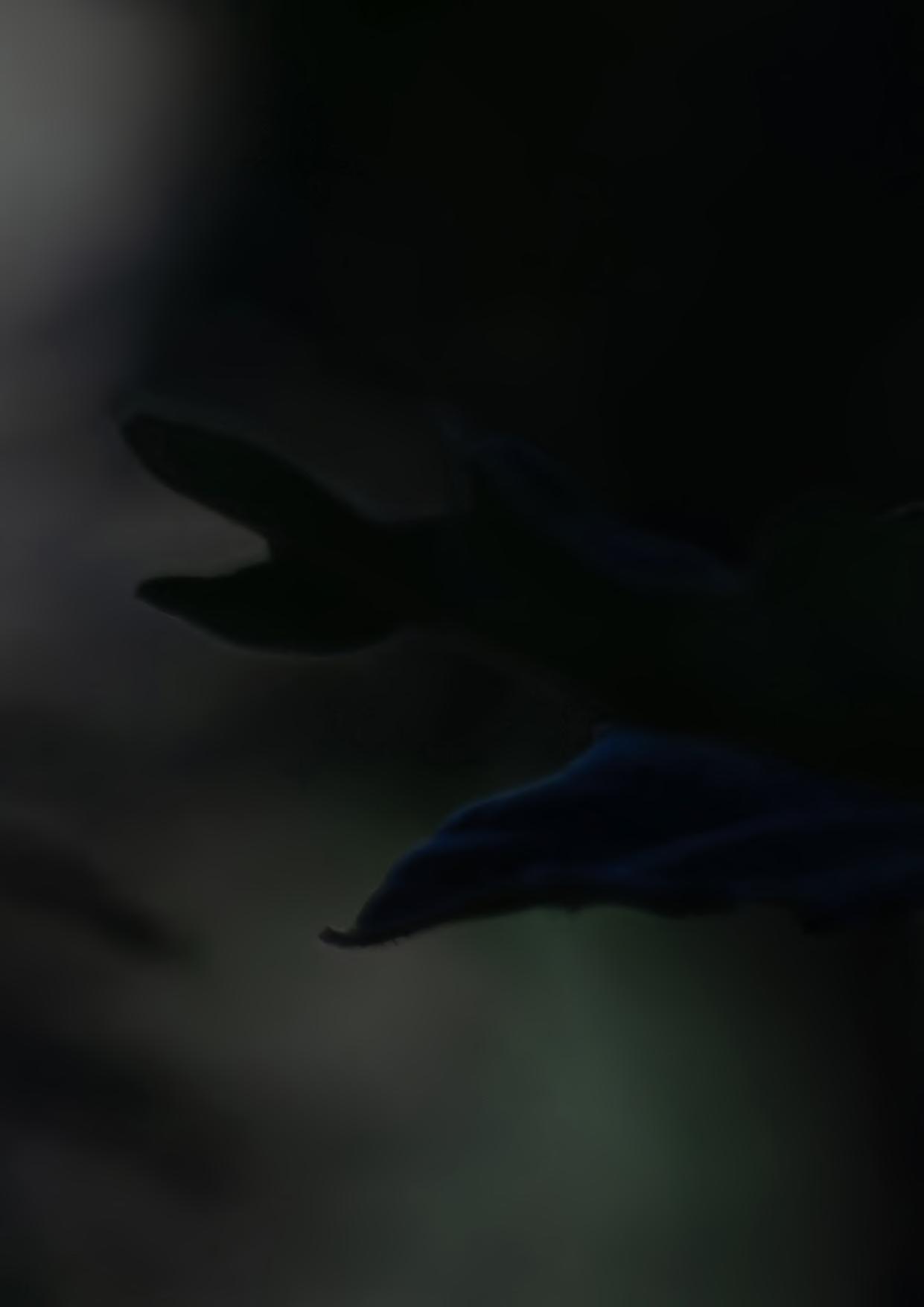
SERBIA: Butterflying in the Balkans.
2025 saw the inaugural Sakertours butterfly tour, to Serbia and I was very privileged to join it. This is my perspective of a fabulous time spent watching butterflies! Our total of 110 species was more than expected and there were some stunning highlights among this number, particularly the Holy Grail of all European butterflies, the spectacular False Comma Nymphalis vaualbum, which obliged beautifully for us. Other very popular sightings with our group in the pretty wooded valleys and high meadows of southeast Serbia included scarce and thinly scattered species like Violet Copper Lycaena helle and Bog Fritillary Boloria eunomia, as well as Balkan specialities: Balkan Copper Lycaena candens, Blue Argus Aricia anteros, Lesser Lattice Brown Kirinia climene; Russian Heath Ceononympha leander and Bulgarian Erebia orientalis, Brighteyed Erebia oeme & Almond-eyed Ringlets Erebia albergana. This region is also known for its show-stopping, all-dark tremulae form of Poplar Admiral Lementis populi and we had four sightings of it, one of which was very special, by a picturesque waterfall in a remote valley. Finally, who could forget the enormous Apollos Parnassius apollo cruising effortlessly over the flowery red sandstone hillsides? Our haul of butterflies included a wide variety: 14 species of skippers; 7 coppers; 5 hairstreaks; 20 blues; 18 fritillaries and 17 browns. This is a great itinerary for kick-starting your European butterfly list, filling in some regional gaps and of course, chasing some absolute megas. Opportunities for photography were endless, and we enjoyed our very comfortable accommodation and some tasty local food.
Mike Watson, Clitheroe June 2025.
Cover: Bog Fritillary (Boloria eunomia). This page: Lesser Lattice Brown (Kirinia climene) (Mike Watson)
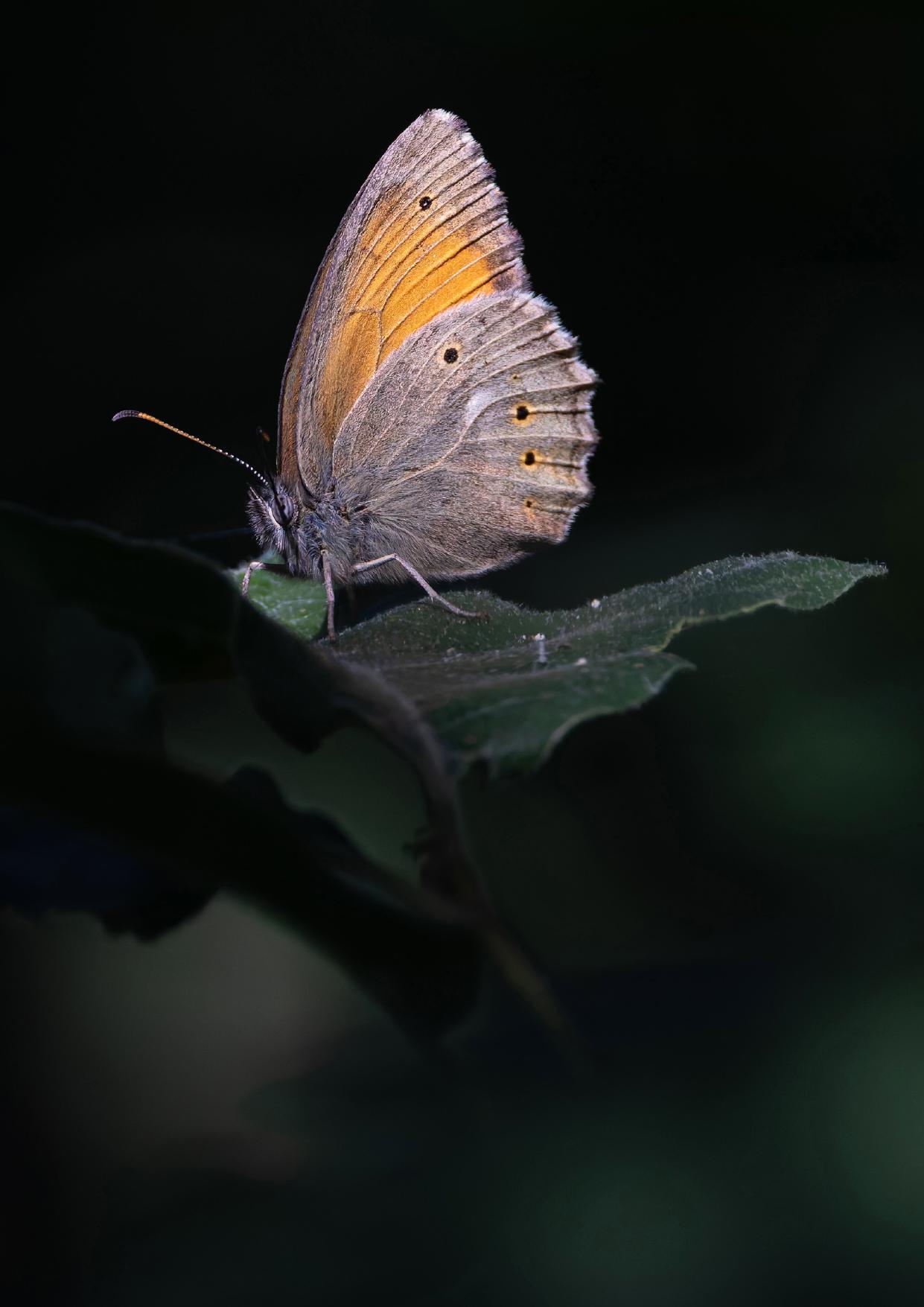
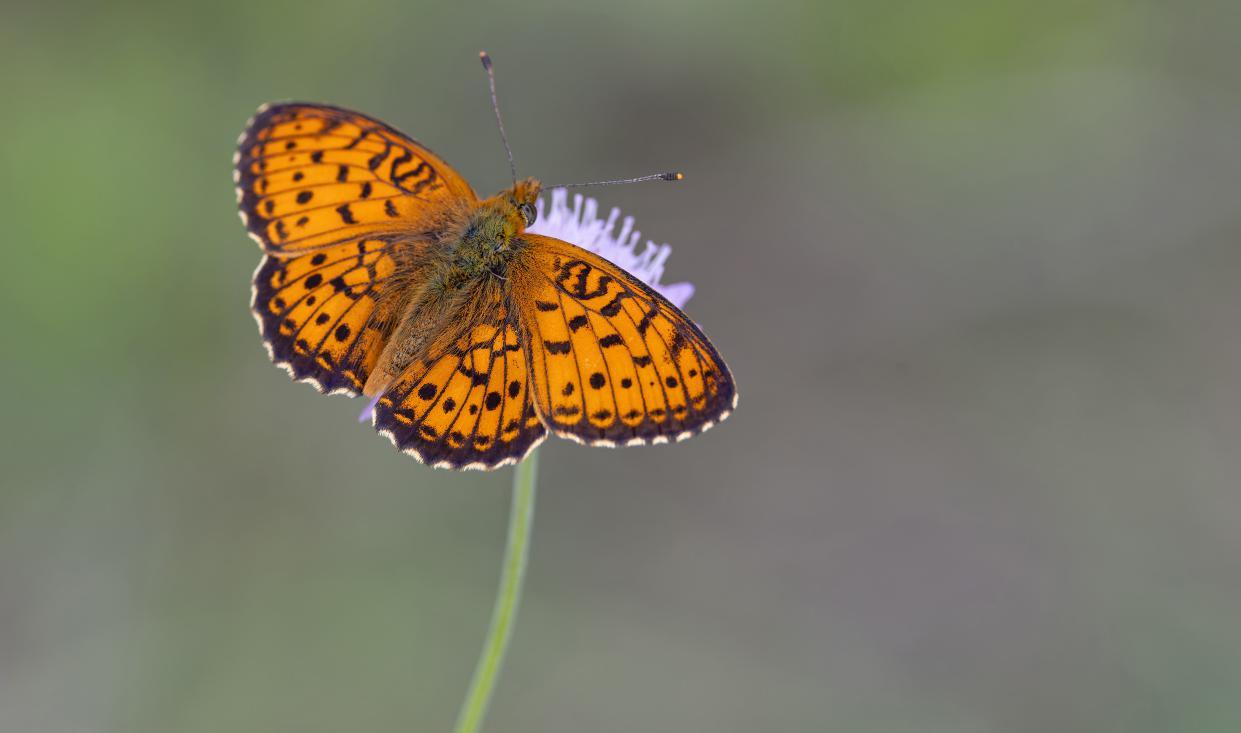
Lesser Marbled Fritillary (Brenthis ino). Next page: Twinspot Fritillary (Brenthis hecate), above & Marbled Fritillary (Brenthis daphne) (Mike Watson)
Our small group of keen butterflyers gathered at Belgrade’s shiny Nikola Tesla International Airport and we were soon on our way south, on Serbia’s modern motorway network bound for mountains far to the southeast on the Bulgarian border. Happily, the thousands of Turkish ex-pats had not yet started to make their way home for the holidays yet, so the roads were quite empty, and we made rapid progress to the Balkan Mountain foothills. Thanks to an early start we arrived in time for some initial exploration. The sun was shining, and the abandoned meadows were full of butterflies. Ridiculously ornate, Black-veined Whites Aponia crataegi floated over the flowers and we saw our first fritillaries – Twin-spot Brenthis hecate, Marbled Brenthis daphne, Lesser Marbled Brenthis ino, Freyer’s Melitaea arduinna, Knapweed Melitaea phoebe, Spotted Melitaea didyma and Marsh Euphydryas aurinia, all flying together and it was quite overwhelming to keep track of their identities on day 1. Talk about ‘in at the deep end’. Our first blues were Silver-studded Plebejus argus and
the lovely Amanda’s Polyommatus amandus, both of which would feature throughout the tour. Reverdin’s Blue Plebejus argyrognomon was also here. We continued a little further into a wooded valley and followed a streamside track that was also full of butterflies. The stars here were the coppers. Both Large Lycaena dispar and Purple-shot Coppers Lycaena alciphron were observed at very close range. There were numerous hairstreaks too – Bluespot Satyirum spini, Sloe Satyrium acacia, Ilex Satyrium ilicus and the ubiquitous Green Callophrys rubi. Nymphs were represented by Southern White Admiral Limentis reducta, Common Glider Neptis sappho, Comma Polygonia c-album and Painted Lady Vanessa cardui. There were skippers too, the pick of the common and widespread bunch was the lovely Yellow-banded Pyrgus sidae, a southern Europe speciality. What a great start! After celebratory ice creams, we made our way deeper into the mountains, the rocky outcrop of distant Babin Zub on the Stara Planina (‘The Old Mountain’), our ultimate destination,
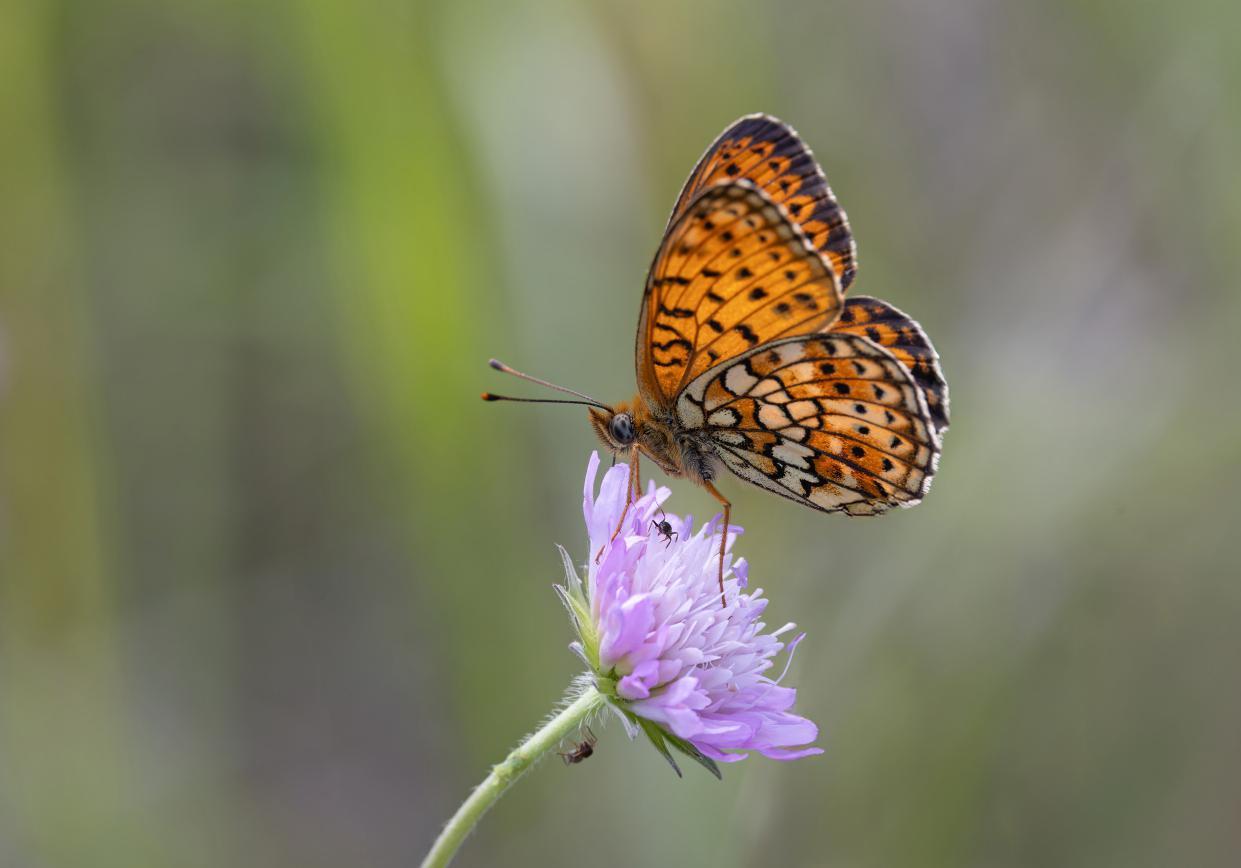
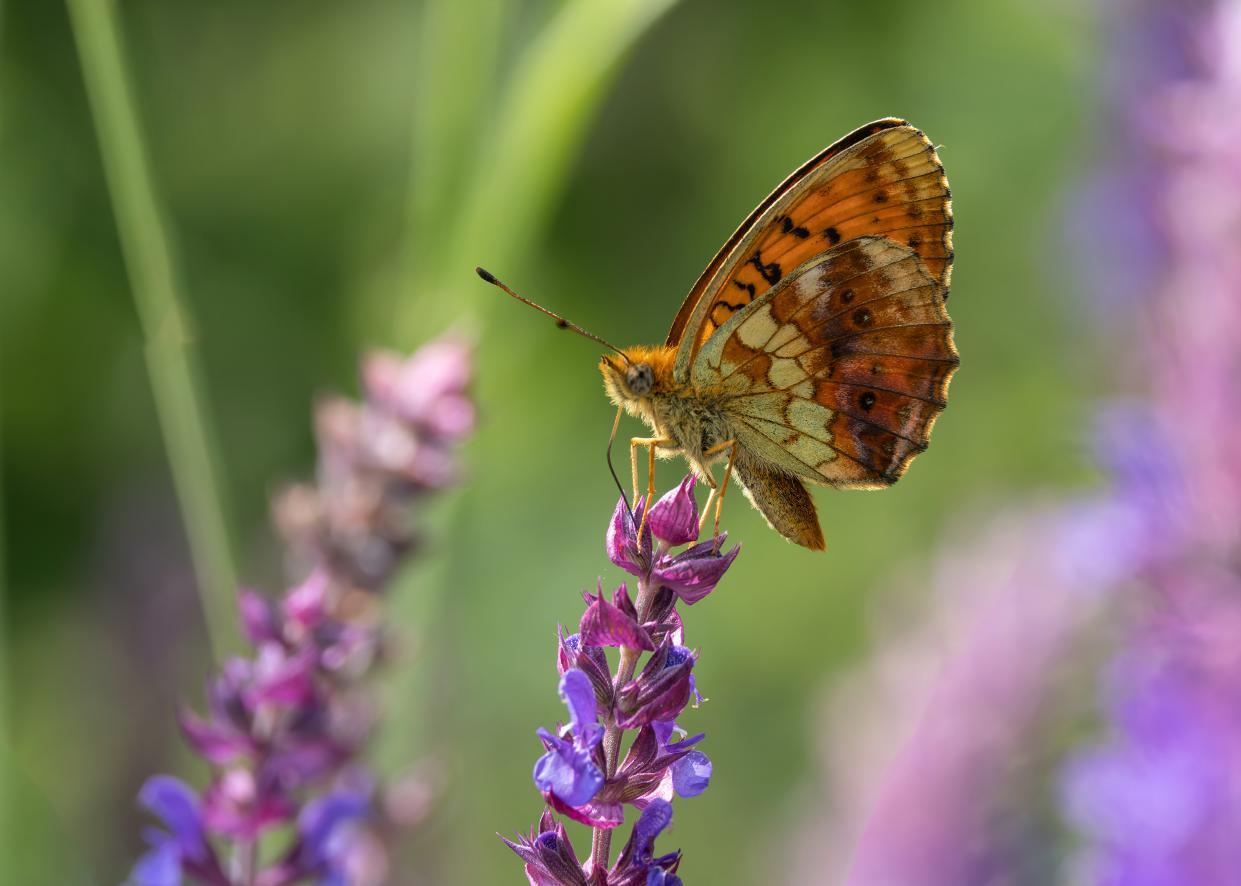
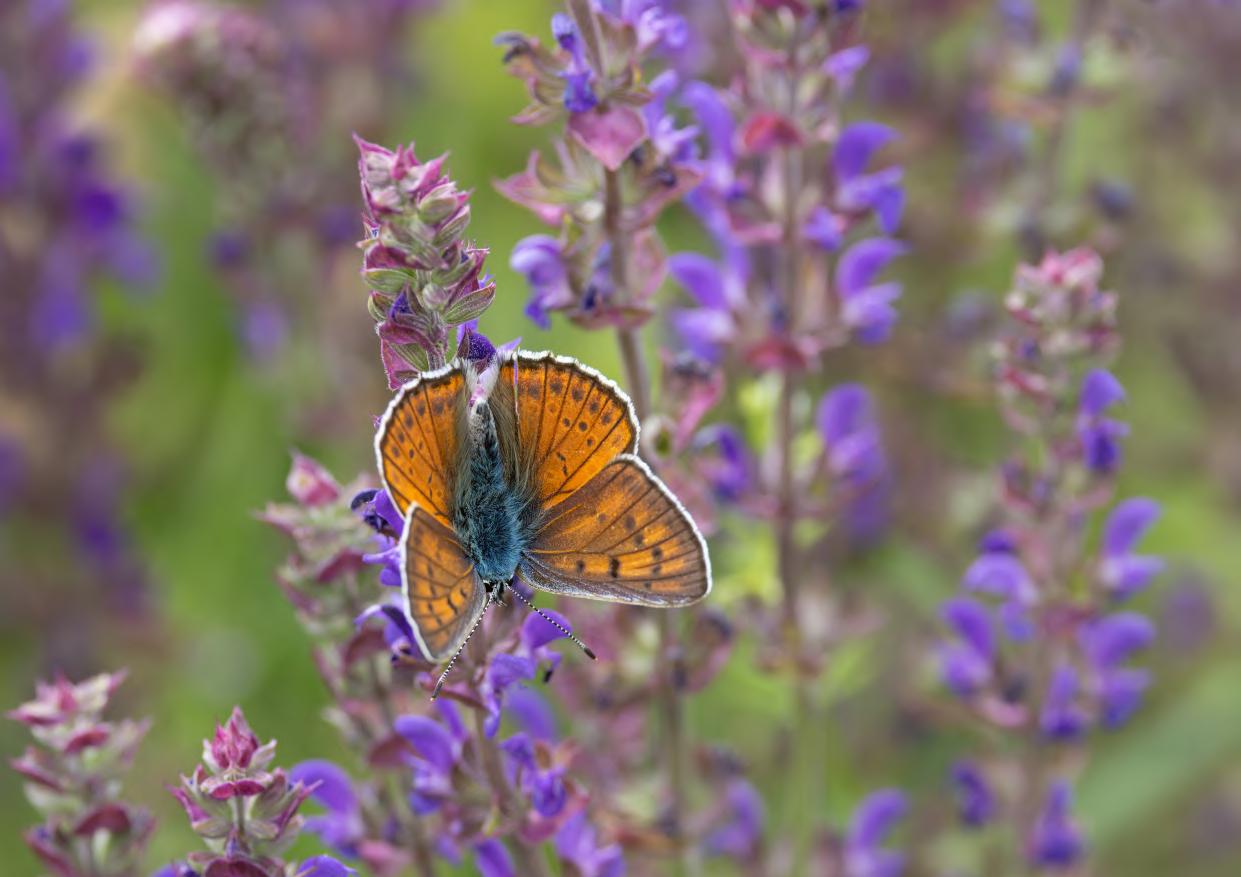
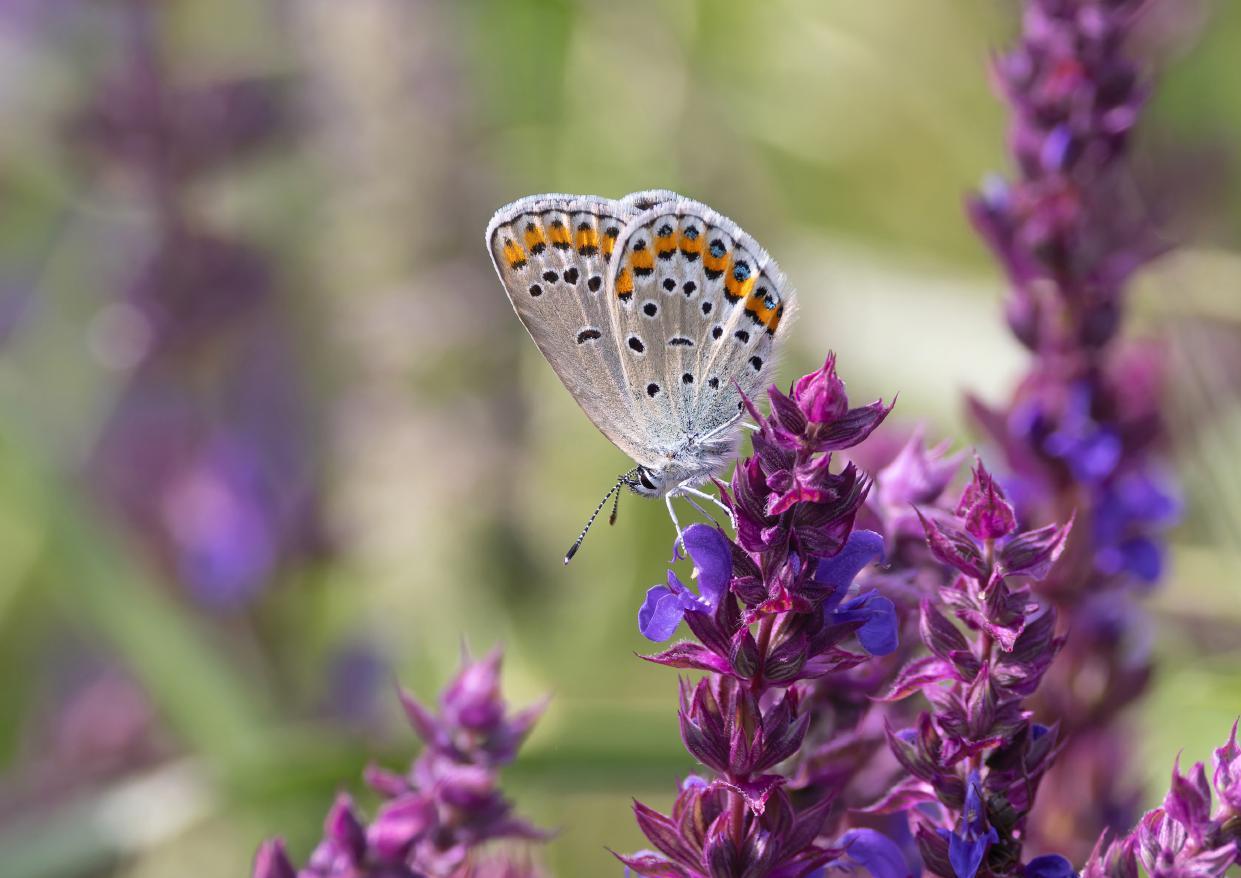
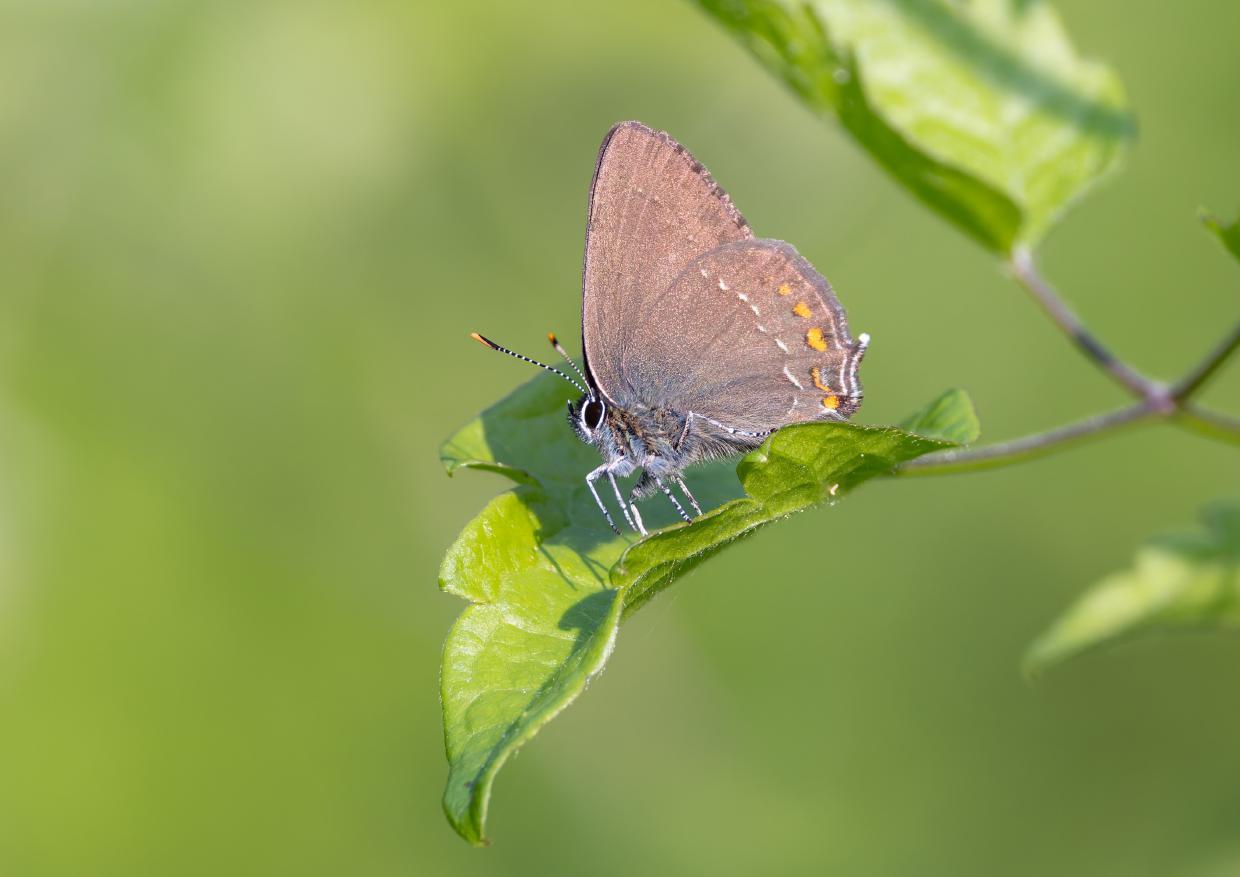
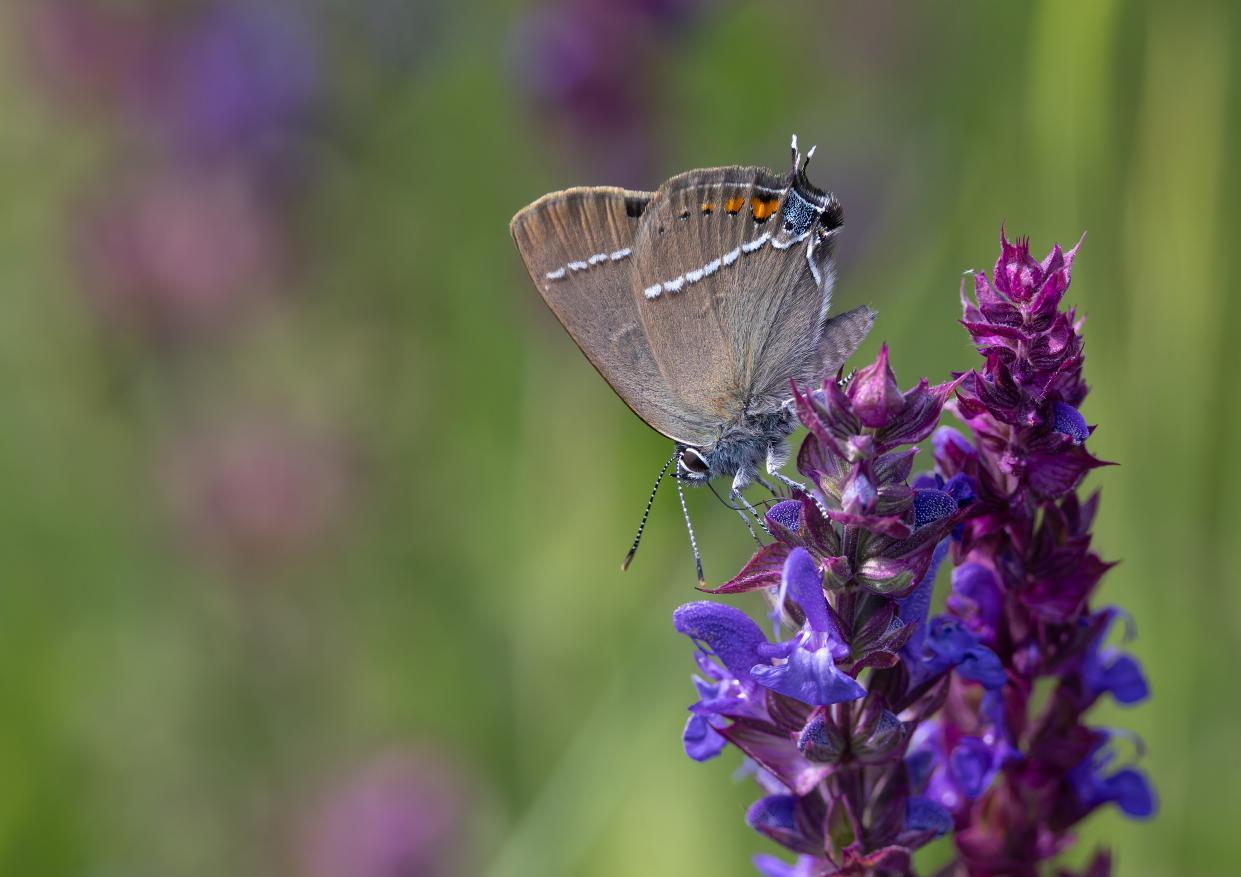
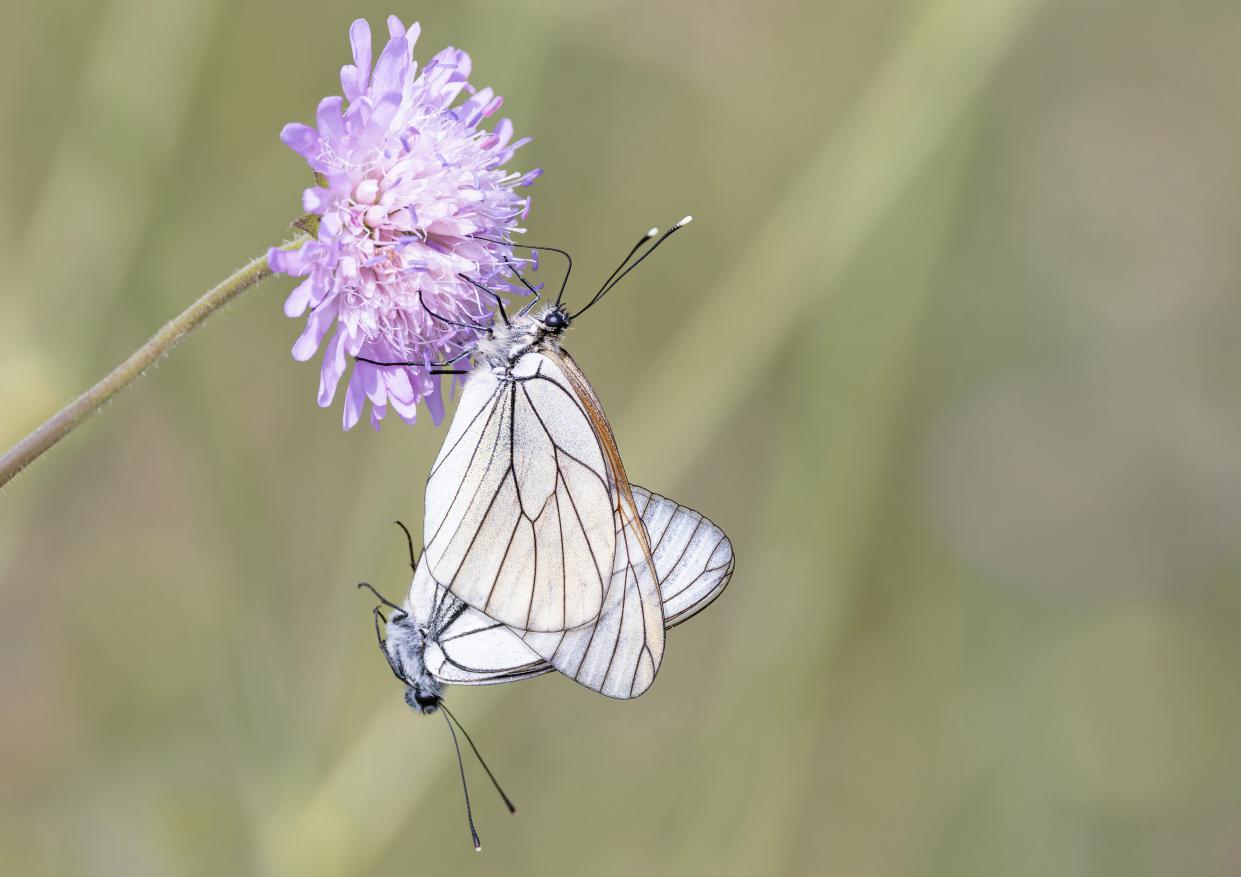
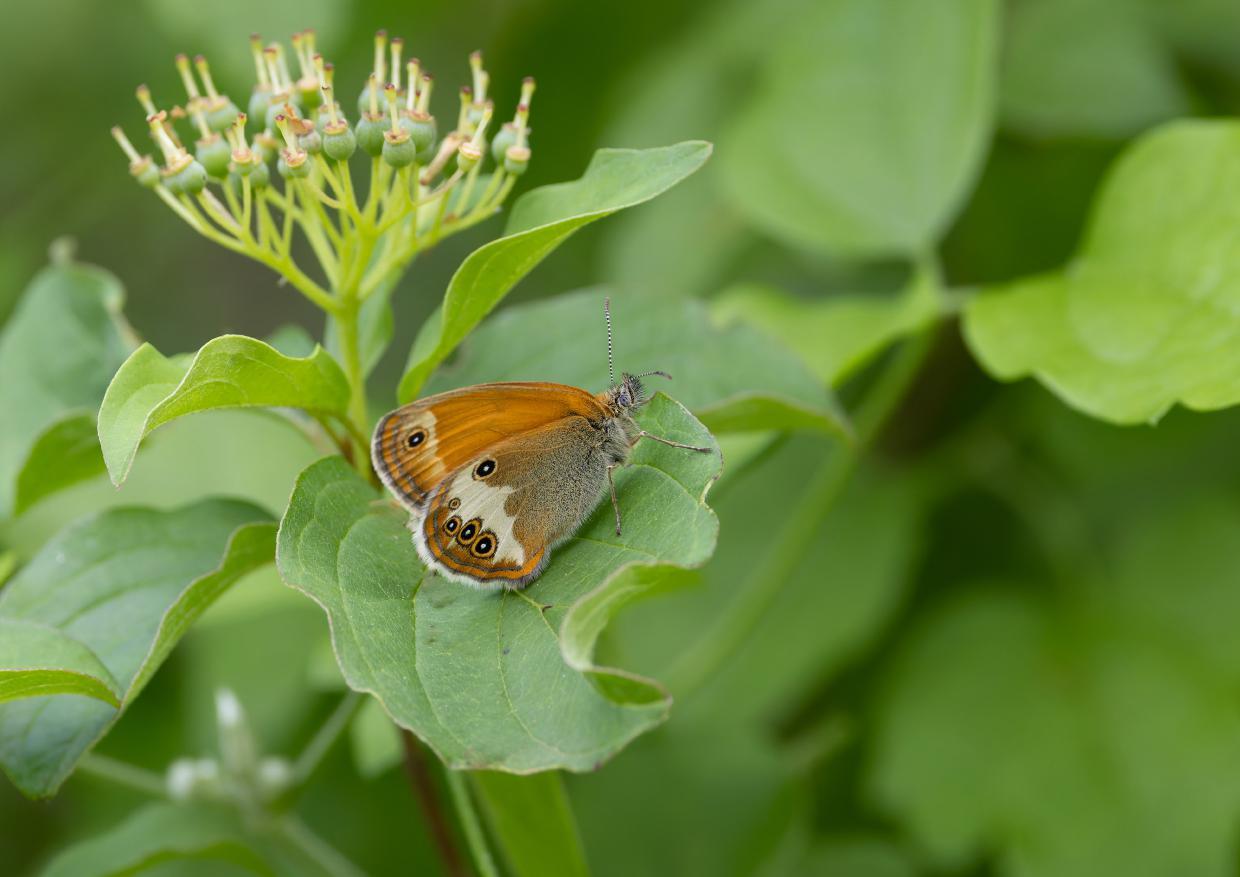
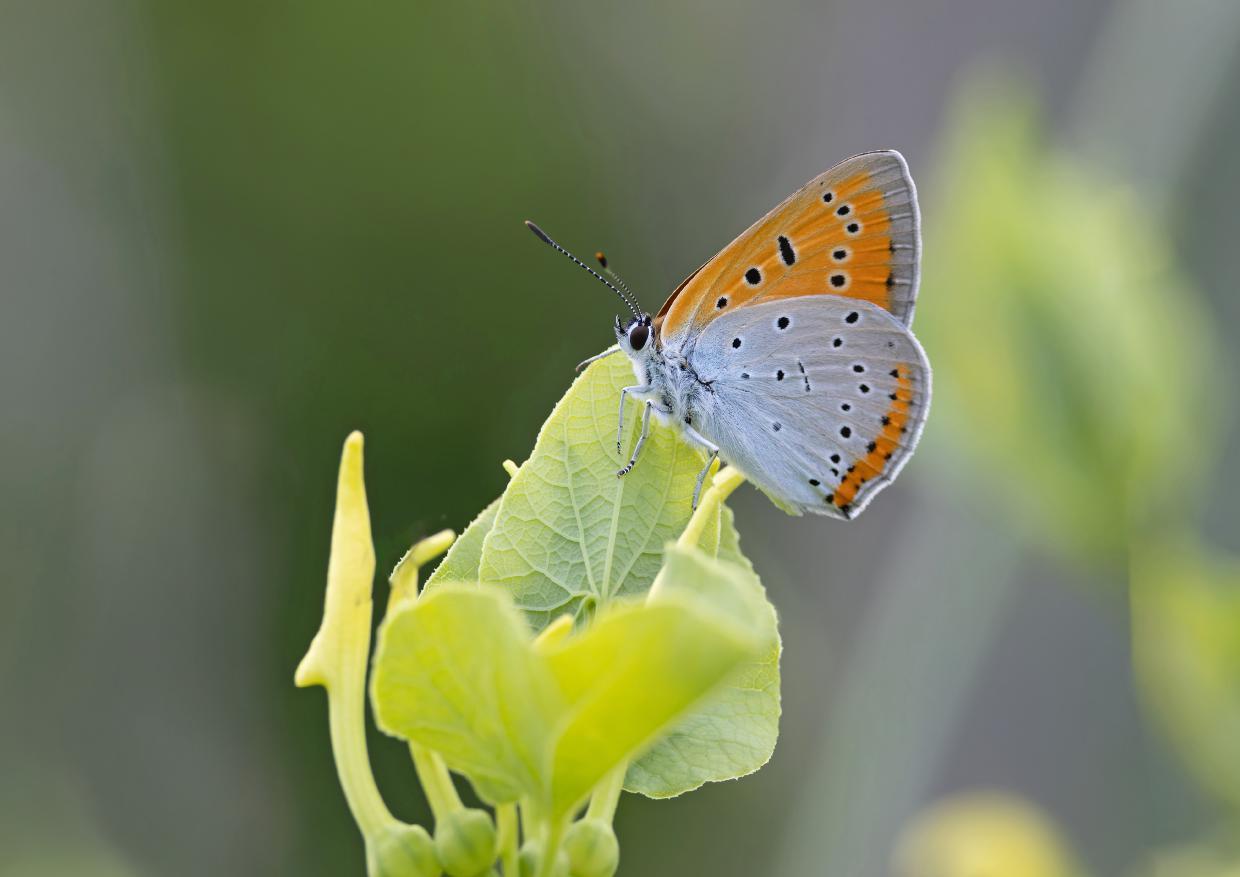
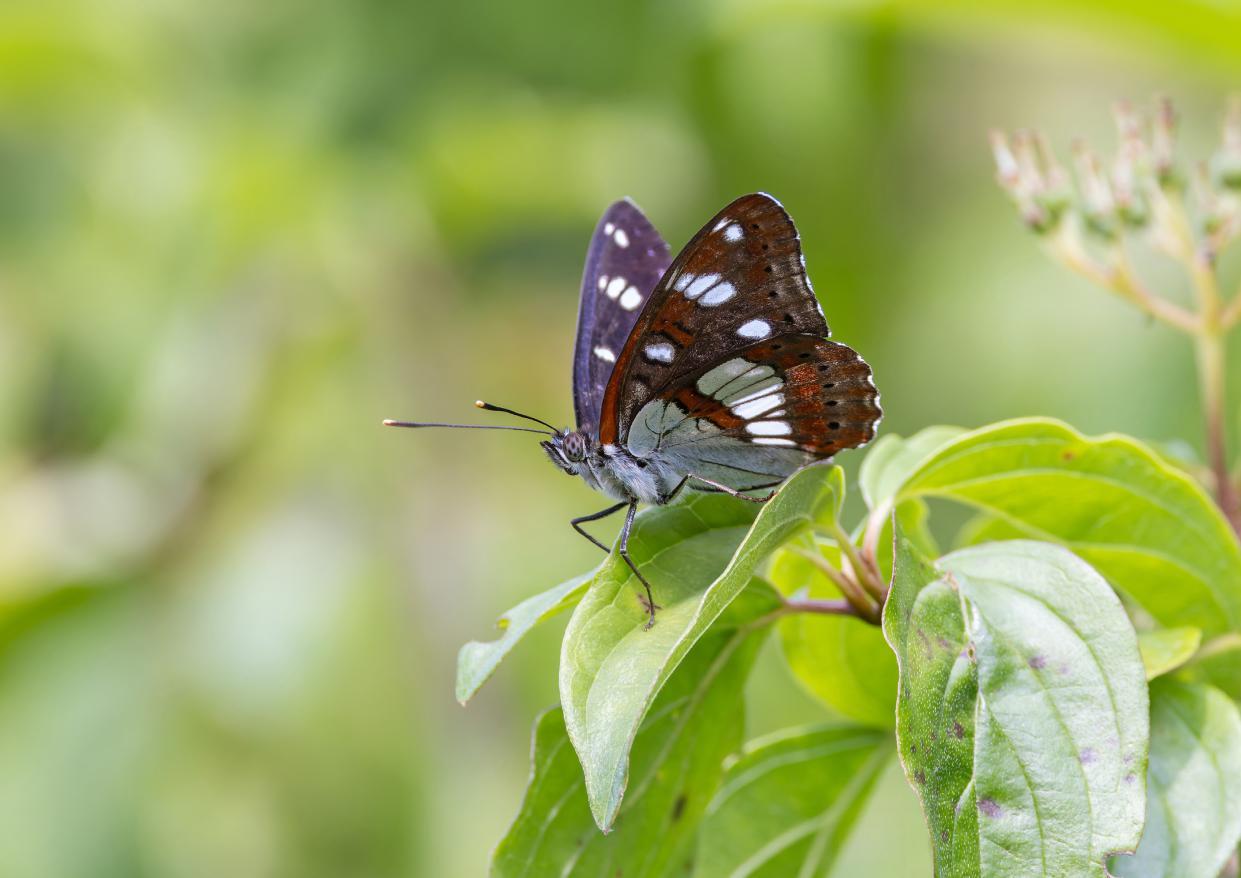
dominating the skyline ahead. We still had time for another couple of short roadside stops. At the first, a pile of huge logs produced a sunbathing Large Tortoiseshell Nympahlis polychloros, however, it was skittish and did not allow close approach. We looked for it in this spot every day over the next week and never saw it again. It was dry and had not rained in the mountains for some time, so the all-important muddy puddles whose edges attract so many butterflies in hot weather were only to be found in spots where spring water flowed out of the hillsides and onto the tracks. Chequered Skipper Carterocpehalus palaemon appeared at our last site today, Commas Polygonia c-album abounded, and we enjoyed some lovely Marsh Fritillaries Euphydryas aurinia in the last of the evening sunshine.
Our first full day of the tour started with a pre-breakfast visit to a small bog nearby, where straight out of the back of the car we saw Eastern Large Heath Coenonympha rhodopensis
and the highly sought after Bog Fritillary Boloria eunomia! The bog itself was awash with the pretty Alpine Bistort, the latter’s caterpillar food plant and we saw more of these delicate little frits. Definitely a tour highlight! Bog Fritillary B. eunomia is not threatened, owing to extensive northern populations, but its scattered, small and more marginal sites further south are surely threatened. We were delighted to find some of its next-door neighbour, Violet Copper L. helle still flying, just a few steps from the Bog Frits B. eunomia. This endangered little gem has a very scattered distribution and is considered endangered by IUCN, owing to significant population declines and range contractions across its European range, with some countries reporting local extinctions. A couple of Sooty Coppers Lycaena tityrus added to our growing copper list and both Marsh Fritillary Euphydryas aurinia and Green Hairstreak Callophrys rubi were common here. A tasty breakfast back at the hotel was very wel-
Bog Fritillary (Boloris eunomia). Page 6: Purple-shot Copper (Lycaenia alciphron) & Reverdin’s Blue (Plebejus argyrognomon); page 7: Ilex Hairstreak (Satyrium ilicis) & Blue-spot Hairstreak (Satyrium spini); page 8: Black-veined White (Aporia crataegi) & Pearly Heath (Coenonympha arcania) & page 9: Large Copper (Lyacenia dispar) & Southern White Admiral (Limentis reducta) (Mike Watson)
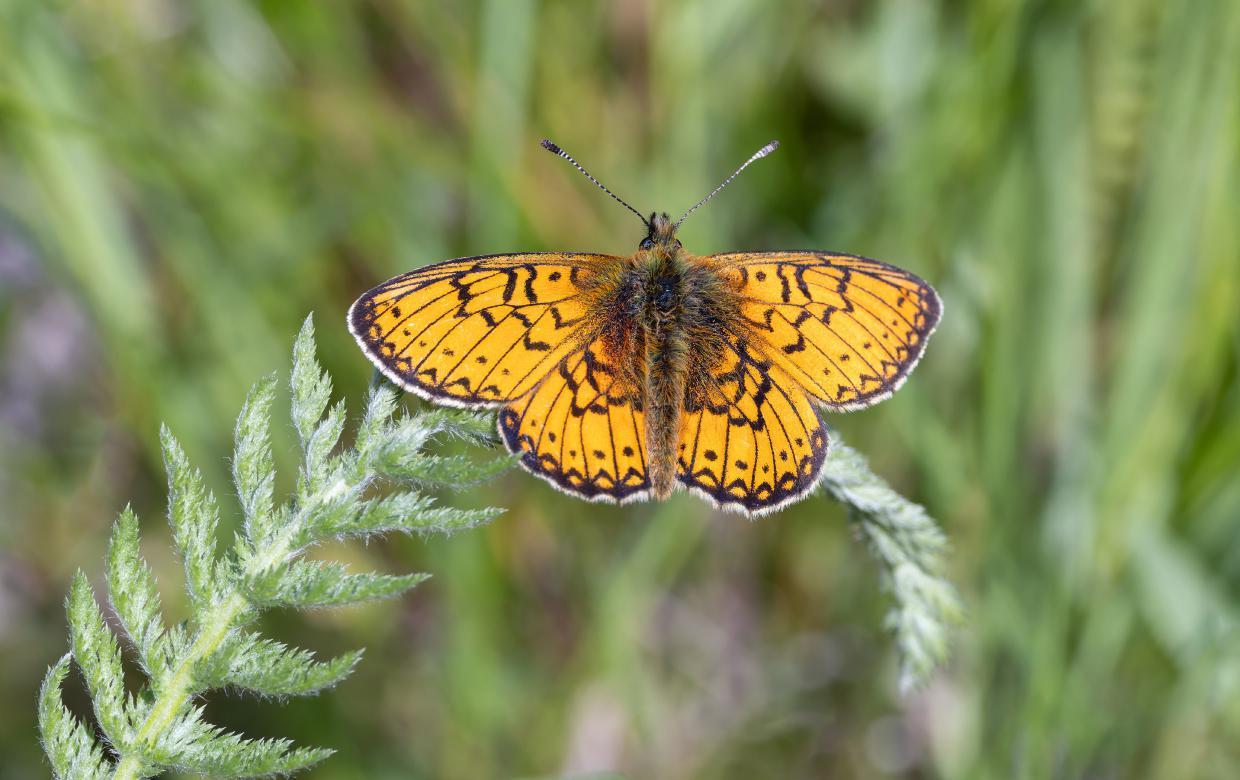
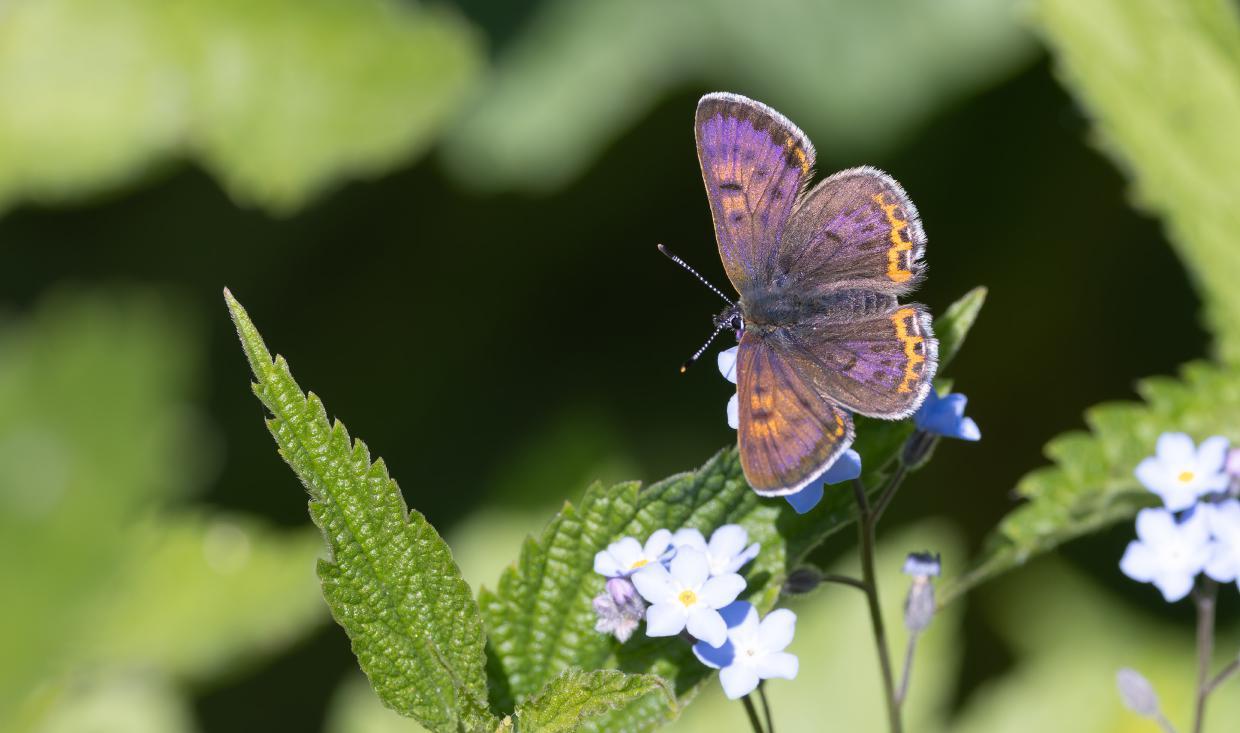
come after our morning exertions. This area is a major skiing destination in winter, so it has some unexpectedly good facilities for such a remote spot, making it a perfect destination for butterfly groups.
One of the very pleasant features of the tour was refilling our water bottles from spring water pipes. Once we had topped up our reserves, we explored some regular spots for the butterfly that would occupy our thoughts for days on this tour, the enigmatic and elusive False Comma N. vaualbum. We wondered what kind of a year it would be for it, as its numbers fluctuate. A Short-toed Eagle flew overhead, and we found some more Violet Coppers L. helle, a nice Map butterfly Arashinia levana of the spring generation and a couple of Eastern Bath Whites Pontia edusa but no sign of the ‘big one’. However, there was still plenty of time for it and we thought that the dates towards the end of the tour would usually be better anyway. Some fabulous vistas were to be had, overlooking the surrounding area of wooded valleys and grassy slopes. Standing
at the upper end of its altitudinal range at almost 1600m ASL, the False Comma N. vaualbum was in the forest somewhere down there below us!
It was already getting quite warm and moving downhill, we stopped at several spots, where there were nymphalids taking salts, most of them fresh Commas Polygonia c-album. This was promising as the butterfly flight season looked like it had caught up after one of the coldest springs in Eastern Europe in recent years. After checking the roadside all the way down for large butterflies, we stopped at our final spot from yesterday evening and explored a little further. There were lots of butterflies puddling now in the spring fed trickle that was flowing down the cart track to some old, abandoned farmsteads. There was now a couple of Chequered Skippers Carterocpehalus palaemon, as well as Dingy Erynnis targes and Grizzled Skippers Pyrgus malvae Northern Brown Argus Aricia artaxerxes was also new-for-the-trip here. One or two Large Tortoiseshells Nymphalis polychloros were
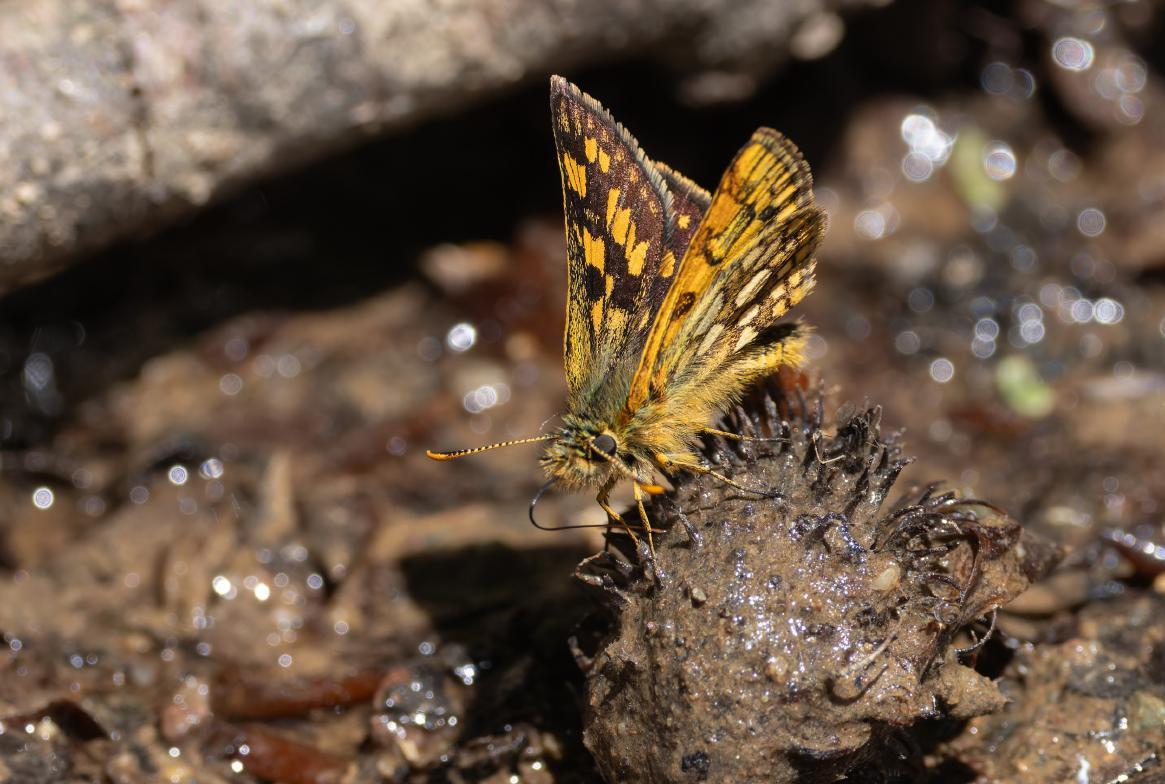
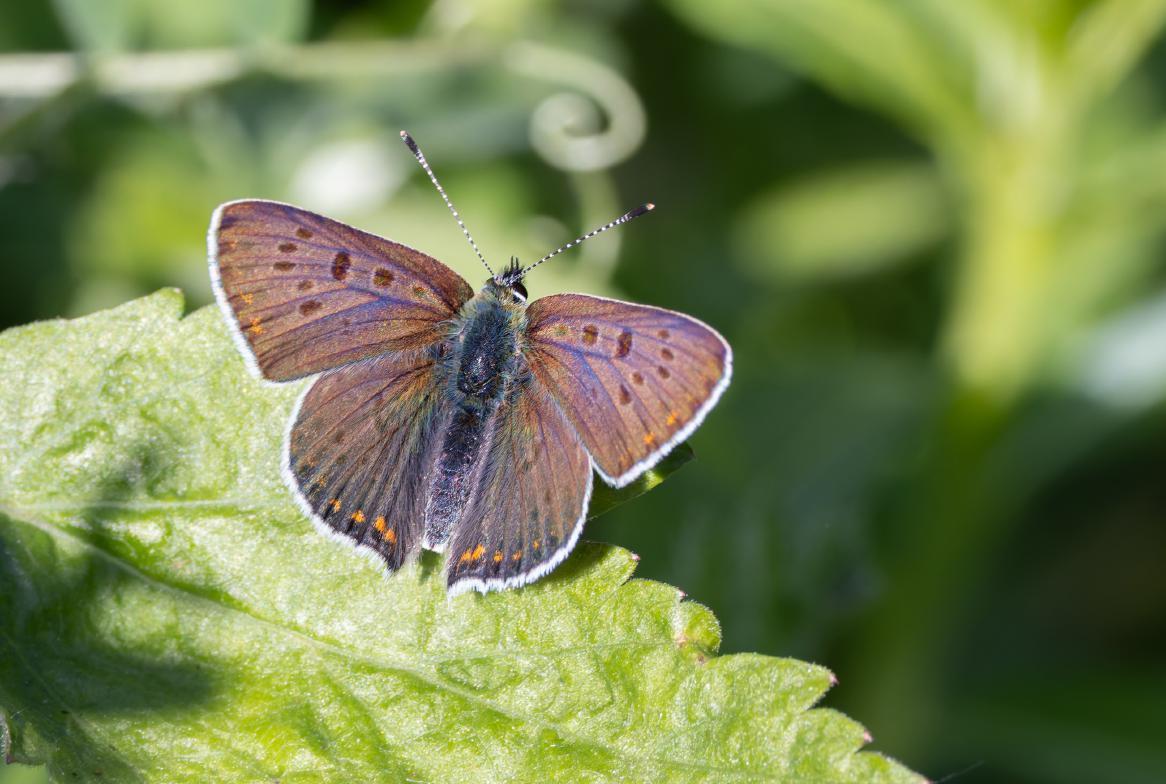
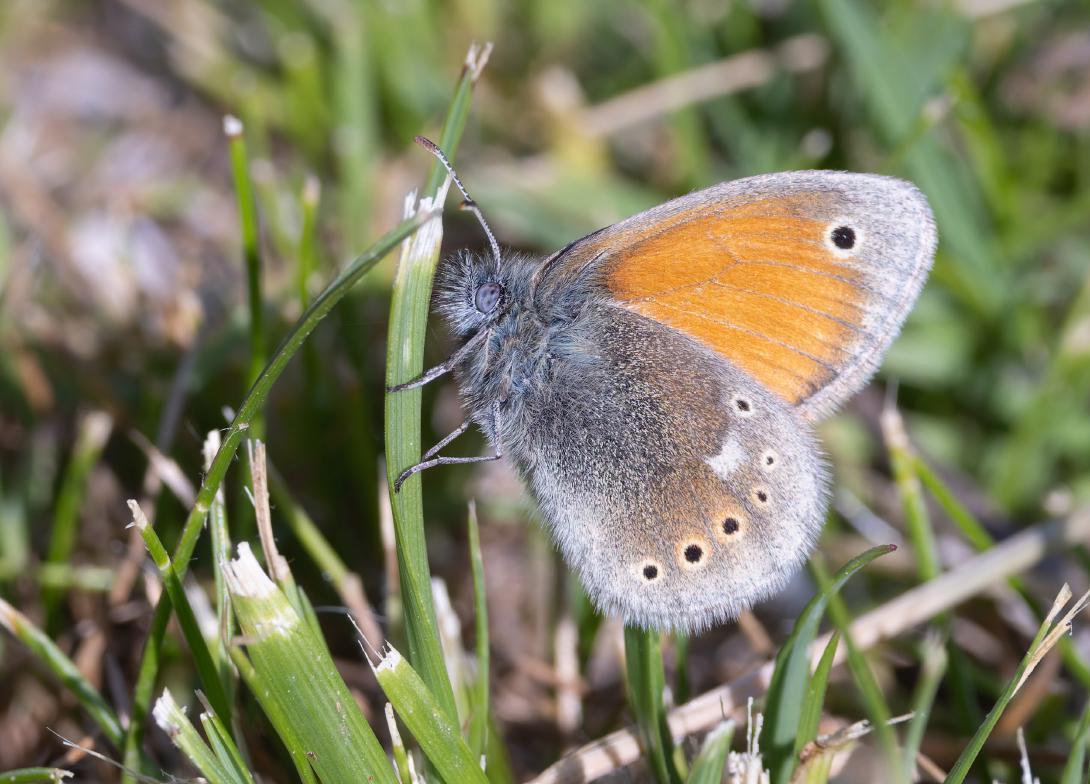
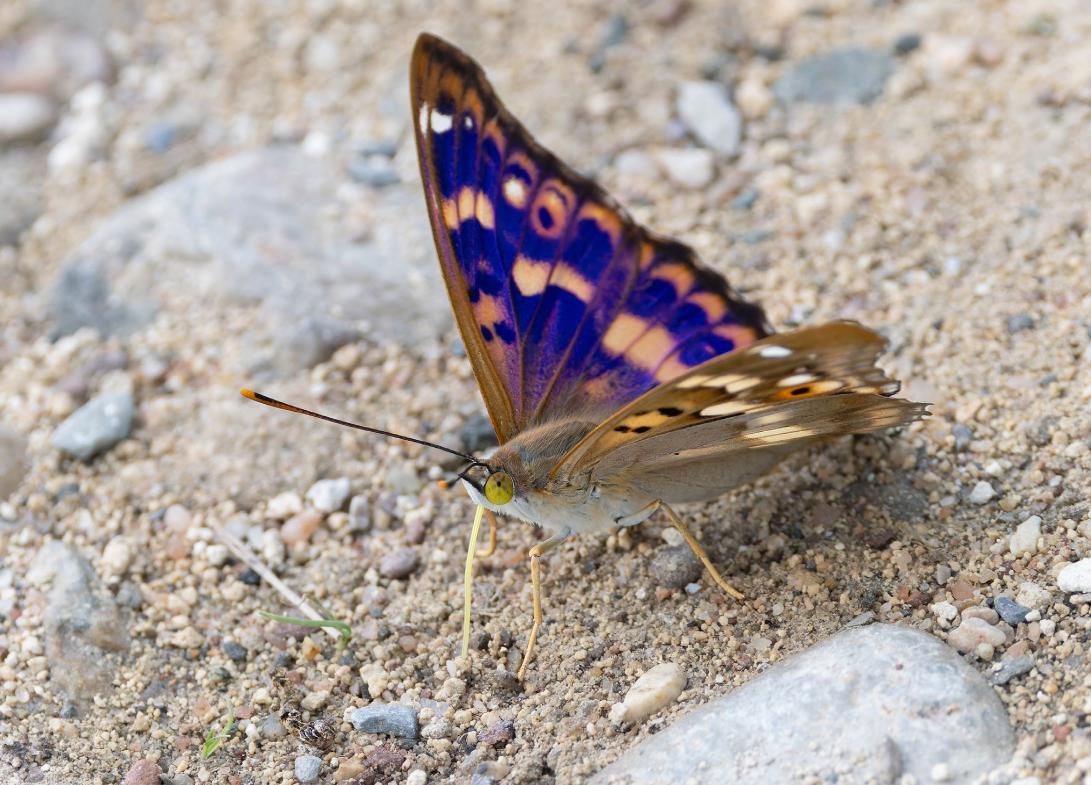
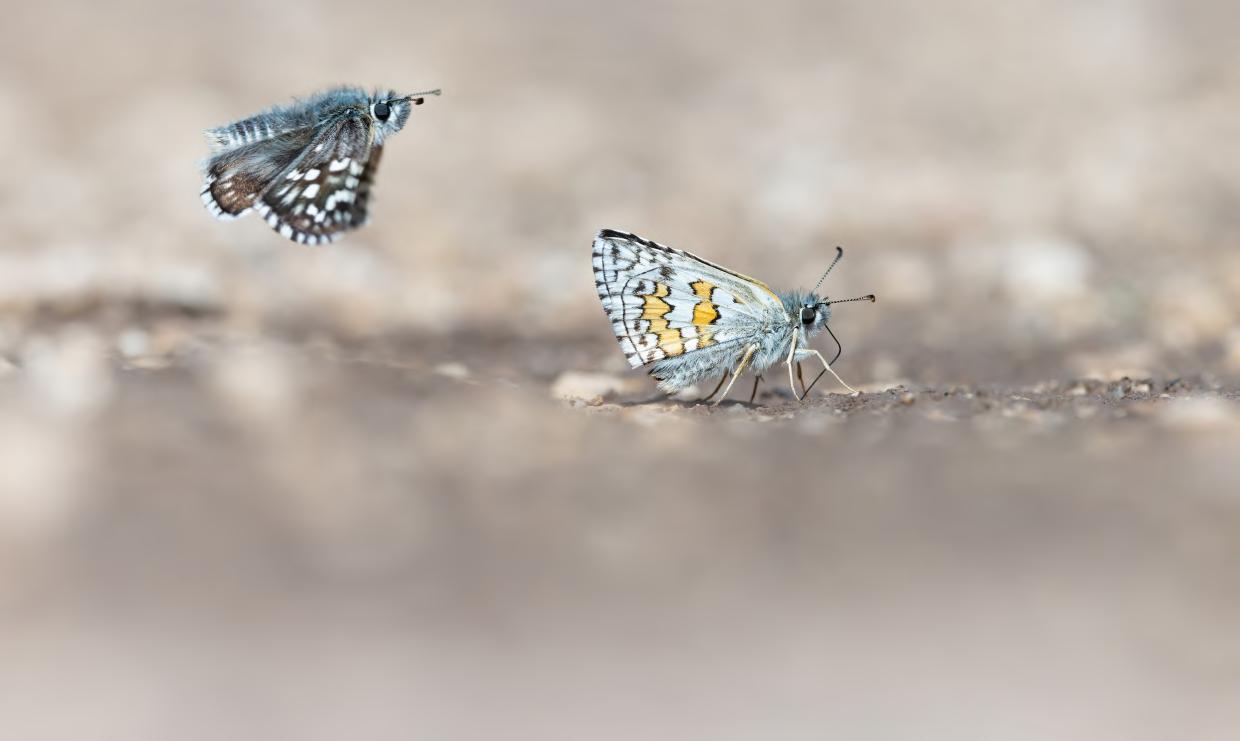
Yellow-banded Skipper (Pyrgus sidae). Page 12: Chequered Skipper (Carterocephalus palaemon), above & Sooty Copper (Lycaenia tityrus), Page 13: Eastern Large Heath, above (Coenonympha rhodopensis) & Lesser Purple Emperor (Apatura ilia) (Mike Watson)
bombing around the meadow next to the first farmstead and Marsh Euphydryas aurinia and Freyer’s Fritillaries Melitaea arduinna were the default frits at this spot. We were a lot lower now at just over 1000m ASL. We descended downhill by another 300m to a very productive cart track through a lovely deep wooded valley, where we did a more extensive hike in search of puddling nymphs. Again, this produced lots of Commas Polygonia c-album, Heath Fritillary Melitaea athalia and Common Glider Neptis sappho among the many Freyer’s Fritillaries Melitaea arduinna. Wood White Leptidea sinapsis, Mazarine Cyanirius semiargus and Green-underside Blues Glaucopsychea alexis were also new, as was the humble Peacock Aglais io, so common and widespread across Europe, yet one of the most beautiful butterflies! We covered a lot of ground finding springs here and there, but this was an error, we ought to have walked more slowly, as we would discover later in the tour! We dropped right down to the valley bottom at
400m for lunch, which included some surprisingly large salads – get ready for the generous Serbian portions! Staying down low we visited another favourite streamside puddling spot, where there was a great deal of activity and we spent most of the afternoon here watching the comings and goings. There was a lot of skipper action, including Marbled Carcharodus lavatherae and Yellow-banded Pyrgus sidae among the numerous Essex Thymelicus lineola and Small Skippers Thymelicus sylvestris (what are we doing calling a widespread European butterfly ‘Essex’?). Some fantastic views were had of Scarce Swallowtail Iphiclides podalirius, towering over a carpet of skippers as it took salts. Black-veined White Aponia crataegi was at its peak huddled together on the mud. We could see the sad remains of many others taken out by a car tyre here. Among the many common fritillaries puddling was a couple of dark False Heath Fritillaries Melitaea diamina, another Marbled Fritillary Brenthis daphne and Knapweed Fritillary Melitaea phoebe.
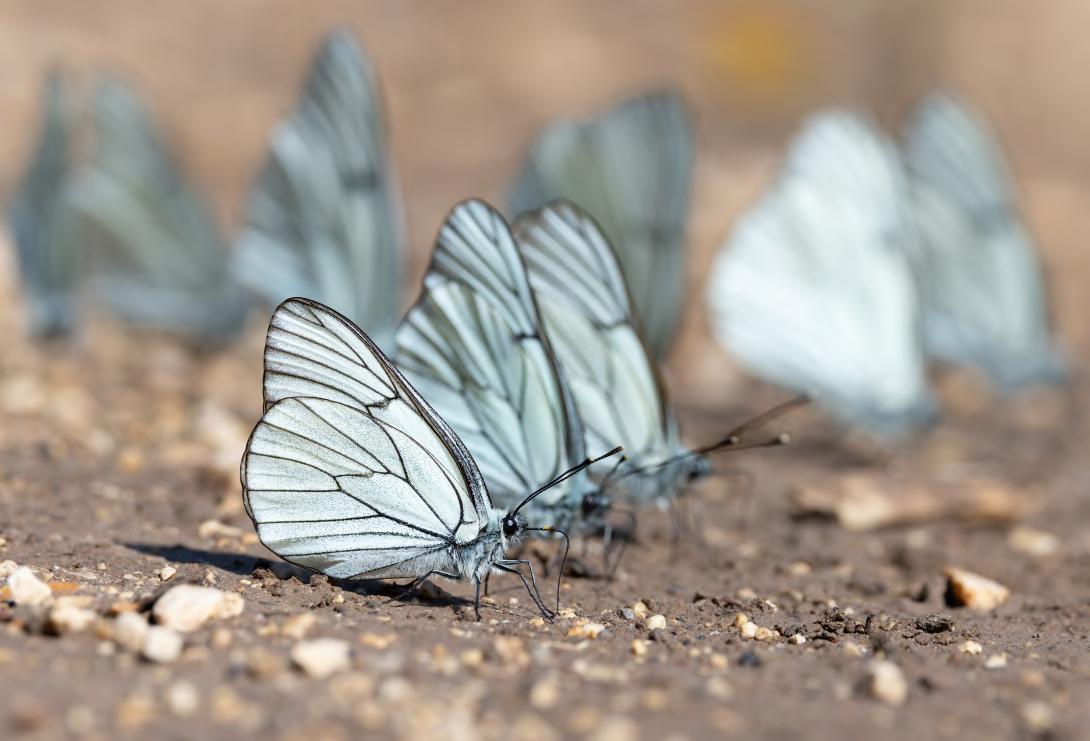
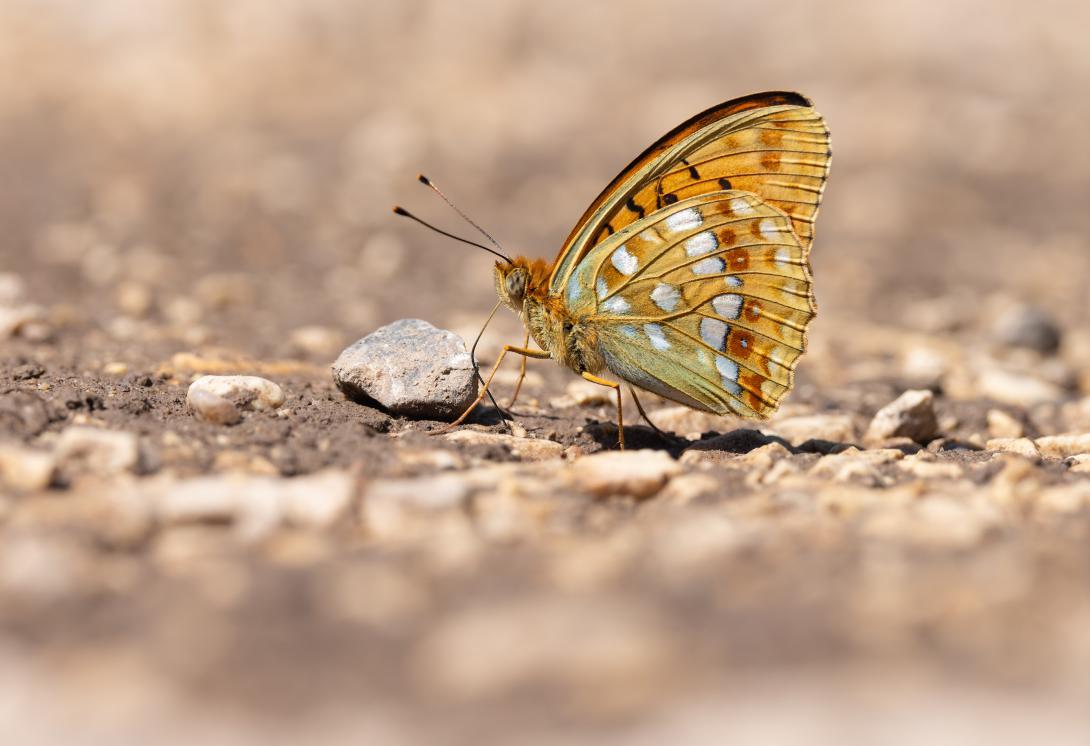
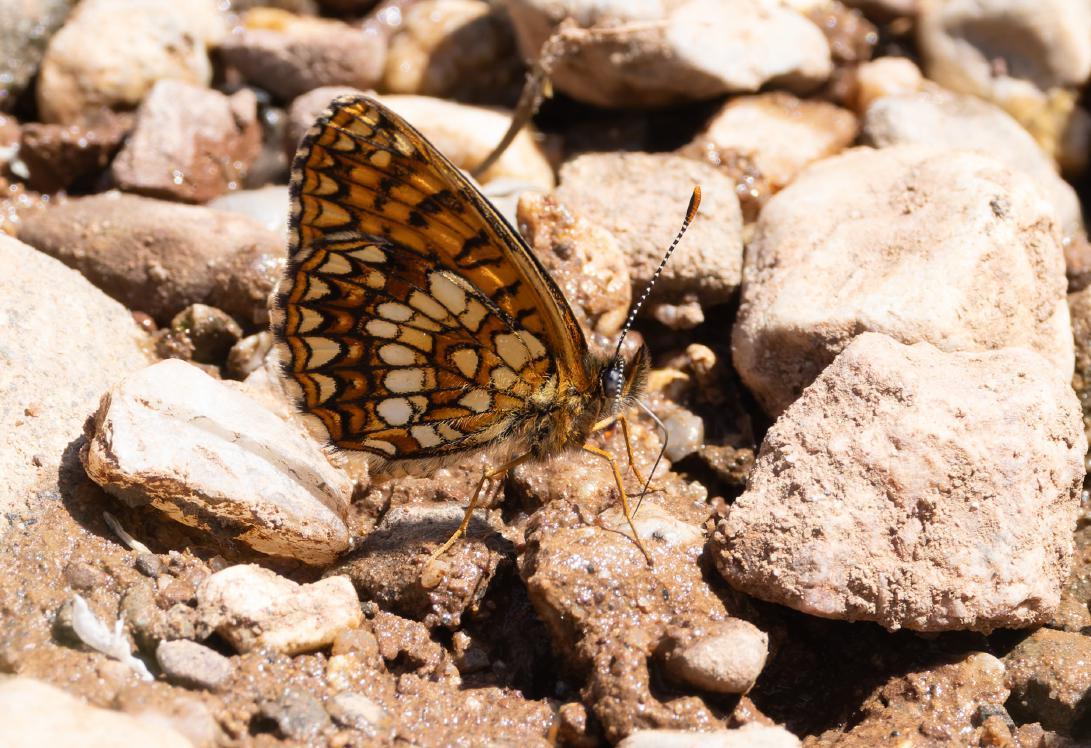
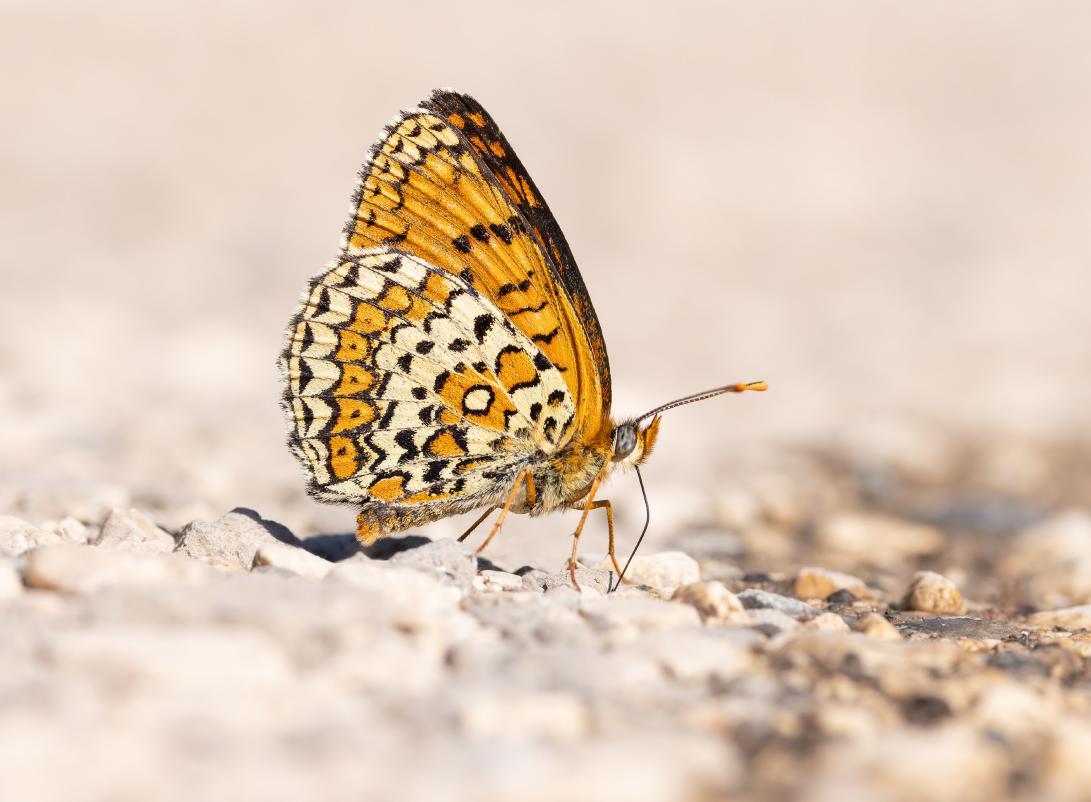
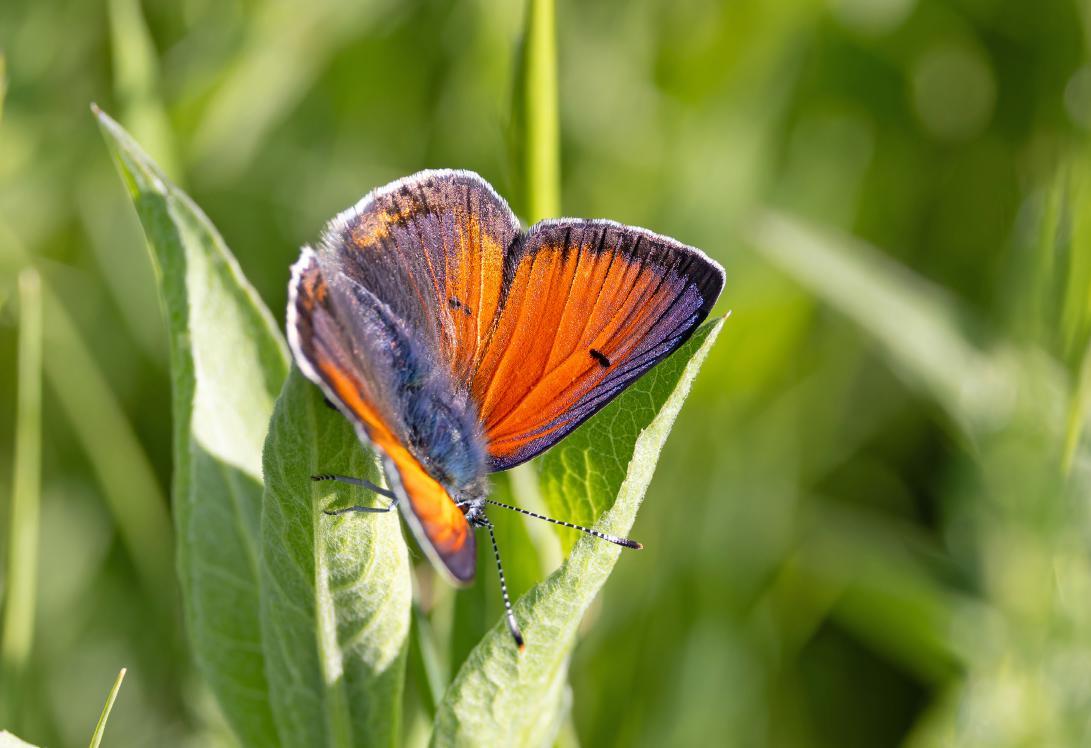
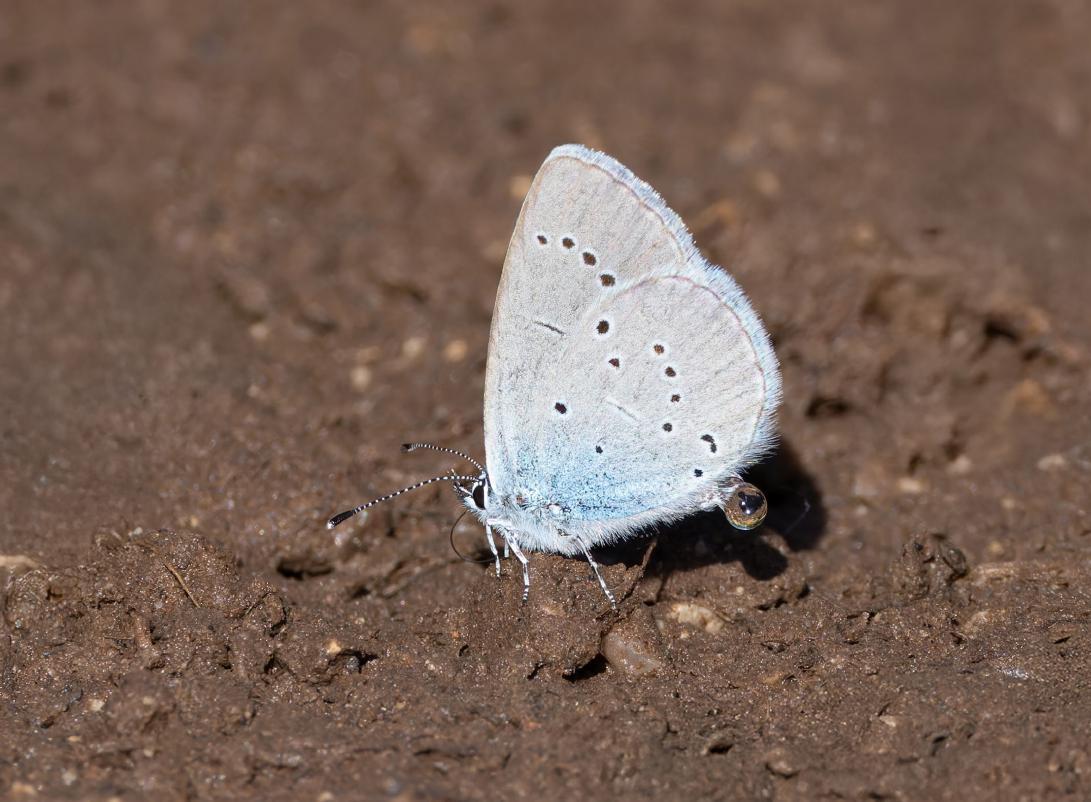
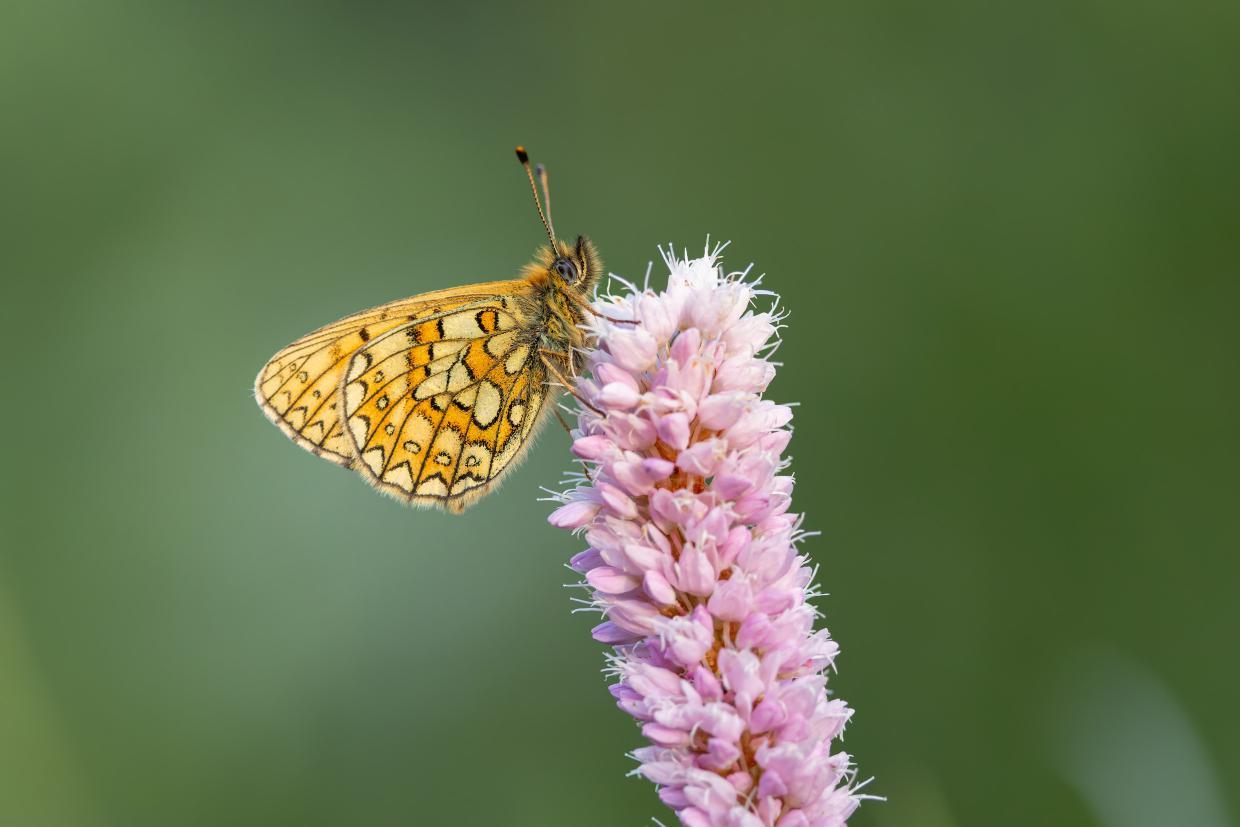
Even hairstreaks were visiting the mud on a hot afternoon. We saw Green Callophrys rubi and Ilex Satyrium ilicus on the ground here. Clouded Yellows Colias crocea and a couple of male Brimstones Gonepteryx rhamni flitted by. Our attention now turned to identifying the blues, which had started to appear, it is always a challenge to read their coded underwing patterns. We spotted Osiris Cupido osiris, the tiniest blue with blue upper wings, as well as Chapman’s Blue Polyommatus thersites, among the more numerous Amanda’s Polyommatus amandus and Mazarine Blues Cyanirius semiargus. Down by the stream itself, in a more natural setting, White Admirals Limentis camila visited the track along with a wonderful clytie form Lesser Purple Emperor Apatura ilia, ginger and purple is a daring combo! Such a profusion of butterflies is not something we are used to seeing in western Europe – it had been a mind-blowing introduction to butterflying in the Balkans!
It was time to make our way back to Babin Zub, as the evening shadows crept up the hillsides, leaving only the higher meadows bathed in golden sunlight. We made a couple of stops, first at our usual Balkan Copper Lycaena candens site, where we quickly struck gold with a fresh male. Unfortunately, a couple of our wandering folks did not connect, they would have to wait for a couple of days to get this one back. For those who did see this fine creature, the evening sun positively lit up the iridescent leading edge of its forewing to dramatic effect. If only they posed upright a little more often, like so many coppers, they have a habit of perching face down. Our last stop was back at the start, the Bog Fritillary B. eunomia bog, where we were hoping for some sleepy insects to pose in the evening sun. They duly obliged, including on pretty bistort heads. Our final sighting of the day was a smoky black Woodland Ringlet Erebia medusa. What a first full day in the Balkans it had been, we had recorded an effort-
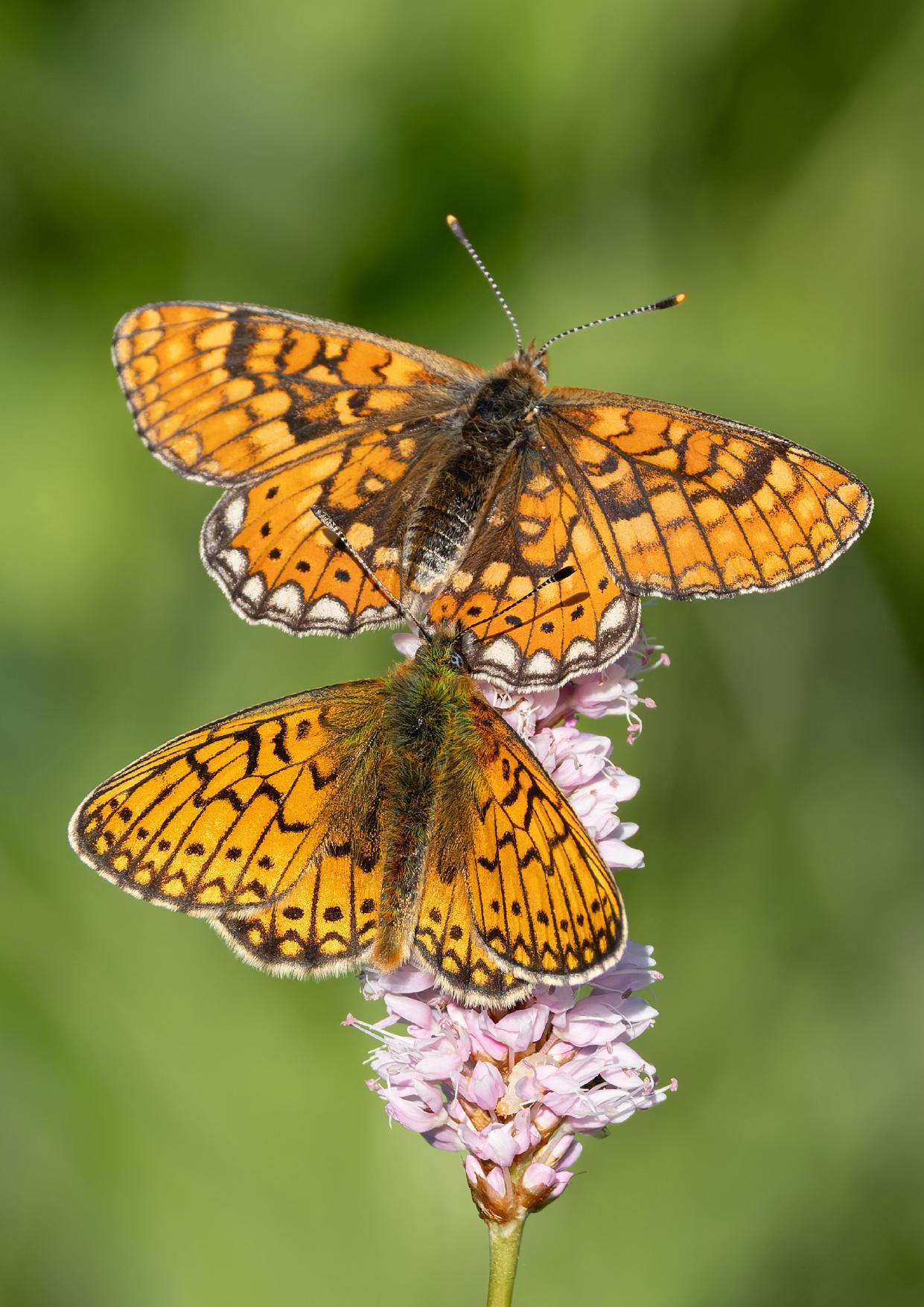
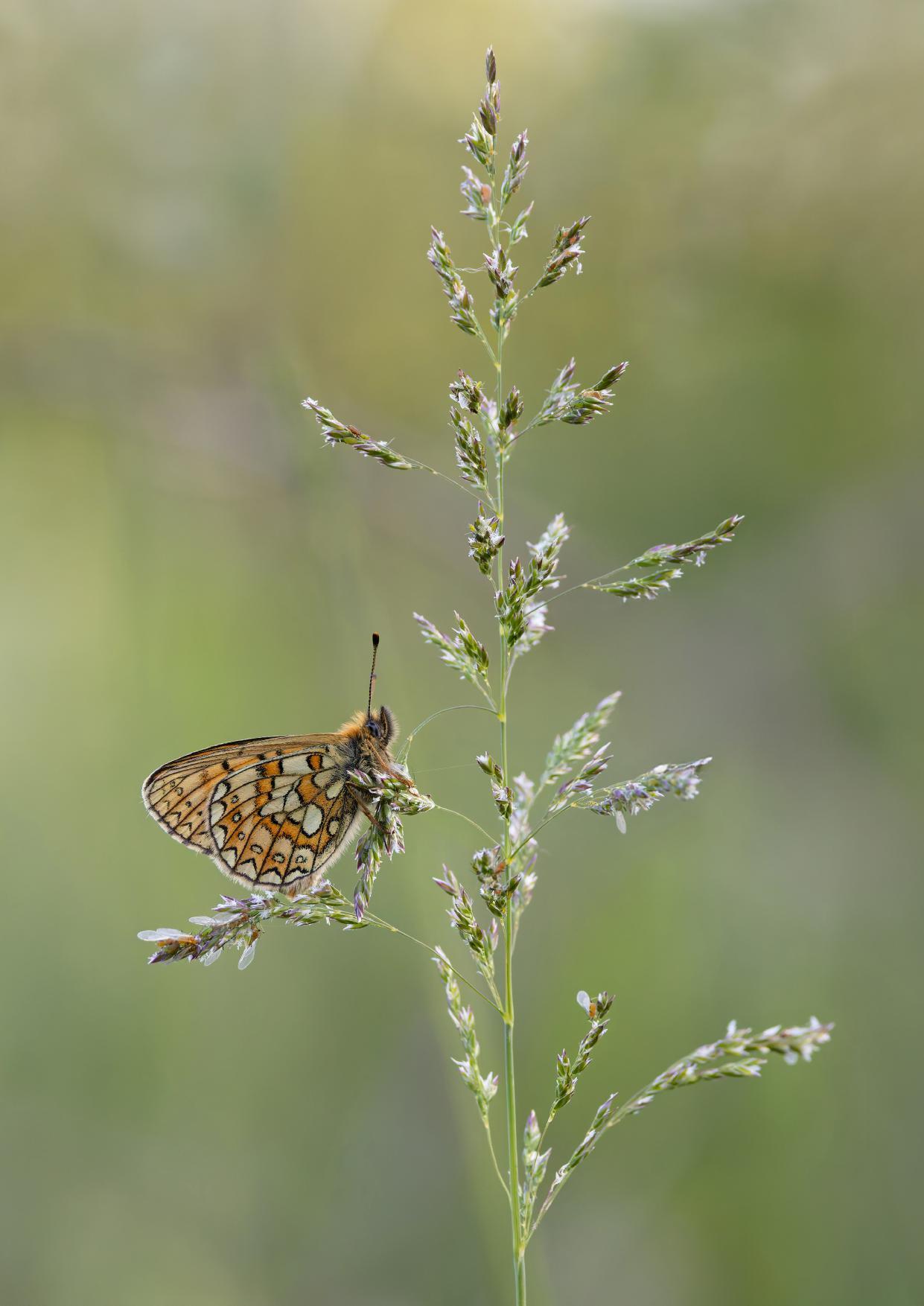
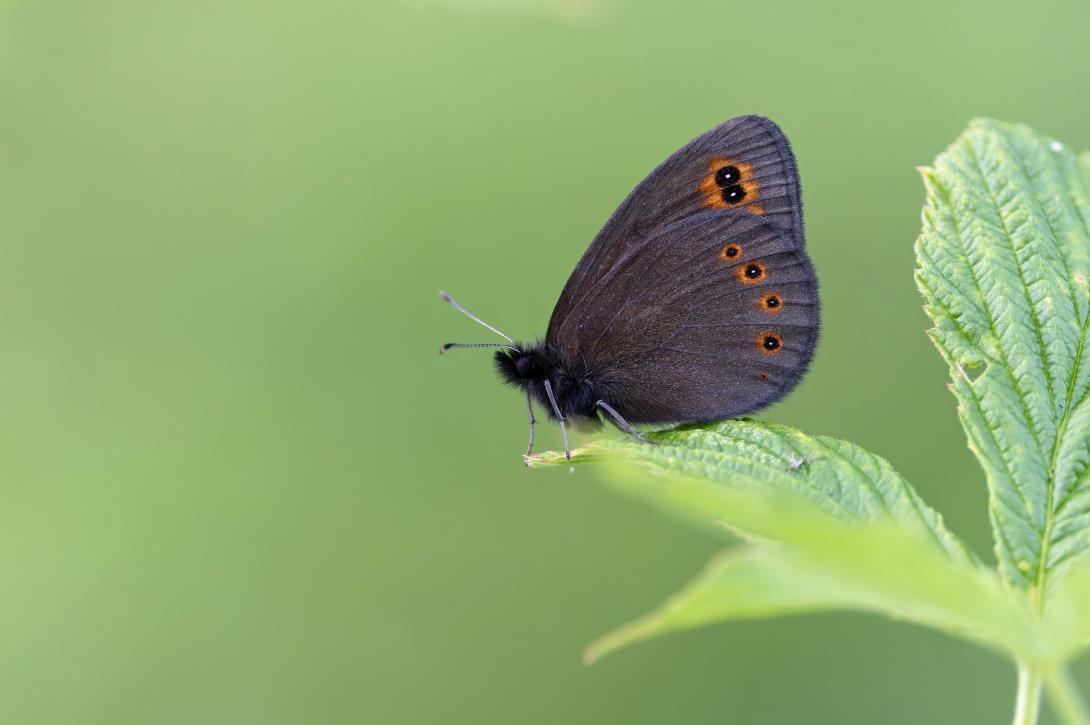
less 63 species, more than a lifetime’s worth in the UK in a single day and some very special ones too. This tour is more mentally than physically exhausting! The walking is mostly very easy but the butterfly diversity is high. We retired to our rooms looking forward to another action-packed day of butterfly hunting. The weather was kind to us throughout, never peaking above 30 degrees Celsius, which was more than enough to ensure plenty of activity but not too hot to supress it, as can happen in the middle of the day in warmer spells. Our usual pre-breakfast routine for the keenest among us became a walk around the extensive bog nearby our hotel. Flight activity started at around 7AM on sunny days but roosting Bog B. Eunomia and Marsh Fritillaries Euphydryas aurinia could be found in the sea of bistort before then. Over the coming days we had some lovely encounters with them. Other fritillaries included Heath Melitaea athalia, Nickerl’s Melitaea aurelia and Lesser Spotted Melitaea trivia and there were some fresh Bulgarian Ringlets
Erebia orientalis too, a very restricted range species and one of our main targets. The chestnut markings radiating from the eye spots on its upper wings were fabulous! A fresh male Eastern Baton Blue Pseudophilotes vicrama caused a stir, hoping for its lookalike, rarer cousin, Blue Argus Aricia anteros, but after we returned and checked its underside, it was ‘just’ the commoner species. A Bright-eyed Ringlet Erebia oeme was a bonus thanks to our return though. There were birds breeding in the wonderful bog too – Red-backed Shrike, Whinchat and Tree Pipit were all singing as was a Corn Crake, rasping deep within the flower beds. We zoomed downhill quickly today, heading much further to the southeast, towards the Bulgarian border, where we explored another gorgeous, wooded valley. This was another possibility for False Comma N. vaualbum, as was virtually everywhere we went, and although we drew another blank for it, we did see the most spectacular butterfly of the whole tour. From the excitement levels when she spotted it, we
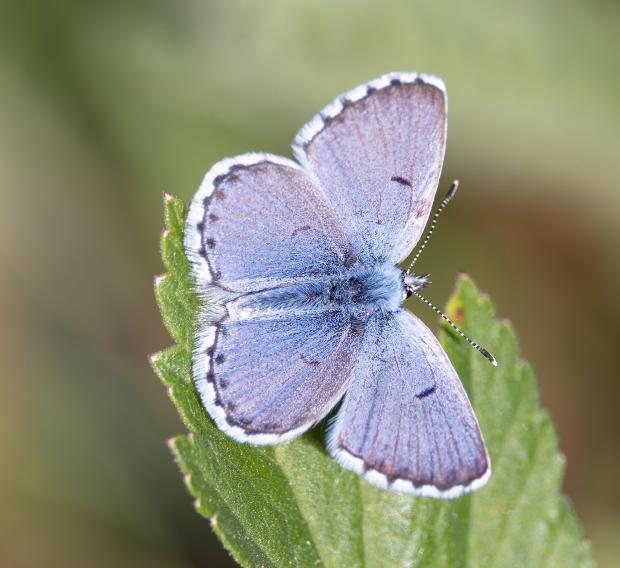
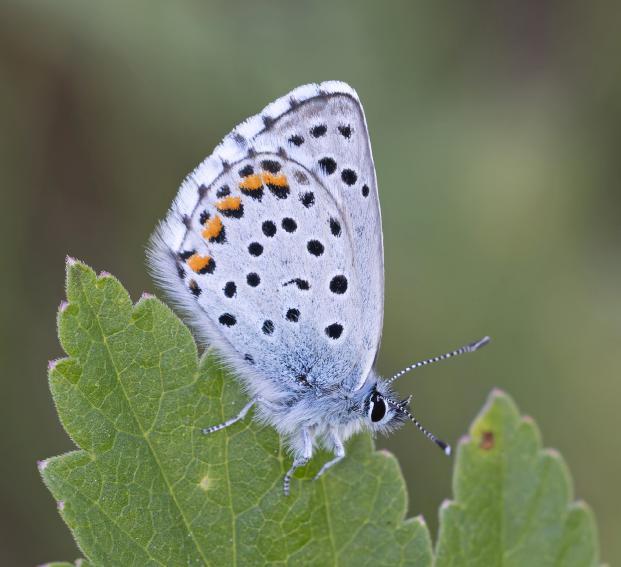
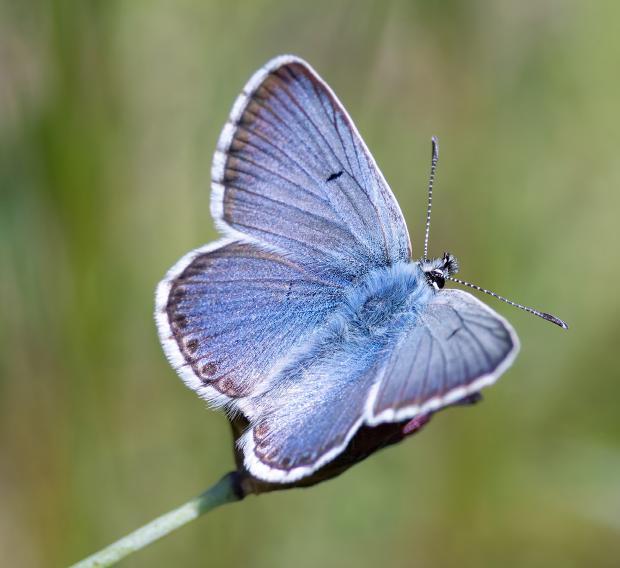
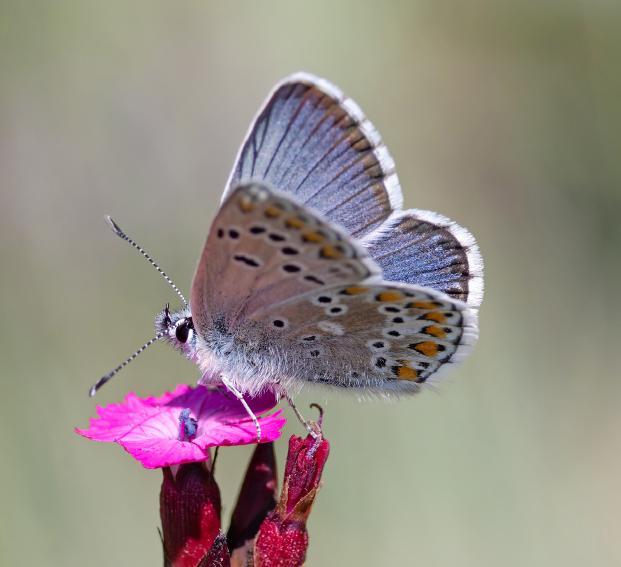
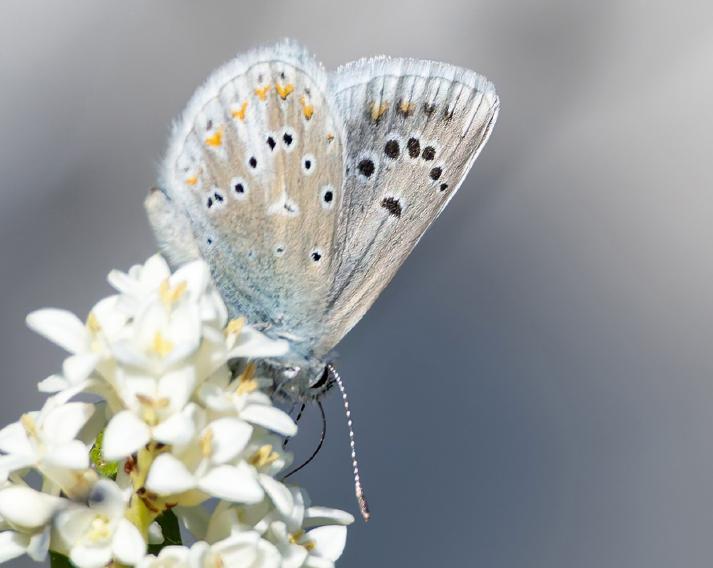
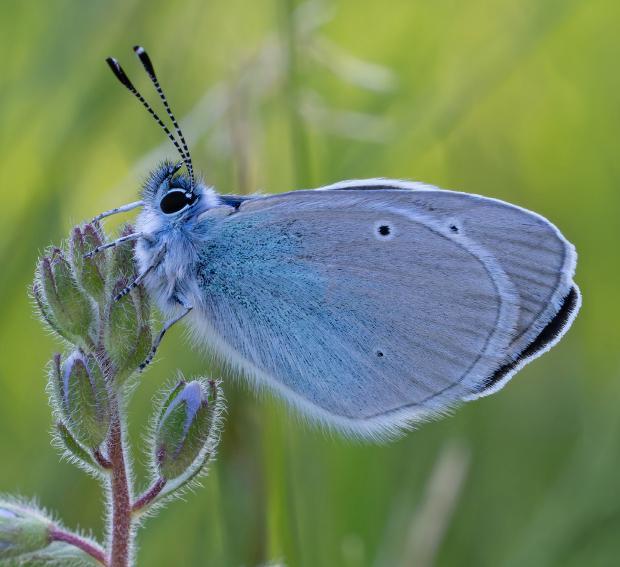
think it was Jasmin’s most wanted. The all dark tremulae form of Poplar Admiral Lementis populi! What an incredible insect it is, the closest thing we have to a birdwing in Europe! The fact that it was frequenting a pretty cascade made it more spectacular. It was very obliging if approached slowly, on the ground and on low perches in the surrounding trees, it even landed on a couple of us, including taking sweat from Mike’s hand. As for its velvet dark blue colouration bordered by carnelian jewels, simply stunning!
Another exciting encounter today came in the form of a real male Blue Argus A. anteros vigorously defending its territory on a tiny remnant patch of flowery meadow against anything that flew by, large or small. Happily, this one had the genuine buff underwing background, small white triangular gap in the lunules and the black dot ‘argus colon’ mark. Its upper wings were as pale as a Chalkhill Blue Lysandra coridon and gleamed in the sunshine. Redemption! Blues were more in evidence today and we added Adonis Lysandra bellargus, as well
as more Osiris C. osiris, Eastern Baton P. vicrama, Green-underside Glaucopsychea alexis, Mazarine Cyanirius semiargus and Amanda’s Polyommatus amandus. Among the now familiar nymphs we had some nice looks at Hungarian Glider Neptis rivularis and finally a second Poplar Admiral Lementis populi, also tremulae, which is the prevalent form here, whizzed past us at a puddling spot but did not stop.
Very happy with our successes, we pressed on further southeast to a grassland spot known as a Spinose Skipper Muschampia cribrellum locality. We scoured the hillside and the bottom of a limestone gorge without any luck for it but we did have some other very nice pick-ups in the form of Safflower Skipper Pyrgus carthami, Pale Clouded Yellow Colias hyale, Duke of Burgundy Hameris lucinia (late flying and another exciting moment for Jasmin!), Turquoise Blue Polyommatus dorylas, Chestnut Ceononym-
Poplar Admiral, this page & pages 24-27 (Limentis populi). Previous page: Top: Eastern Baton Blue (Pseudophilotes vicrama), middle: Blue Argus (Aricia anteros). Bottom left: Turquoise Blue (Polyomatus dorylas) & bottom right: Green-underside Blue (Glaucopsyche alexis) (Mike Watson)
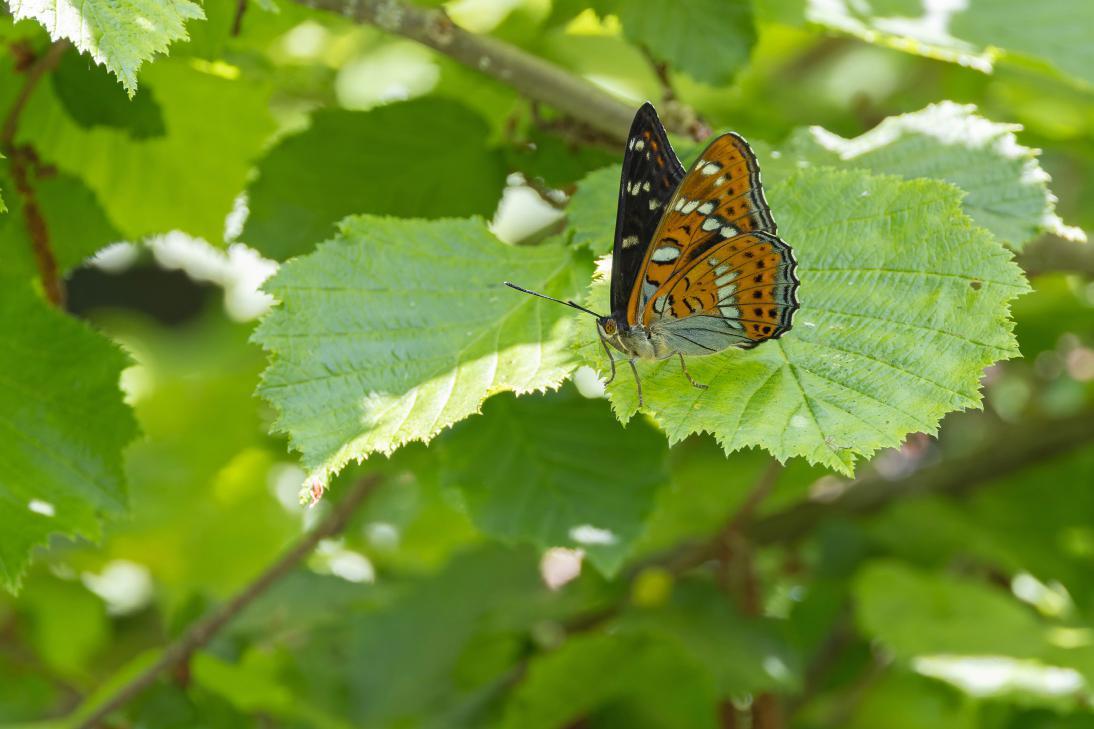
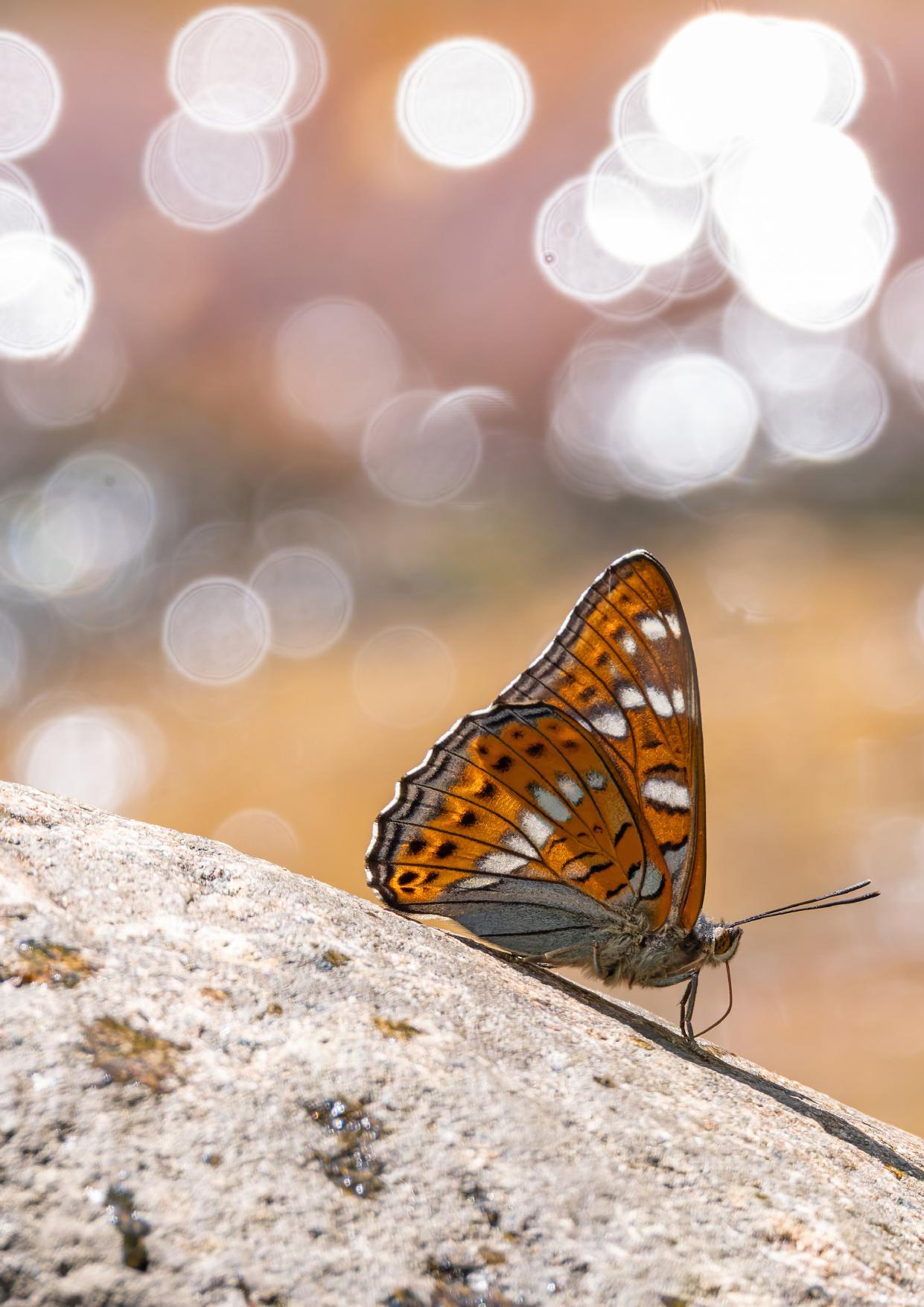
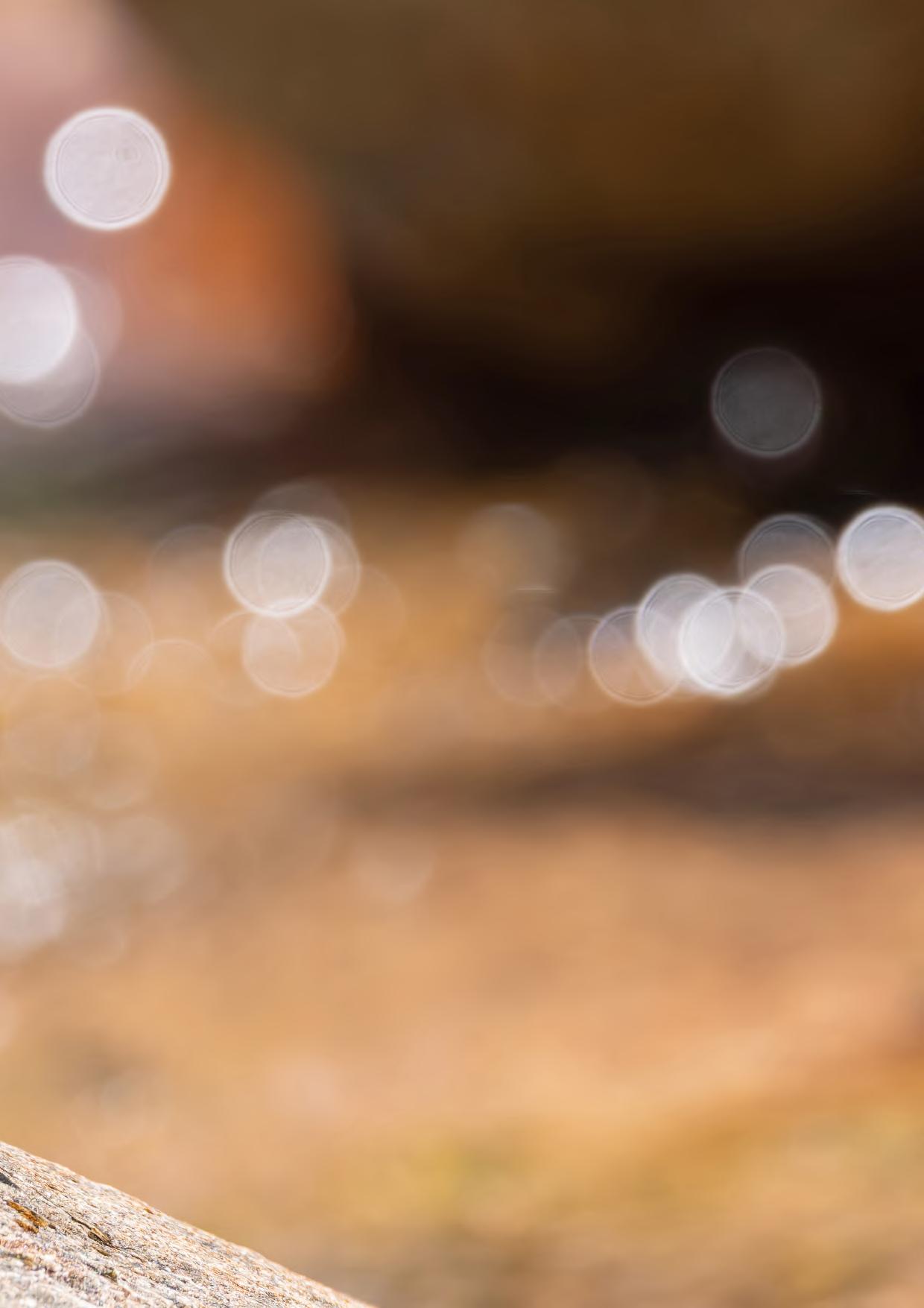
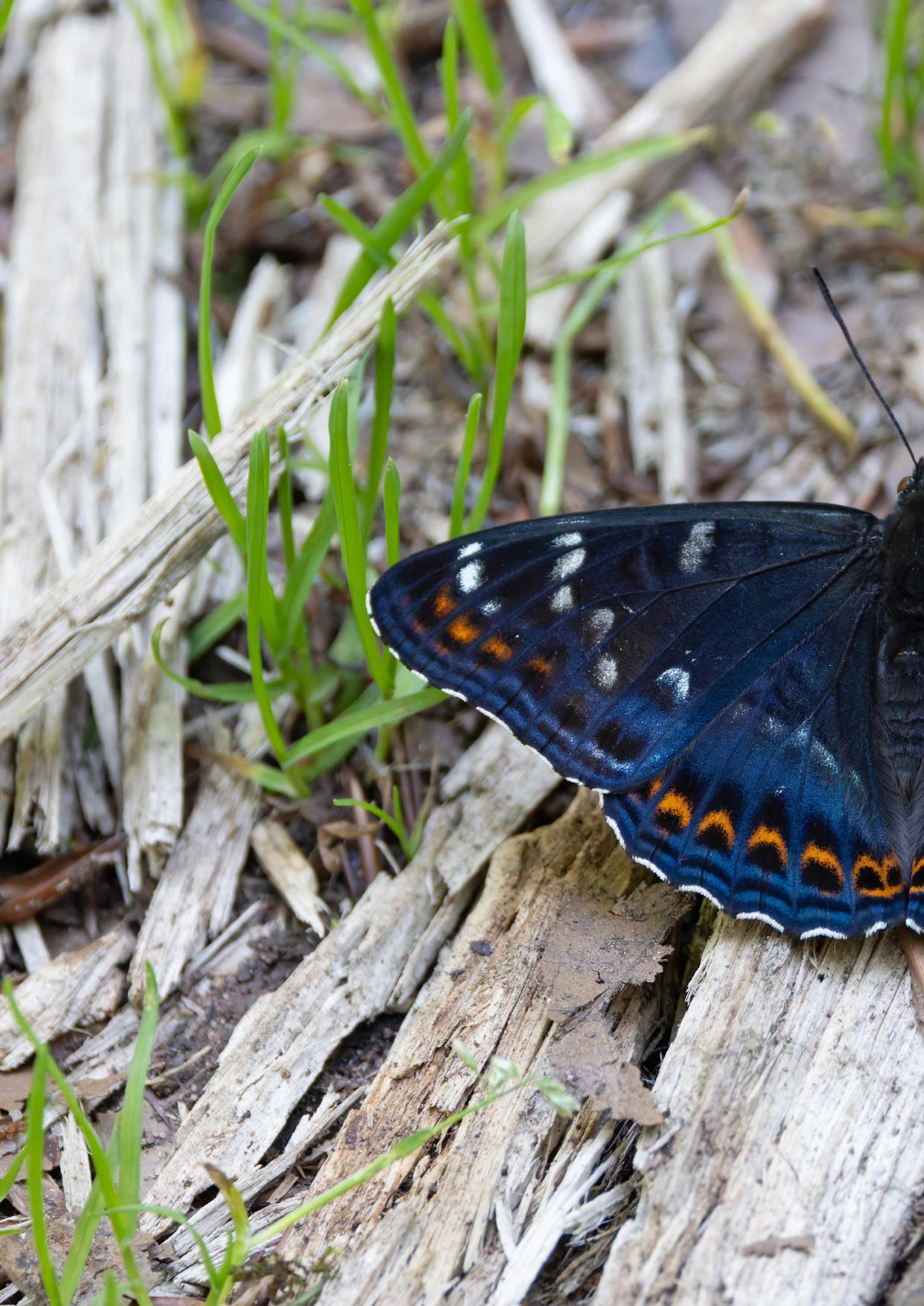
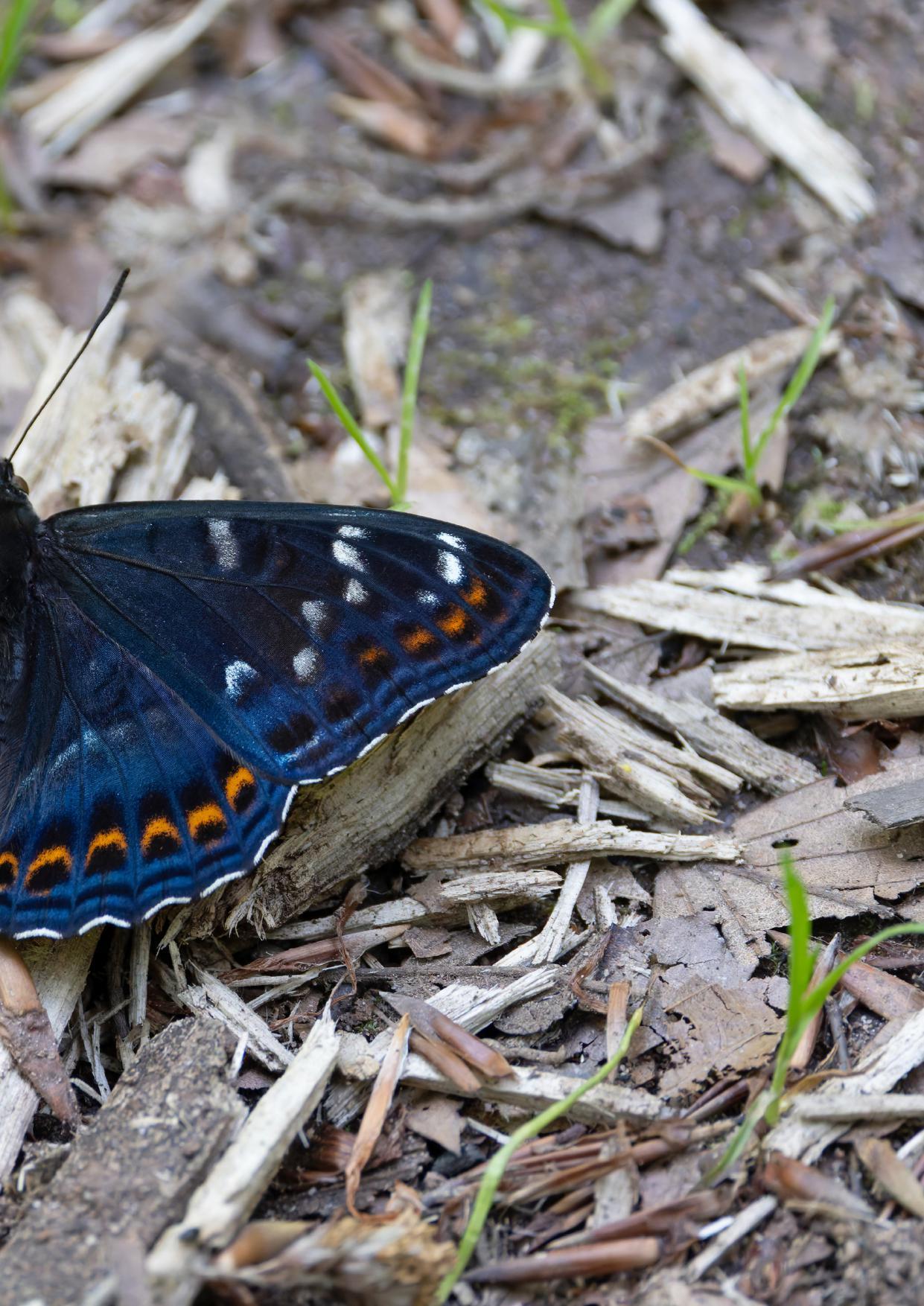
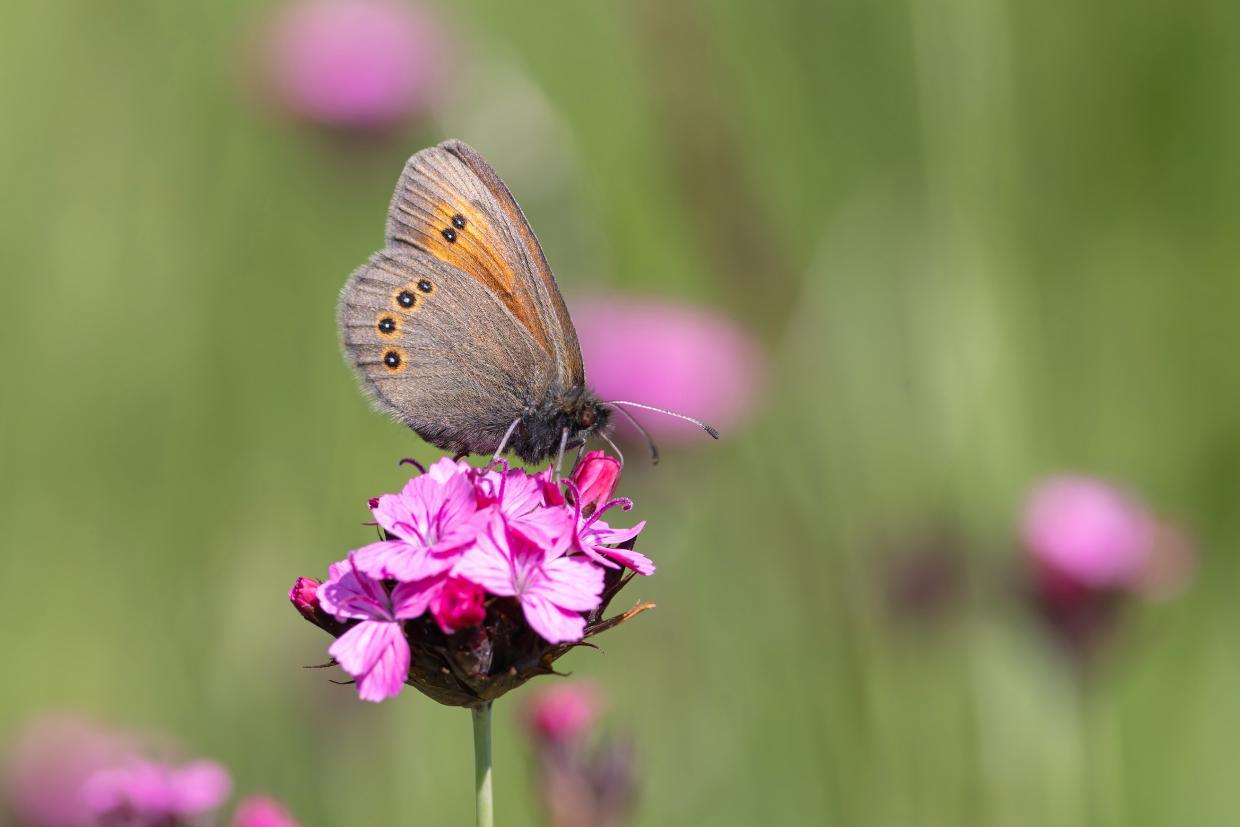
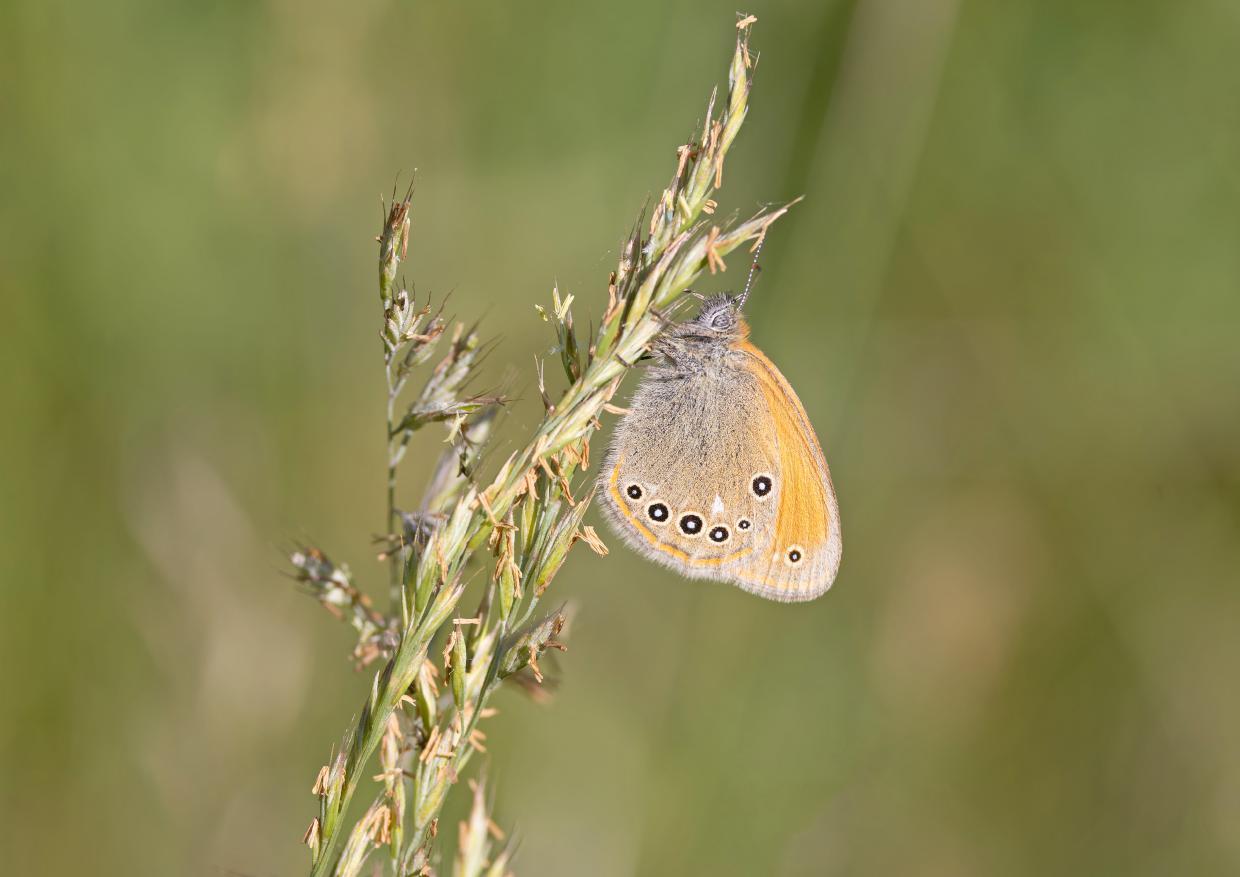
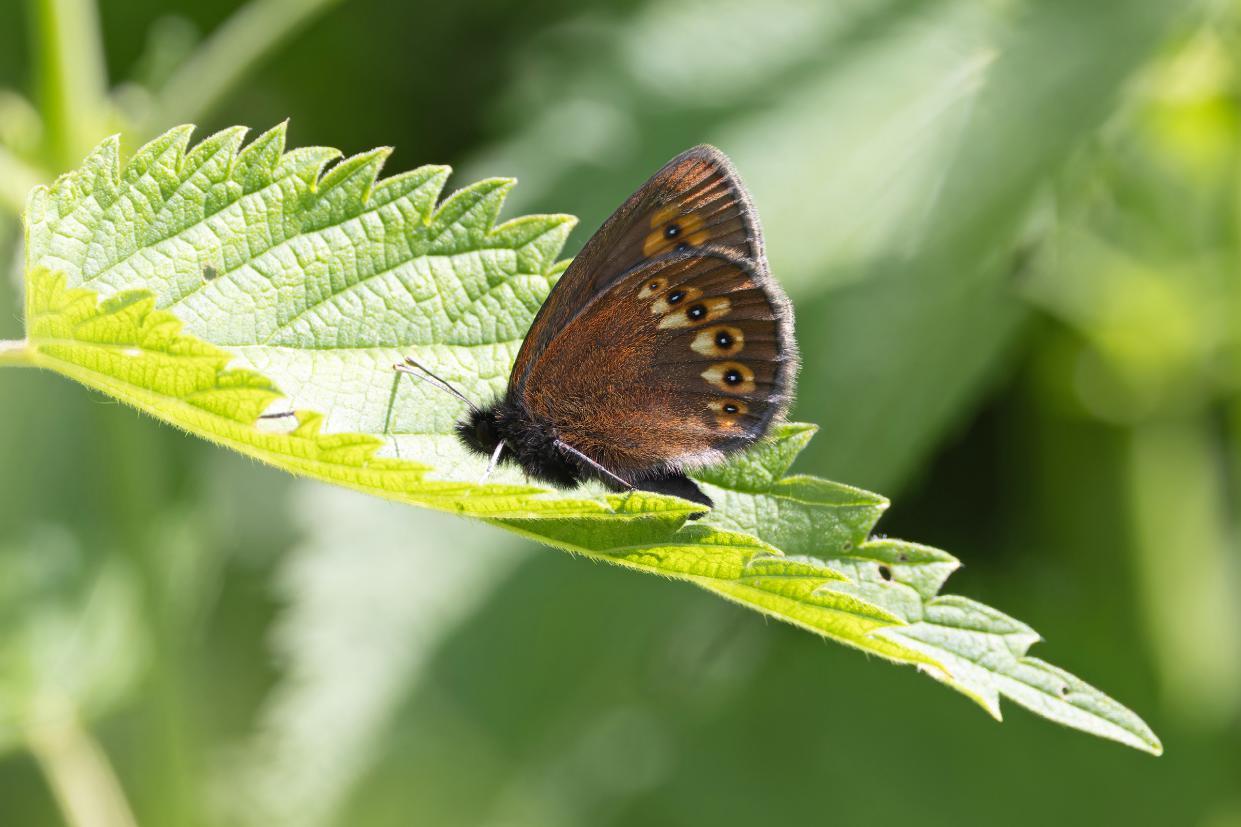
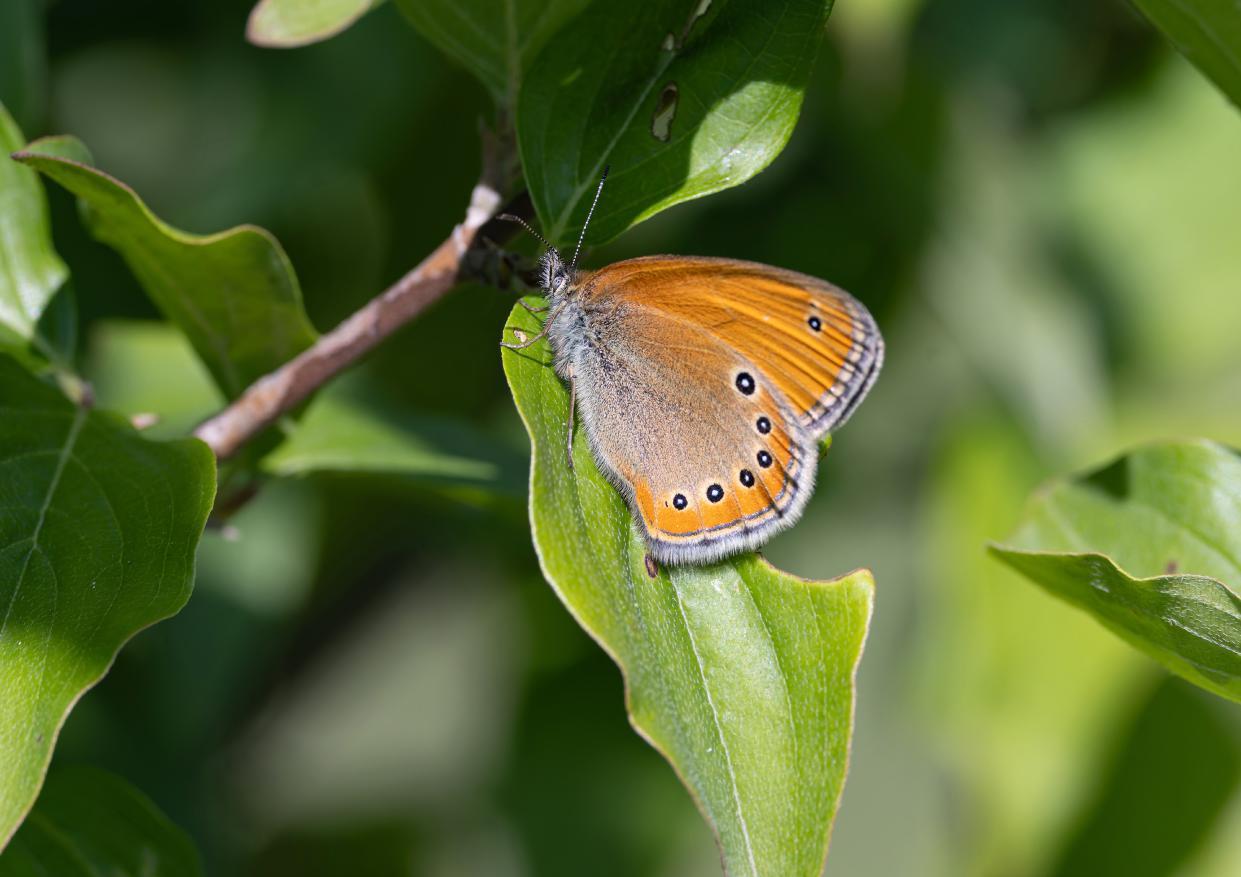
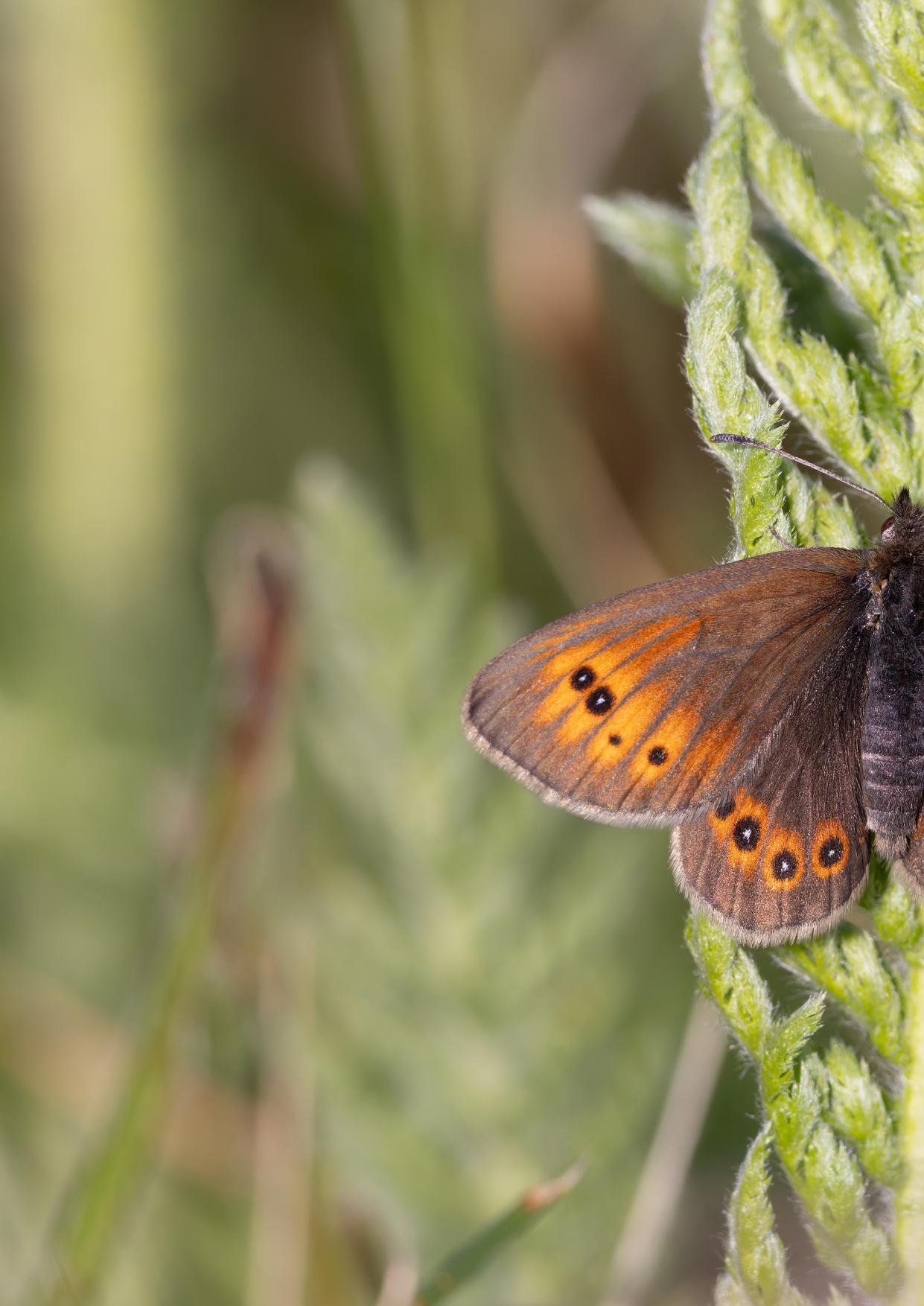
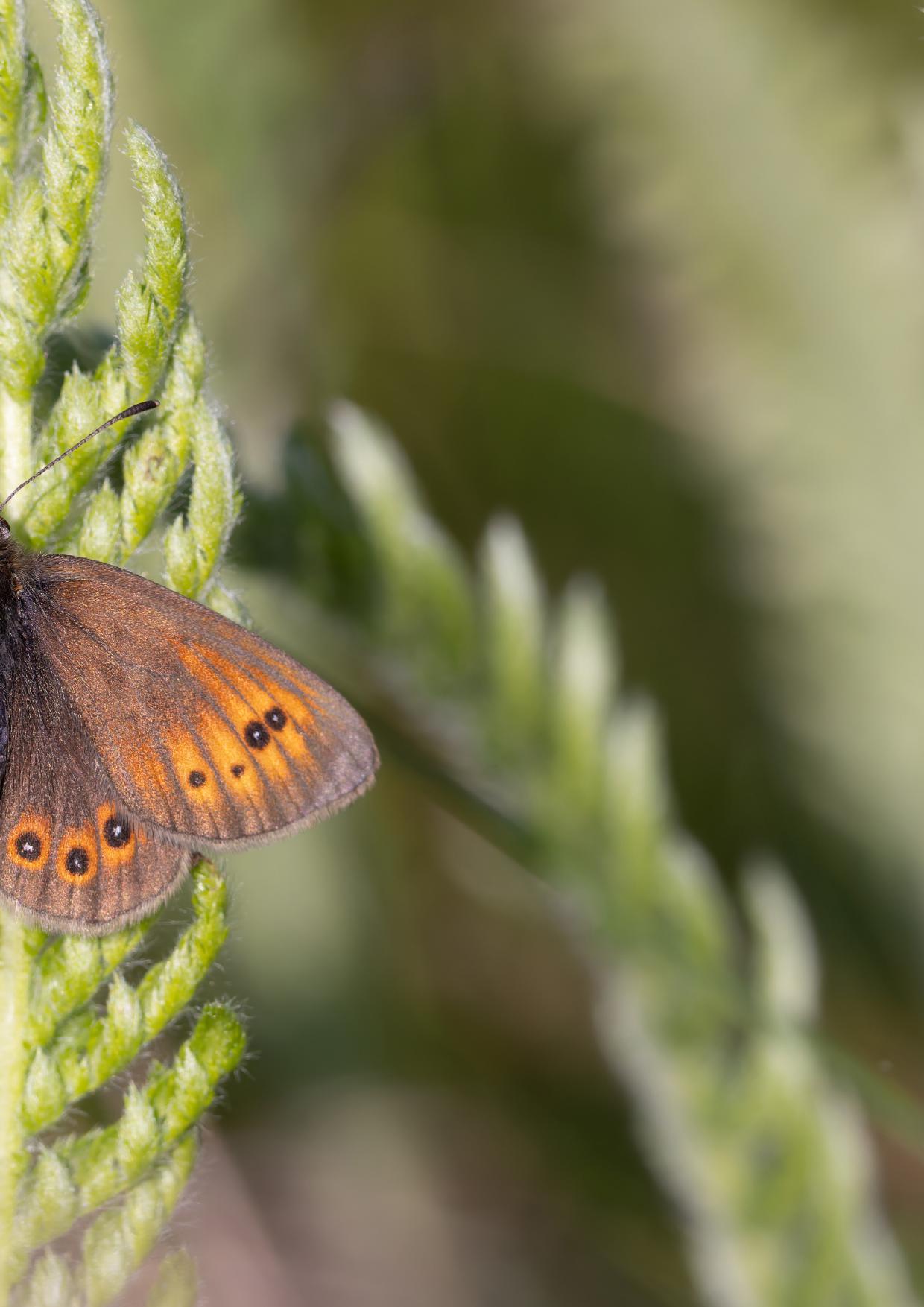
pha glycerion and Russian Heaths Ceononympha leander and a very fresh Almond-eyed Ringlet Erebia albergana (they would soon be the dominant ringlet in these meadows). The local ice-cold spring water was very welcome when we returned to the car. This was the furthest southeast we would venture, and we could see the mountains of Bulgaria looming in the distant haze. Chocolate pancakes and ice cream to celebrate was in order! Our final stop of the day was a little roadside meadow north or Pirot, where a profusion of Black-veined Whites Apora crataegi was gathering to roost. Ten or more on the same flower head! In the evening sunshine we enjoyed some very nice views of Spotted Melitaea didyma and Freyer’s Fritillaries Melitaea arduinna, as well as an all-too-brief Hungarian Skipper Spialia orbifer, which evaded the cameras. Huge, sinister hornets in hunting mode, cruising low through the grass of the meadow made one watch one’s step a little more carefully! It had been another fantastic day in the Balkans and as the sun
set dusty pink, we made our way back up the mountain. It had not rained for weeks. Time was ticking away now, and we turned our attention a little more seriously to the search for False Comma N. vaualbum. After breakfast we looked around Babin Zub hotel, where we found another spot for Violet Copper L. helle, they are doing well here! A Broad-bordered Bee Hawkmoth Hemaris syra and a Northern Wall Brown Lasiommata petropolitana were nice distractions but no big one again, so we headed downhill. We spent the morning at a couple of new spots a little to the west and at lower altitude. Both had very nice fords, leading to flowery abandoned meadows. The first was more picturesque and featured our first Marbled White Melanargia galathea, a couple of Large Tortoiseshells Nympahlis polychloros and a fly-by tremulae Poplar Admiral L. populi (there was plenty of its host tree, also of the same name Trembling Poplar here). The meadow held both Large Lycaena dispar and Purple-shot Coppers Lycaena alciphron, the
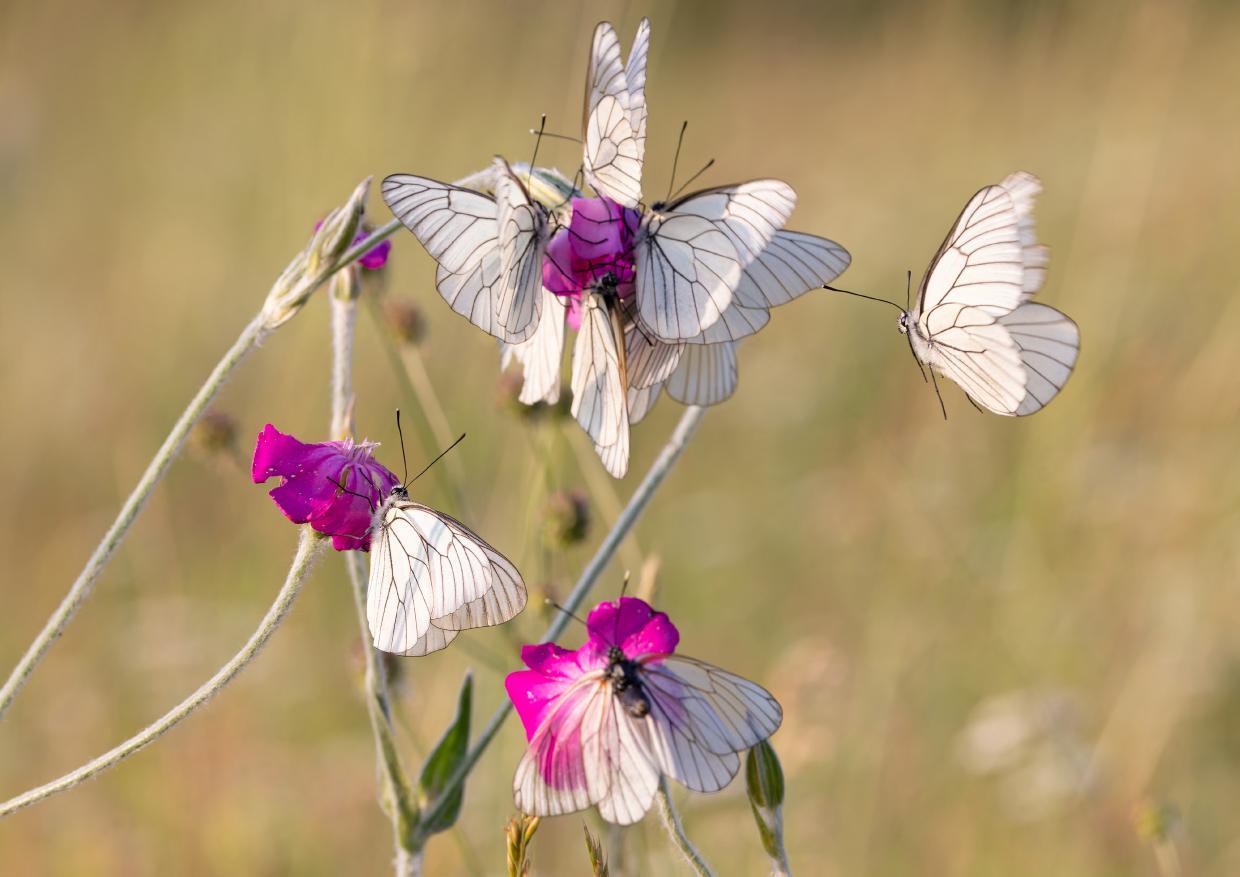
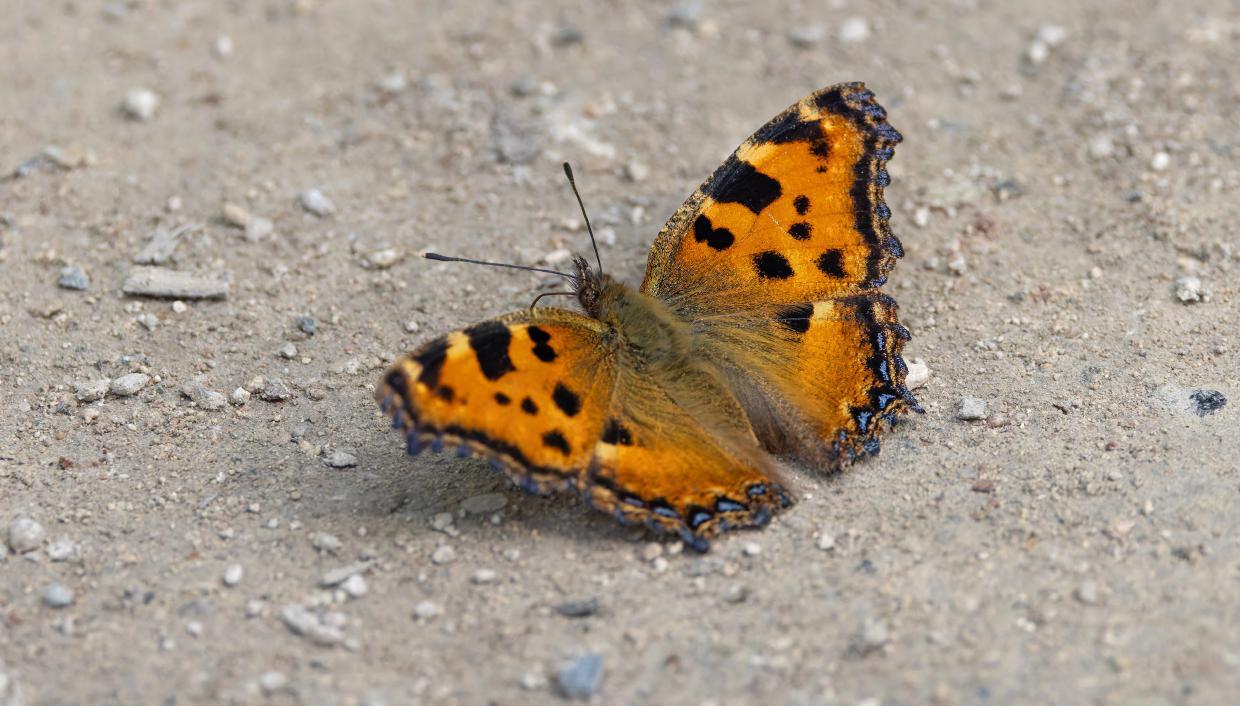
Large Tortoiseshell (Nymphalis polychloros). Page 28: Bright-eyed Ringlet (Erebia oeme), above & Chestnut Heath (Coenonympha glycerion), Page 29: Almond-eyed Ringlet (Erebia albergana), above & Russian Heath (Coenonympha leander). Pages 30-31: Bulgarian Ringlet (Erebia orientalis). Page 32: Blackveined White (Aporia crataegi) (Mike Watson)
latter chasing each other endlessly, I’ve never seen butterflies move so quickly for so long before, in rapid spirals. Incredible stuff! Not photogenic though, unlike Jasmin’s wonderful Scarce Copper Lycaena vigaureae just down the road. The second spot we tried was also very busy, some roadside excrement had attracted a host of nymphs, including some more nice looks at Lesser Purple Emperor Apatura ilia and Large Tortoiseshell Nympahlis polychloros (we checked them all!) and our first Large Chequered Skippers Heteropterus morpheus of the tour – summer was here! There was some excellent puddling too, by the ford. However, we had something else in mind for this spot. It led to a Lesser Lattice Brown K. climene site, one of the enigmas of the Balkans. Mostly an eastern species, occurring as far as Iran (its other name is Iranian Argus), it was not discovered in this region until 1970 and sightings remain few and far between.
We crossed the ford and made our way up an overgrown cart track, passing a freshly dead Roe Deer Capreolus capreolus, to an old farm, another abandoned and posted with a photo and memorial to the deceased owner. There was an ancient orchard here, the waypoint for climene. There are some nice photos of it from this spot so there was no doubt we were in the right place and we scoured the trees for some considerable time but were unable to find one. Just zillions of Pearly Heaths Ceononympha arcania skipping through the canopy. Maurice had made the wise decision not to wade across the ford and stick with the puddling butterflies. Accepting defeat, it was now hot and lunchtime, we retreated to our favourite restaurant for another mountainous salad meal. The afternoon was again spent at our puddling spot from the previous day, with again hordes of butterflies to sift through. A Swallowtail Papilio machaon was new-for-the-tour, as was
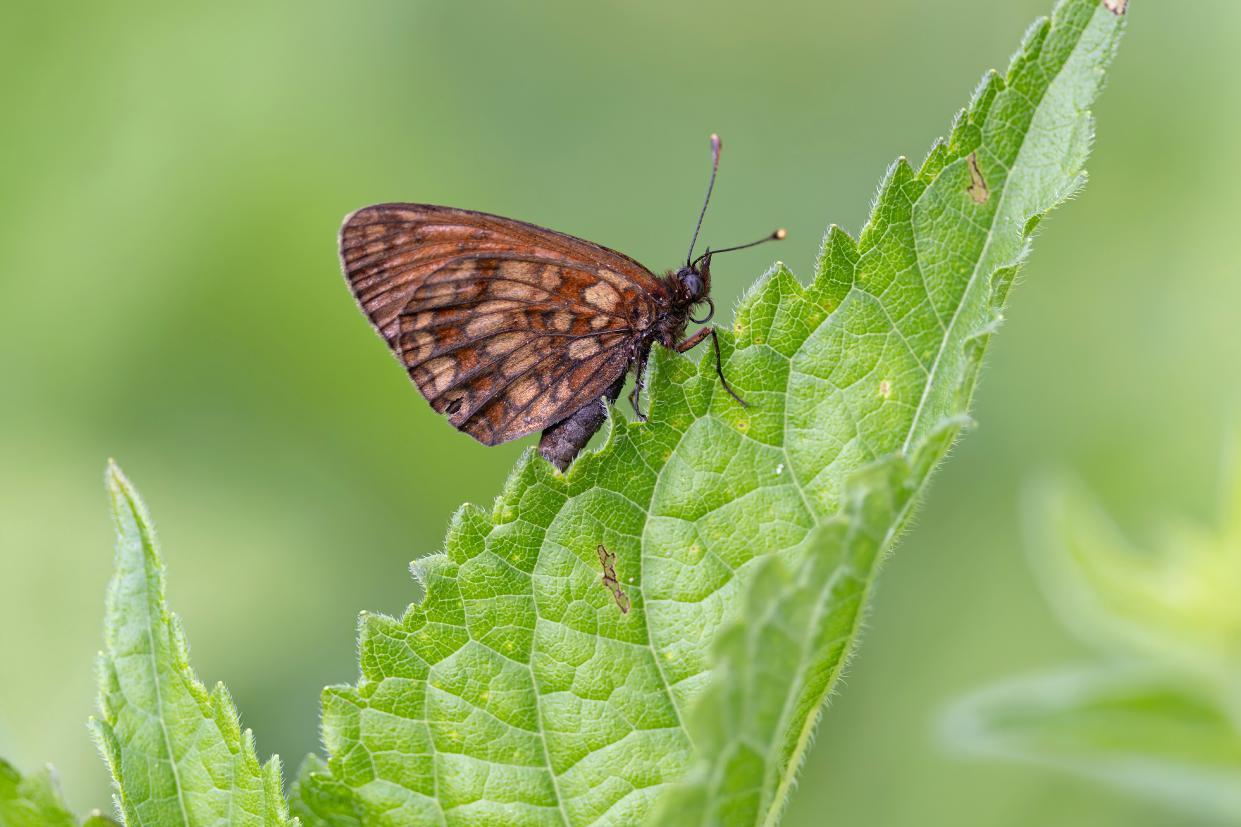
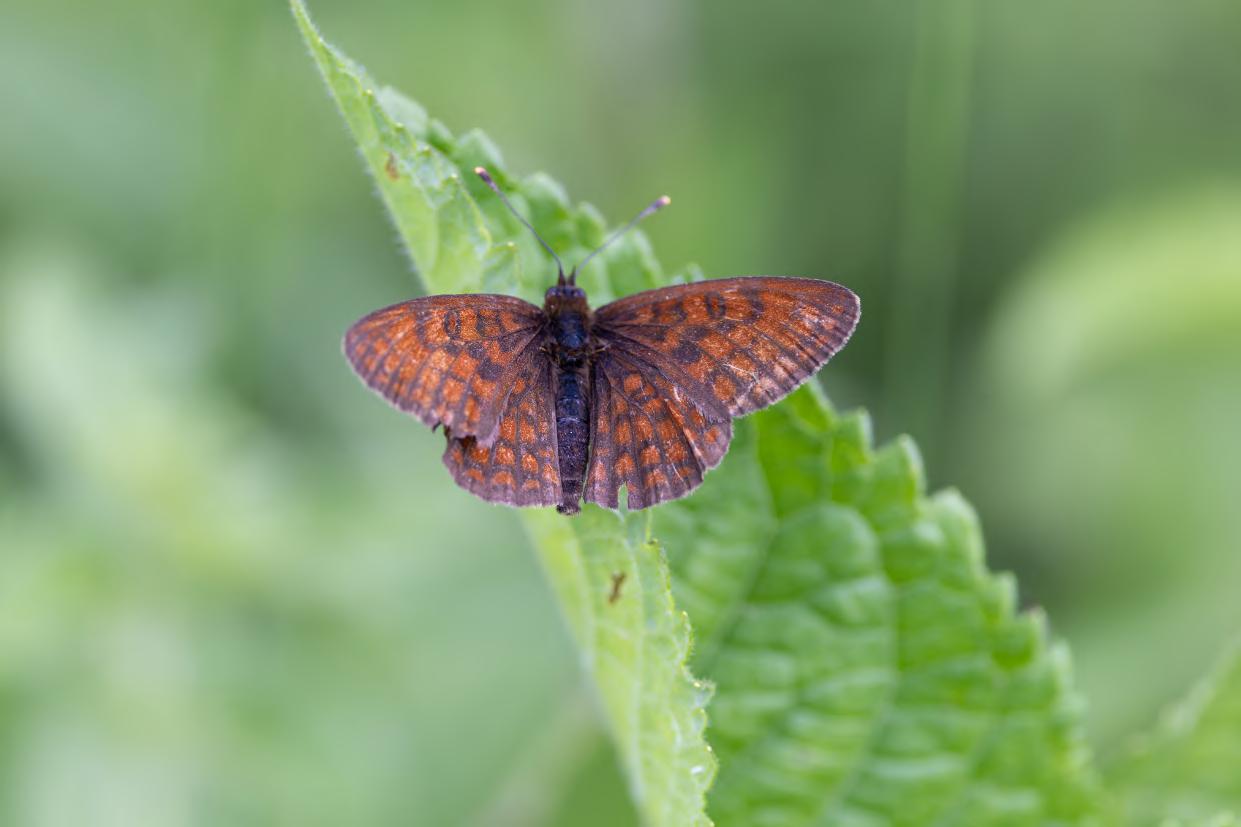
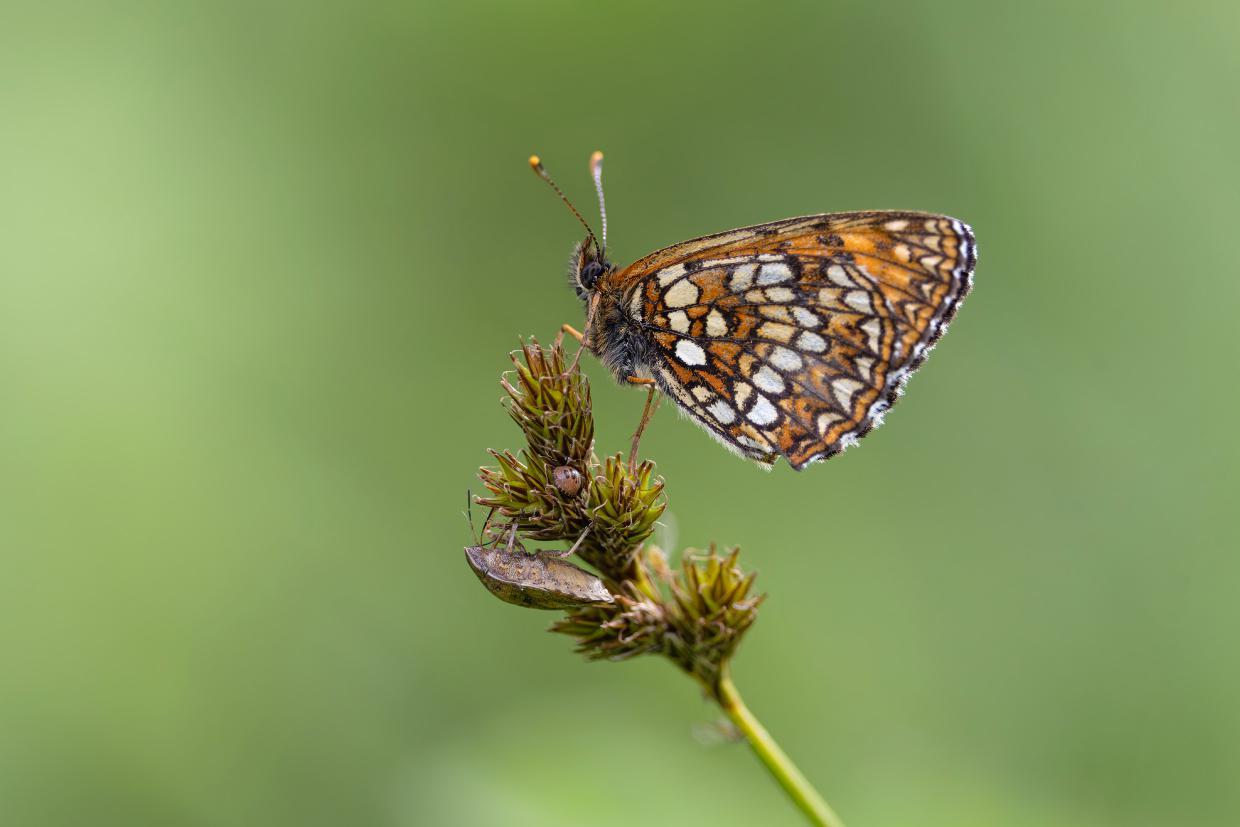
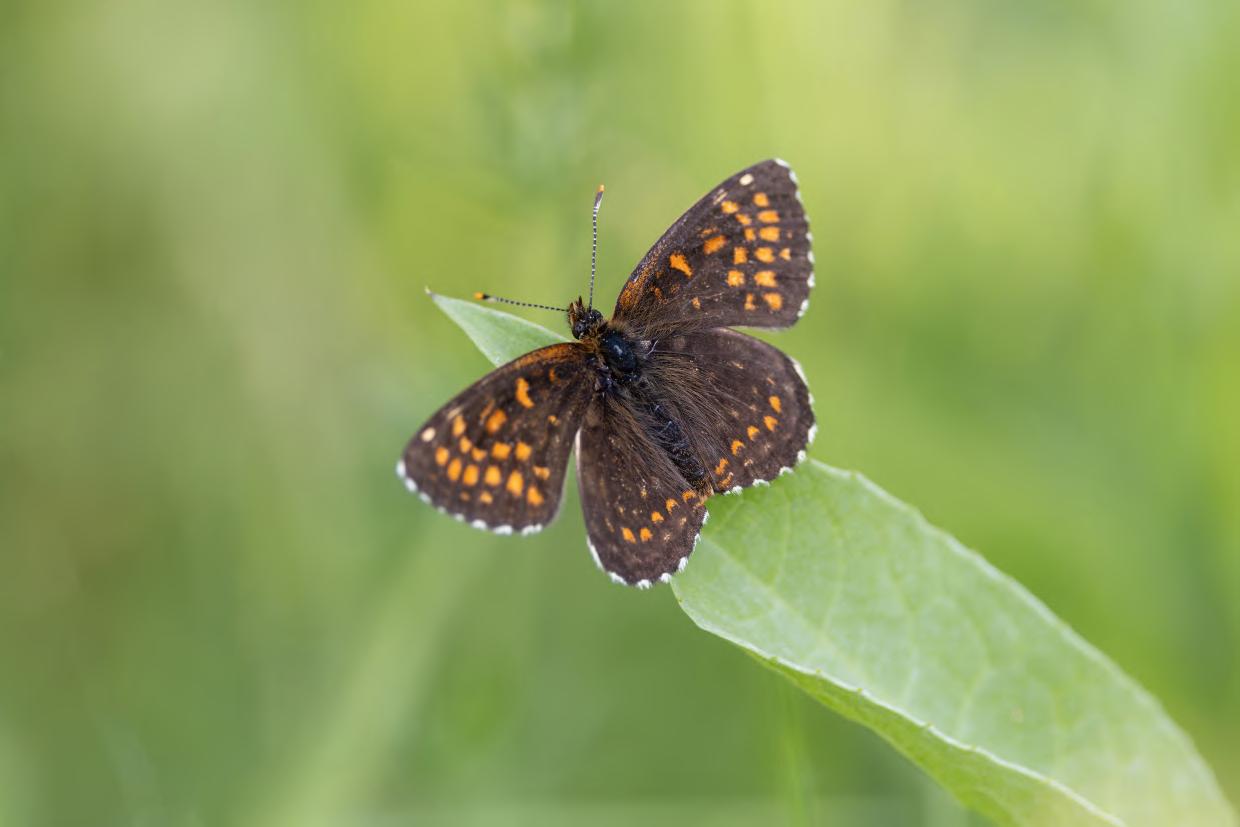
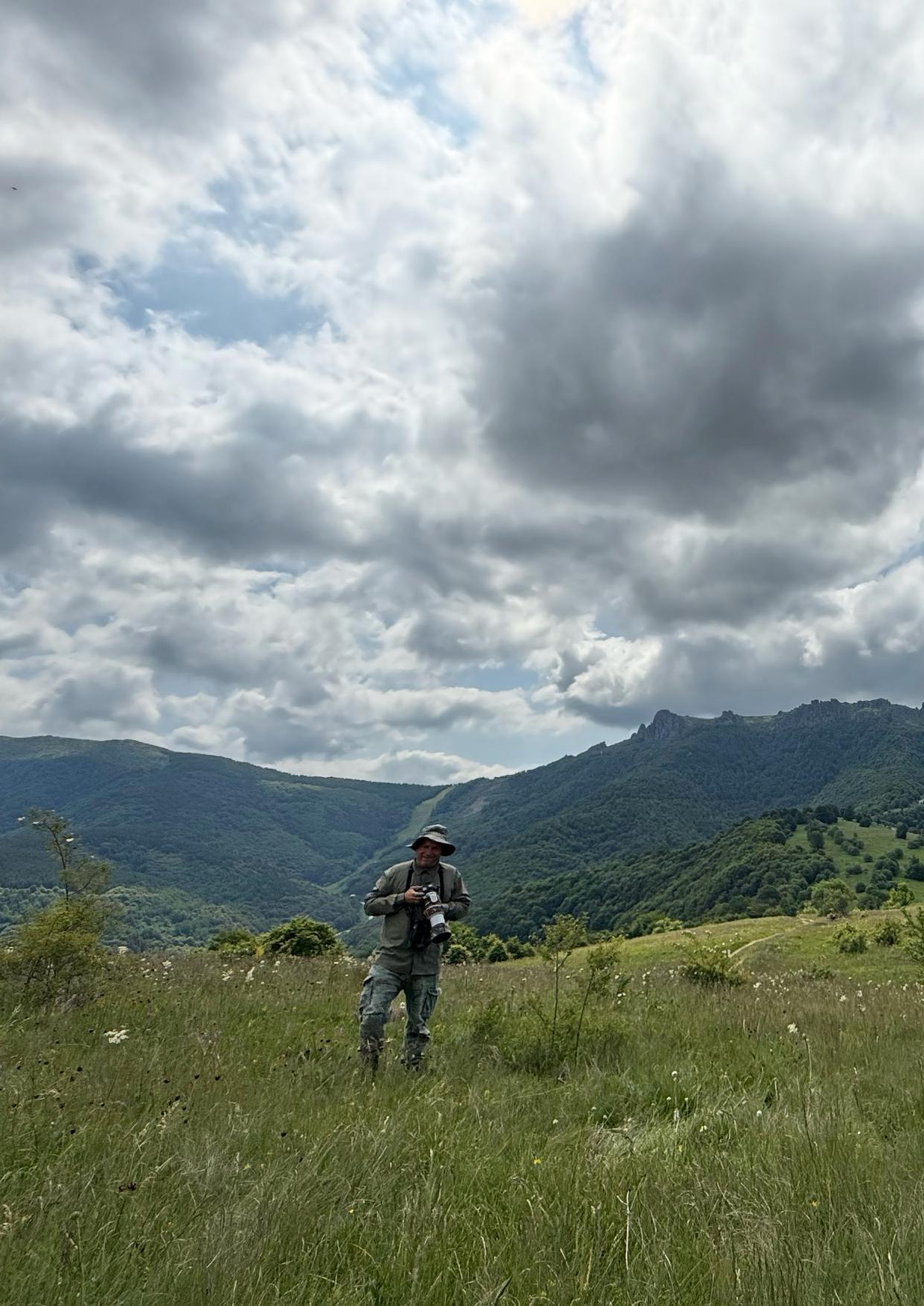
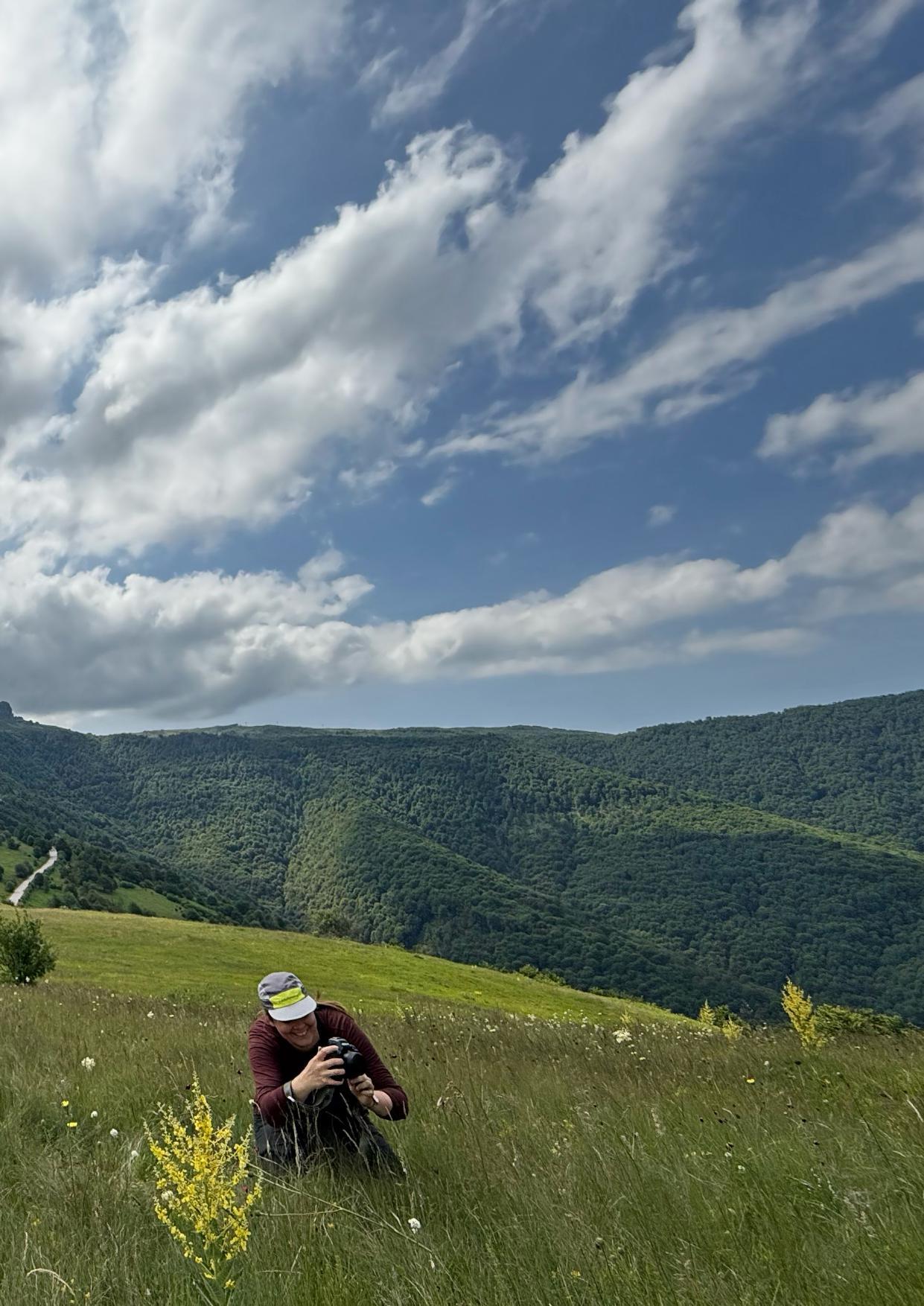
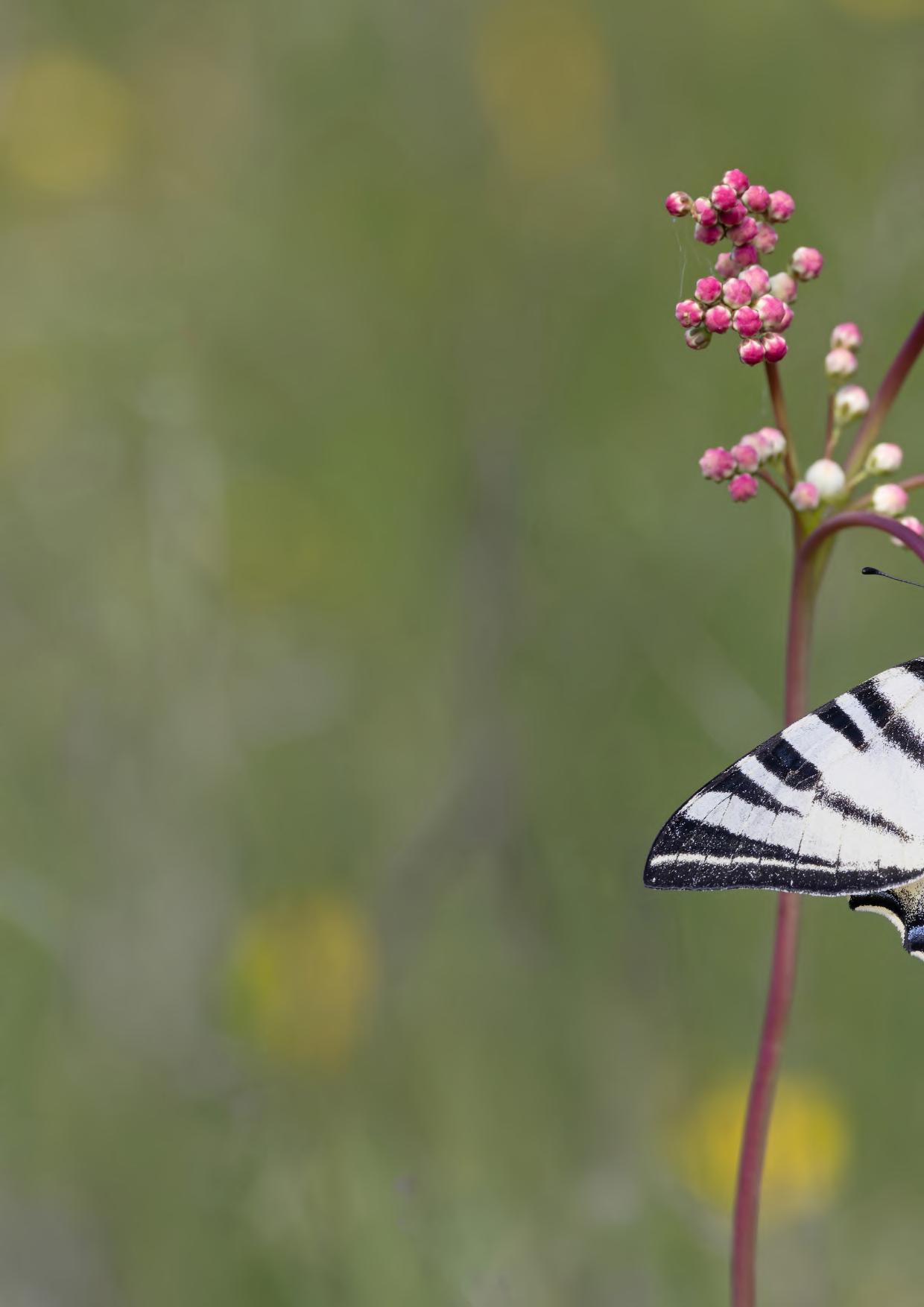
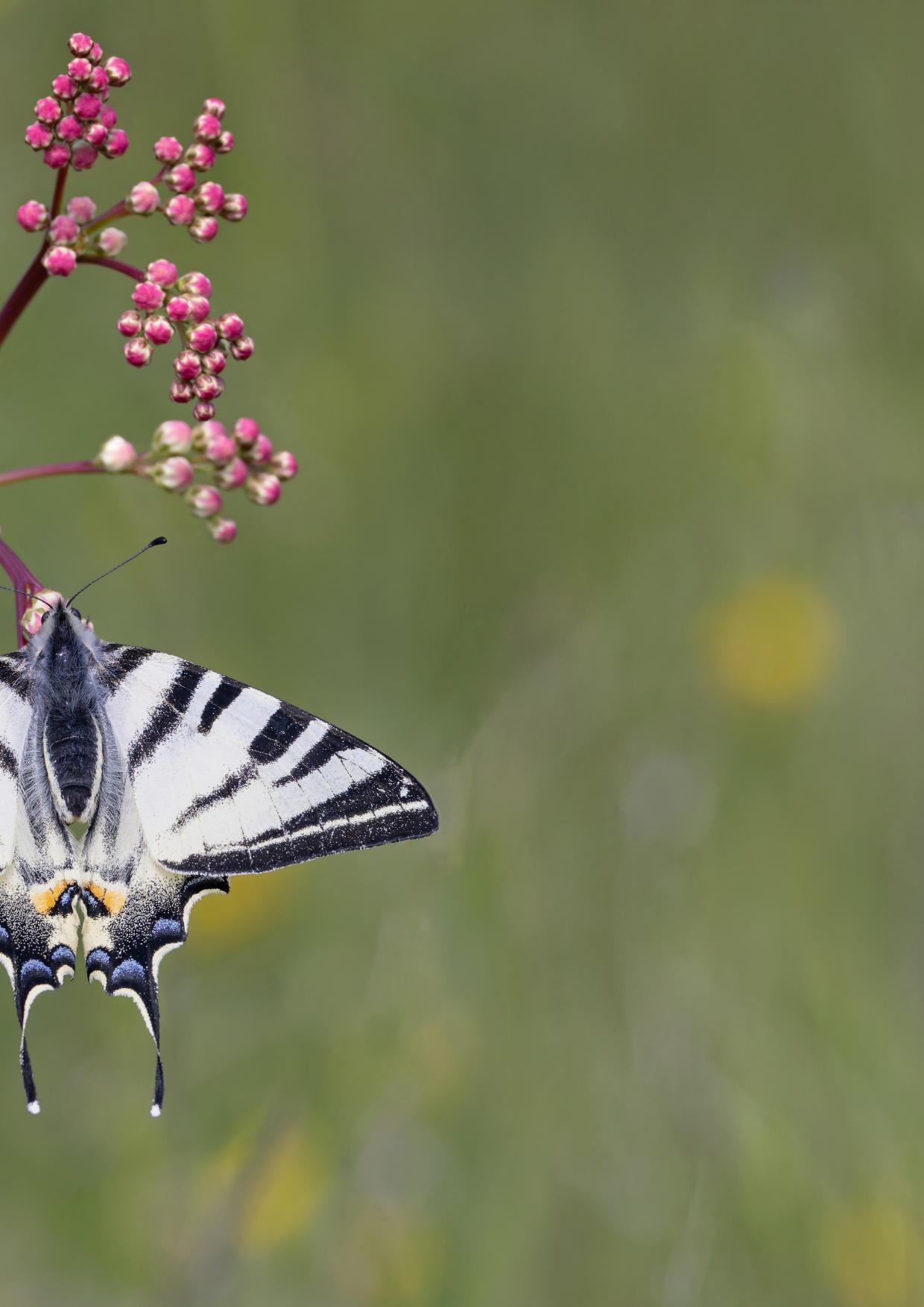
Short-tailed Blue Cupido argiades. There were several High Brown Fritillaries Fabriciana adippe of the silver-less form cleodoxa (it still has the characteristic rusty rings ocelli though) and we enjoyed more nice views of clytie Lesser Purple Emperor A. ilia and Southern White Admiral Limentis reducta. On the way back up the mountain we stopped at a tiny patch of grassland by a stream, known as a good spot for False Heath Fritillary Melitaea diamina. We saw some nice examples, and found a strange variant Heath Fritillary Melitaea athalia, with a rusty/chestnut background colour. We met local butterfly expert Isidor Saric, who had not seen one like this either. He had some great news for us though, vaualbum was flying now(!), and just down the road, exactly where we had hiked two days earlier in fact. We must have been only a few metres from it! However, the woods were in shade now and there was no chance of seeing it today. It would have to wait until tomorrow.
We could take our time going downhill this morning, waiting for the temperature to rise but we filled this with very nice observations. A morning attempt for Balkan Copper Lycaena candens was successful for all this time, and very obliging as he defended his small territory on a flowery grassland by the roadside. We explored a little further here, finding a pristine Scarce Swallowtail Iphiclides podalirius, which must have only just emerged, and some nice Chestnut Ceononympha glycerion and Russian Heaths Ceononympha leander. Many Painted Ladies Vanessa cardui were hill-topping. Soon afterwards, we explored further at one of our other now regular spots adding Woodland Ringlet Erebia medusa and some nice Sooty Coppers Lycaena tityrus on the most wonderful Thyme meadow.
Well, now it was time. BOOM! False Comma N. vaualbum! ‘I’ve got one’ shouted Jasmin (she is an unbelievably good spotter!). We had got out of the car and walked no more than 20m
False Comma (Nympahis vaualbum) and pages 41-45. Page 34: Heath Fritillary, aberrant (M. athalia). Page 35: False Heath Fritillary (M. diamina). Pages 36-37: János & Jasmin at Babin Zub. Pages 38-39: Scarce Swallowtail (Mike Watson)
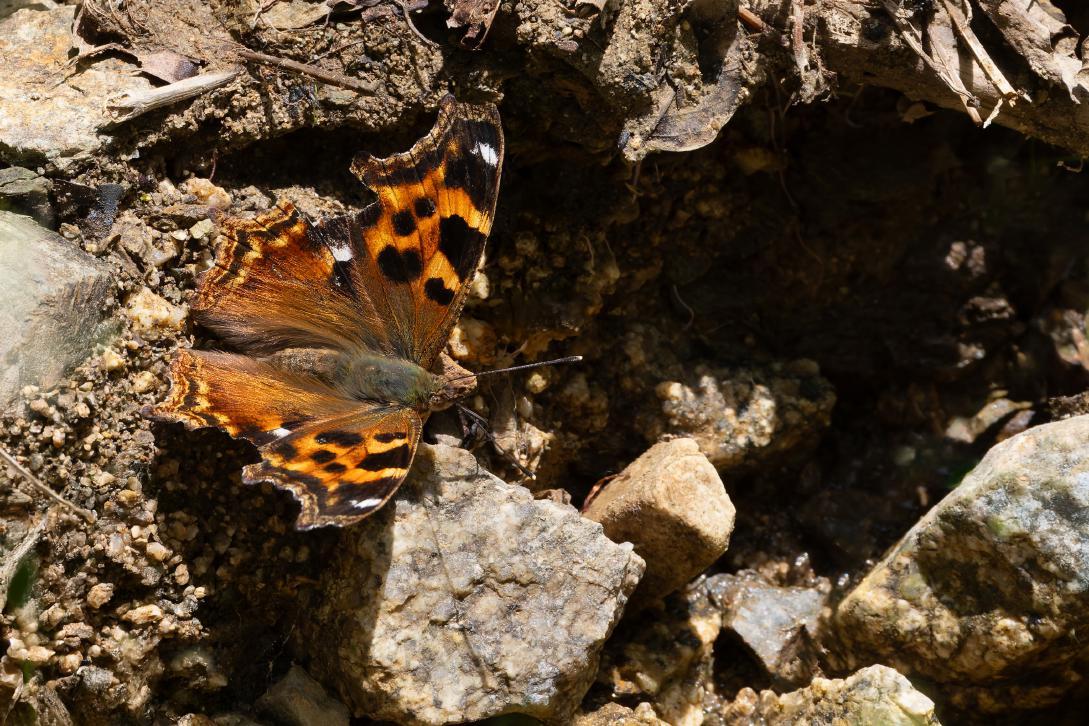
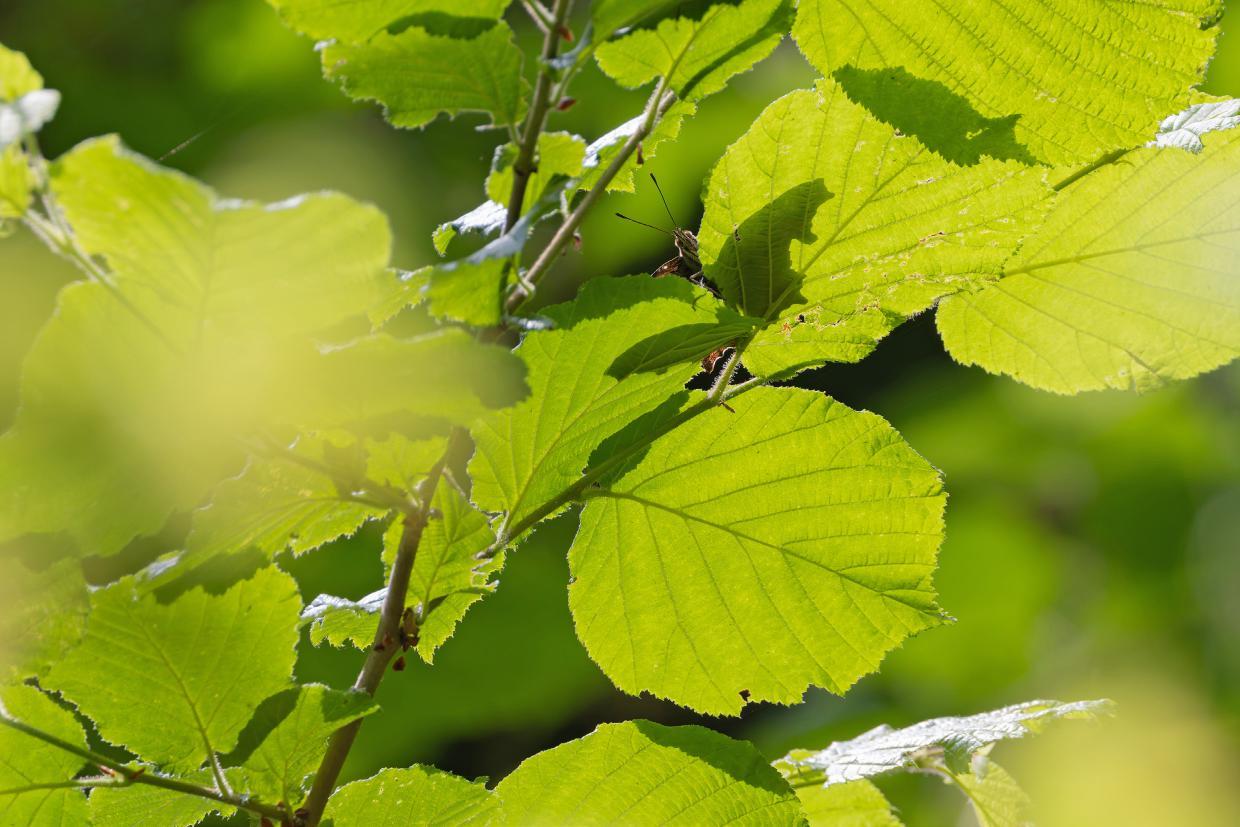
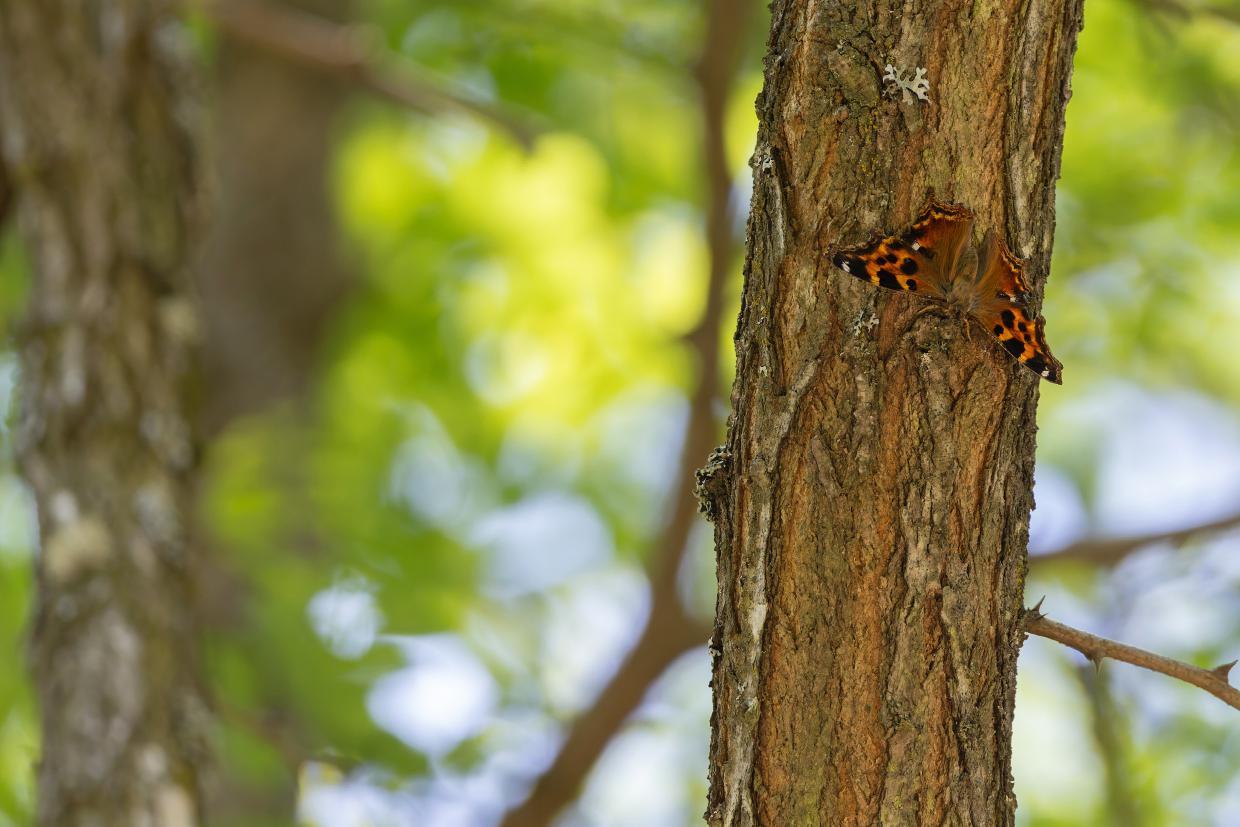
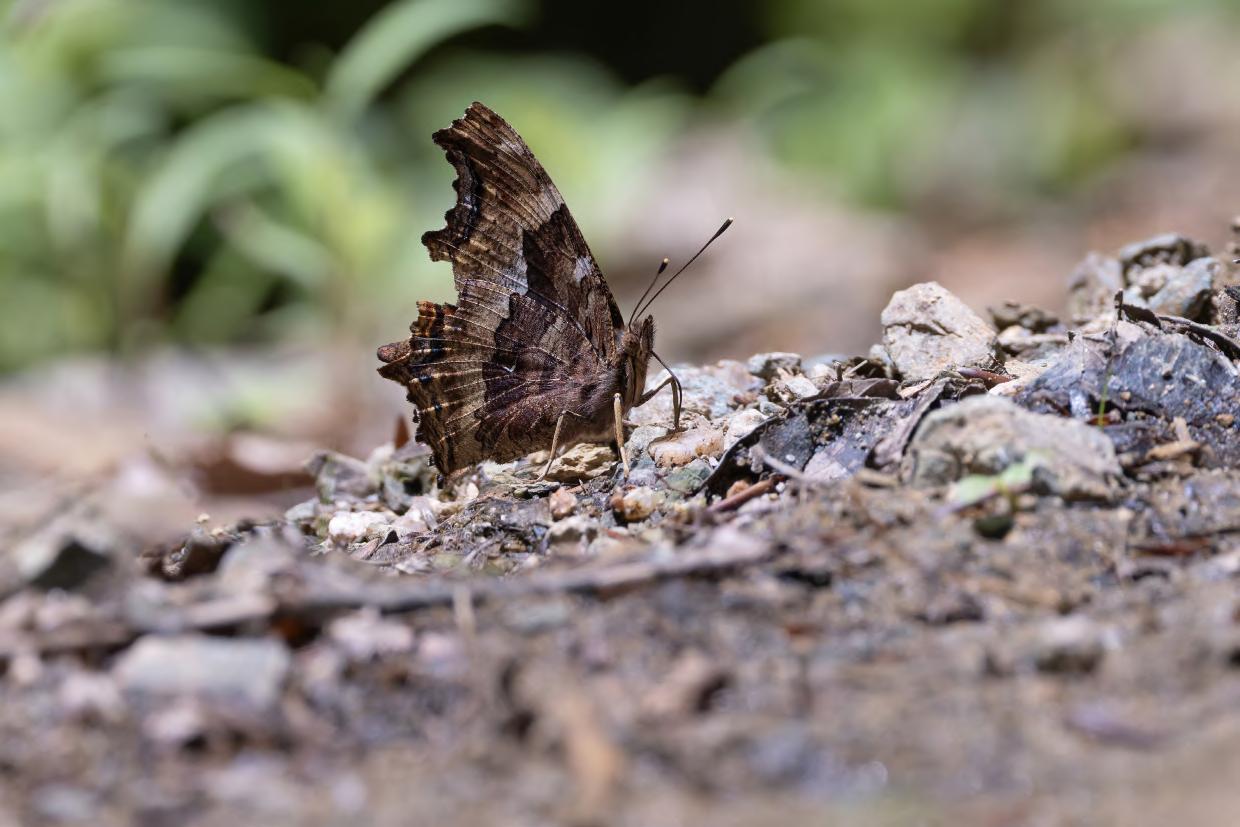
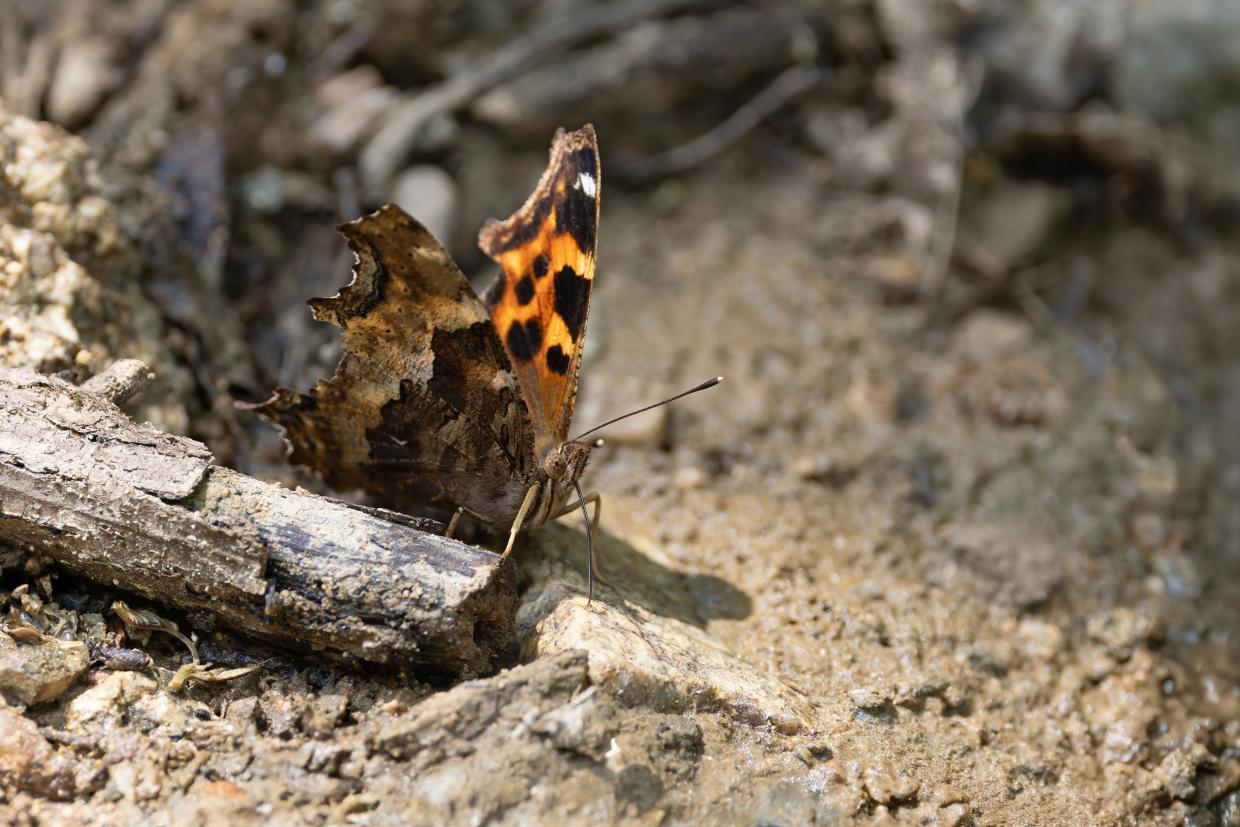
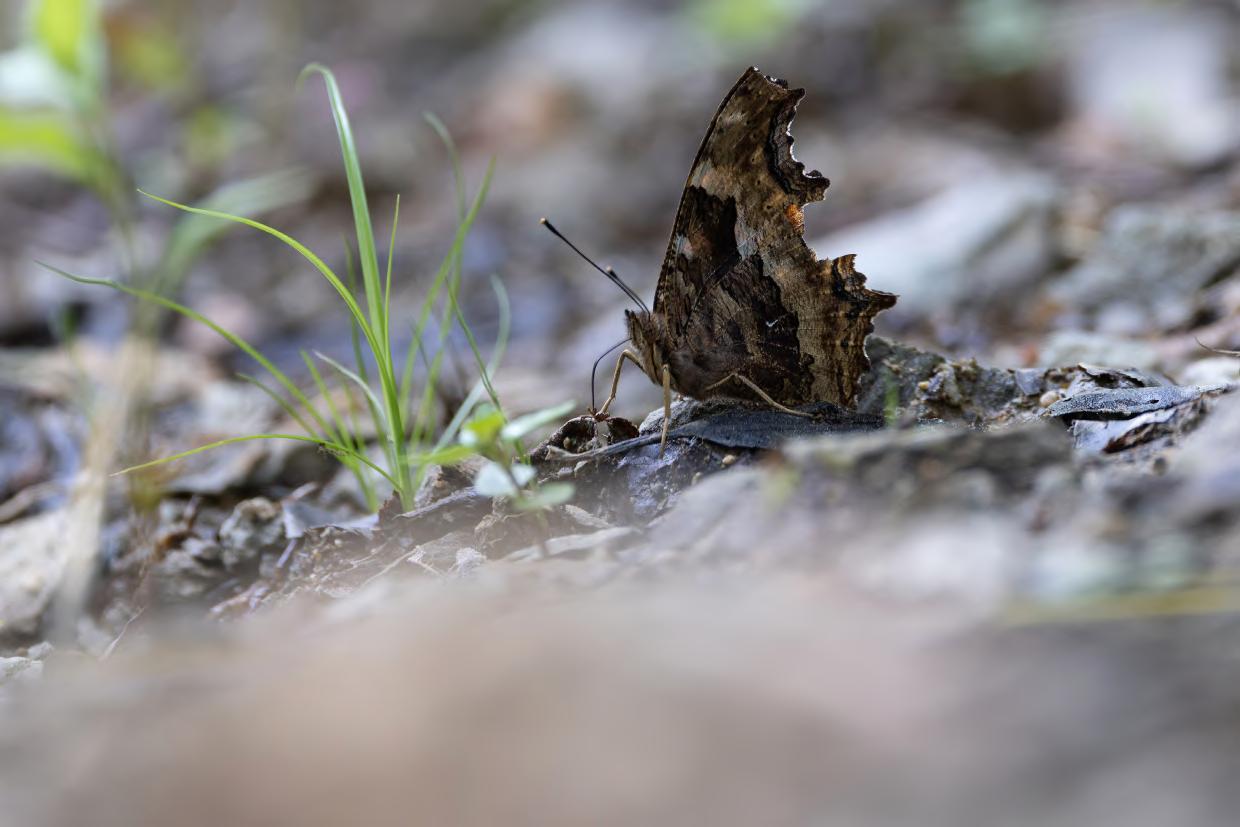
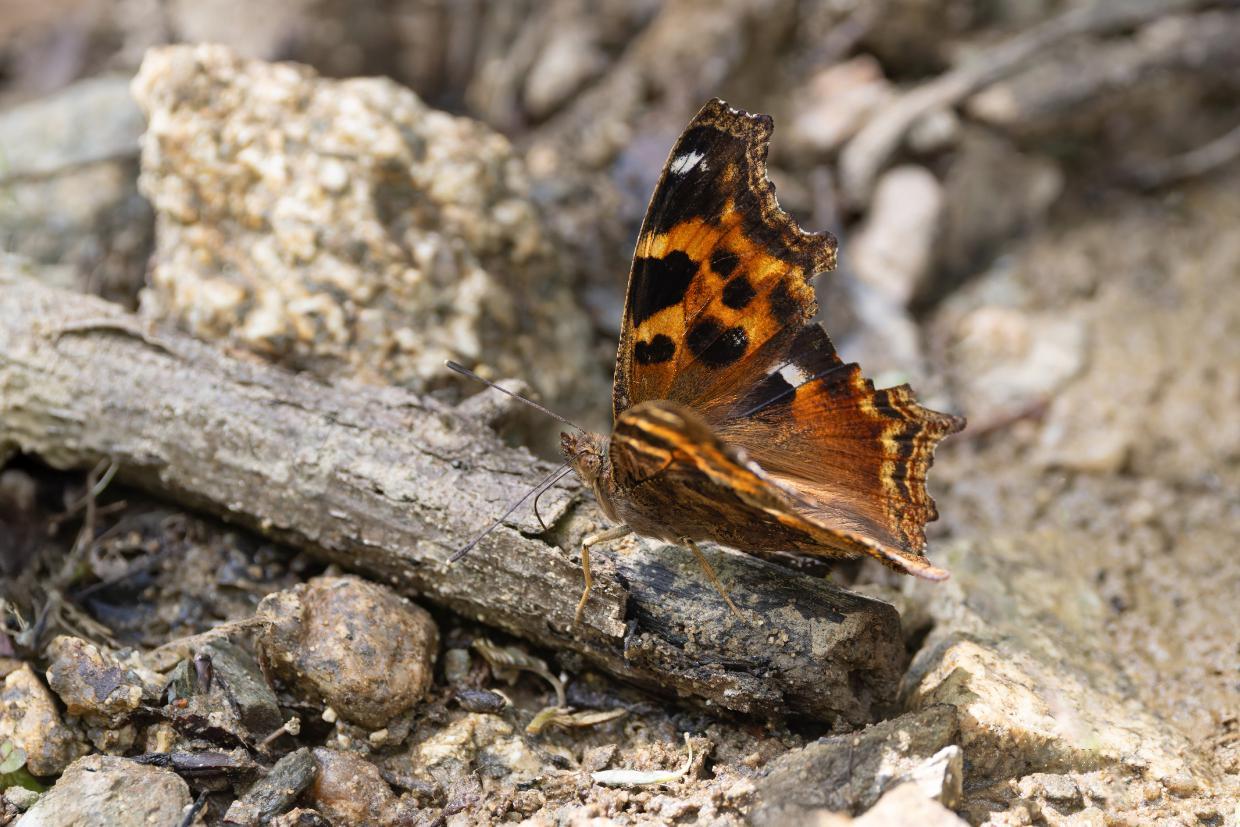
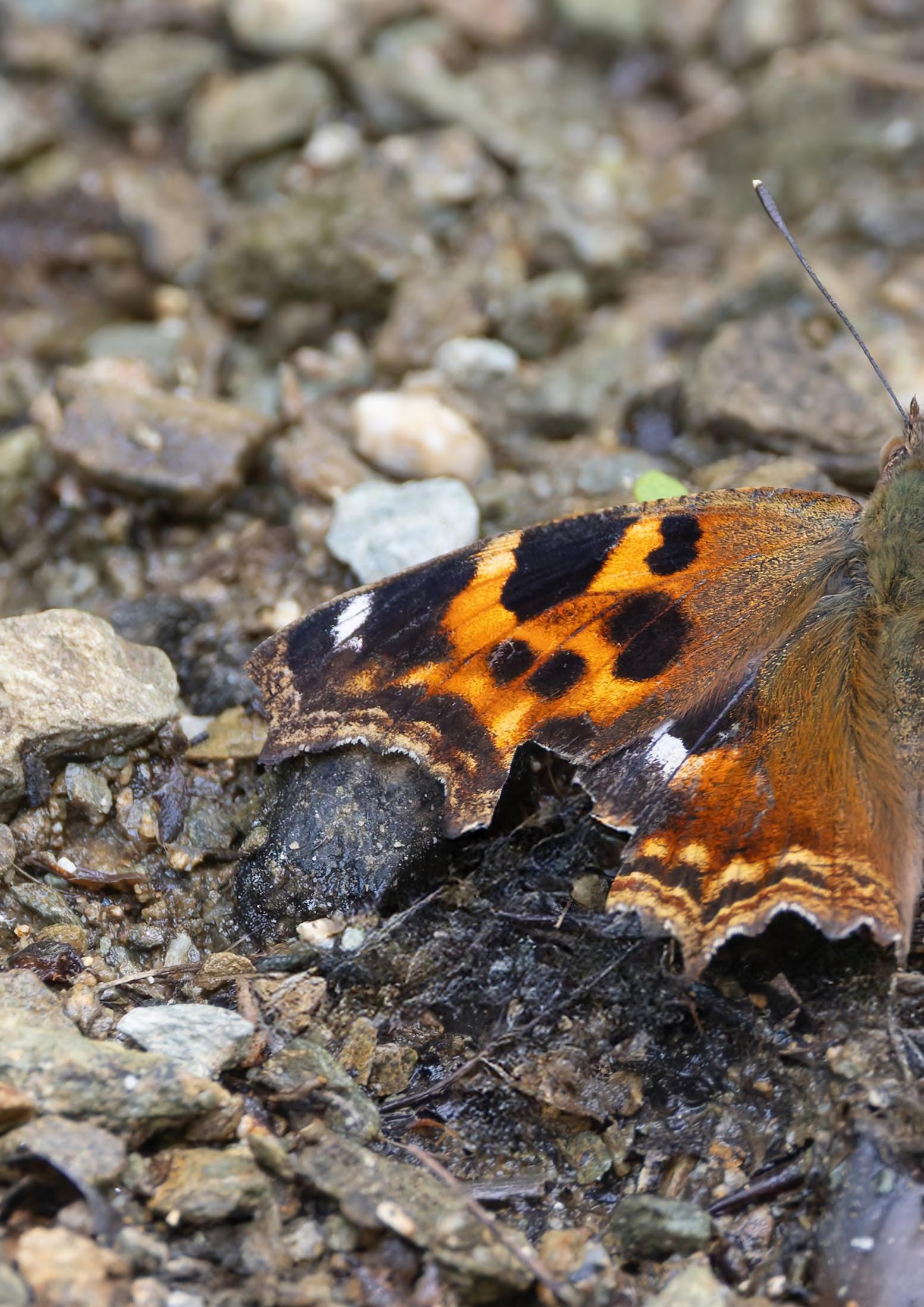
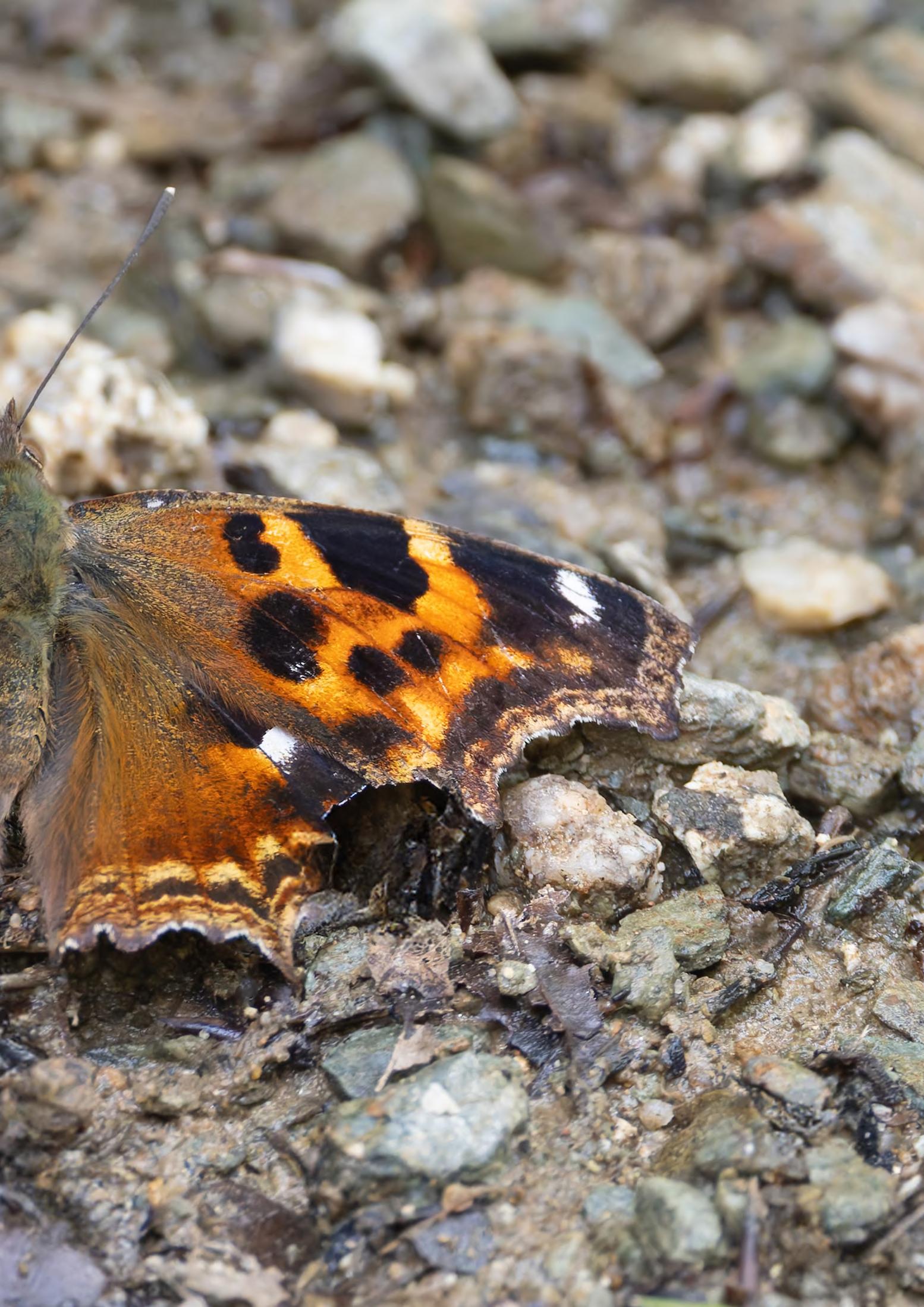
along a forest track and it flew down behind us into a ditch next to her. What a thrilling moment to set eyes on the Holy Grail of European butterflying. We were able to watch it on and off at close range for the next hour or so, as it repeatedly came down to take salts, although only when the sun shone. When it disappeared behind clouds it would stay in the leafy canopy above us, or once on the trunk of a large oak. We could study its every detail, including the tiny white letter ‘V’, which gives it its scientific name as well as to take hundreds of nice images. It stuck to a stretch of around only 20m, and mostly flew up or down, rather than along the track, so it would be very easy to miss if our walk by did not coincide with one of its visits to the ground, as had presumably happened a couple of days earlier. The False Comma N. vaualbum (or Compton Tortoiseshell, as it is known in North America) has always been a scarce butterfly on the western limit of its range in Europe. In recent years it has become even more so, and is considered extinct in Austria, Czech Republic, Estonia, Hungary, Slovenia and Slovakia. It hangs on in Serbia though!
The temperature was rising, and it was past time for a late lunch so off we went for another huge feast. We felt like we earned it this time. We were on a roll now, so we tried another historic climene spot this afternoon. After some searching, ‘We have one!’ shouted János and Jasmin. It looks just like a Meadow Brown Maniola jurtina at first glance and can easily pass in a crowd of them, of which there was here! Including penetrating the oak canopy and occasionally landing on the leaves. However, the Lesser Lattice Brown K. climene flew with a more purposeful, stronger action and always landed in the trees, whereas the Meadow Browns M. jurtina would sometimes land in the grass too, and it had a weaker and more erratic, bouncy flight. To complicate matters Lattice Brown K. roxelana was here too! Thankfully it is very strikingly marked! We enjoyed some terrific views of the Lesser Lattice Brown K. climene, always perching in a sunny spot within the shady canopy and never on a tree on the edge of the small wood. This was great for artistic images! The tiny forewing dot and four small hindwing dots were obvious, as were
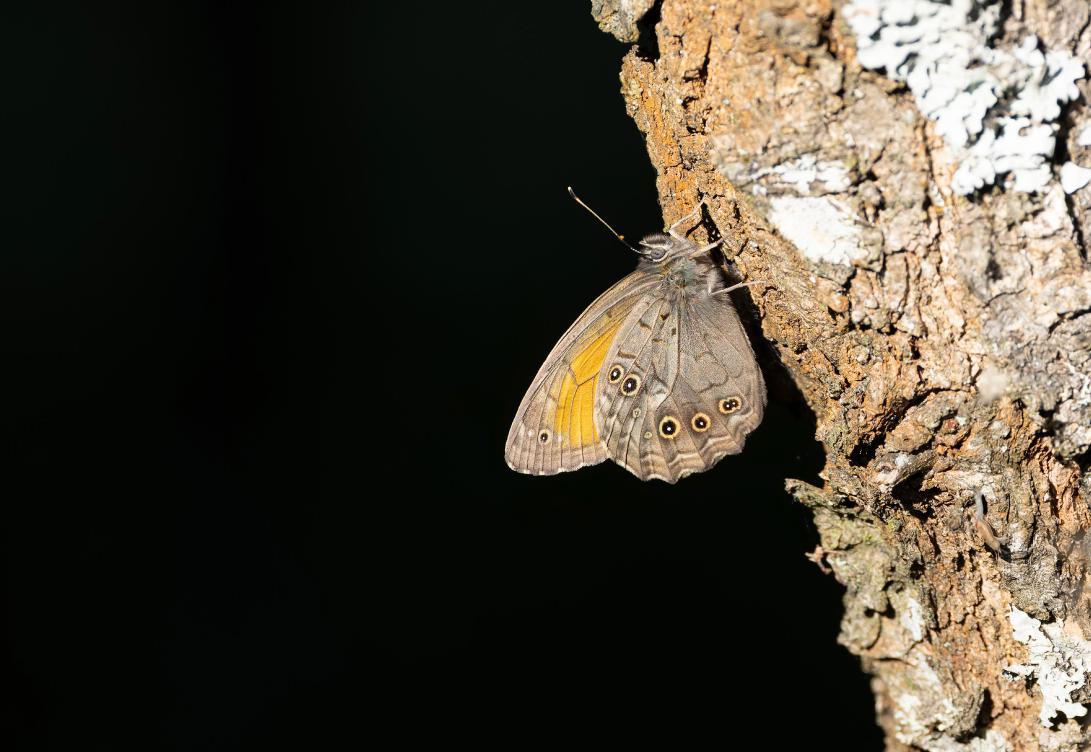
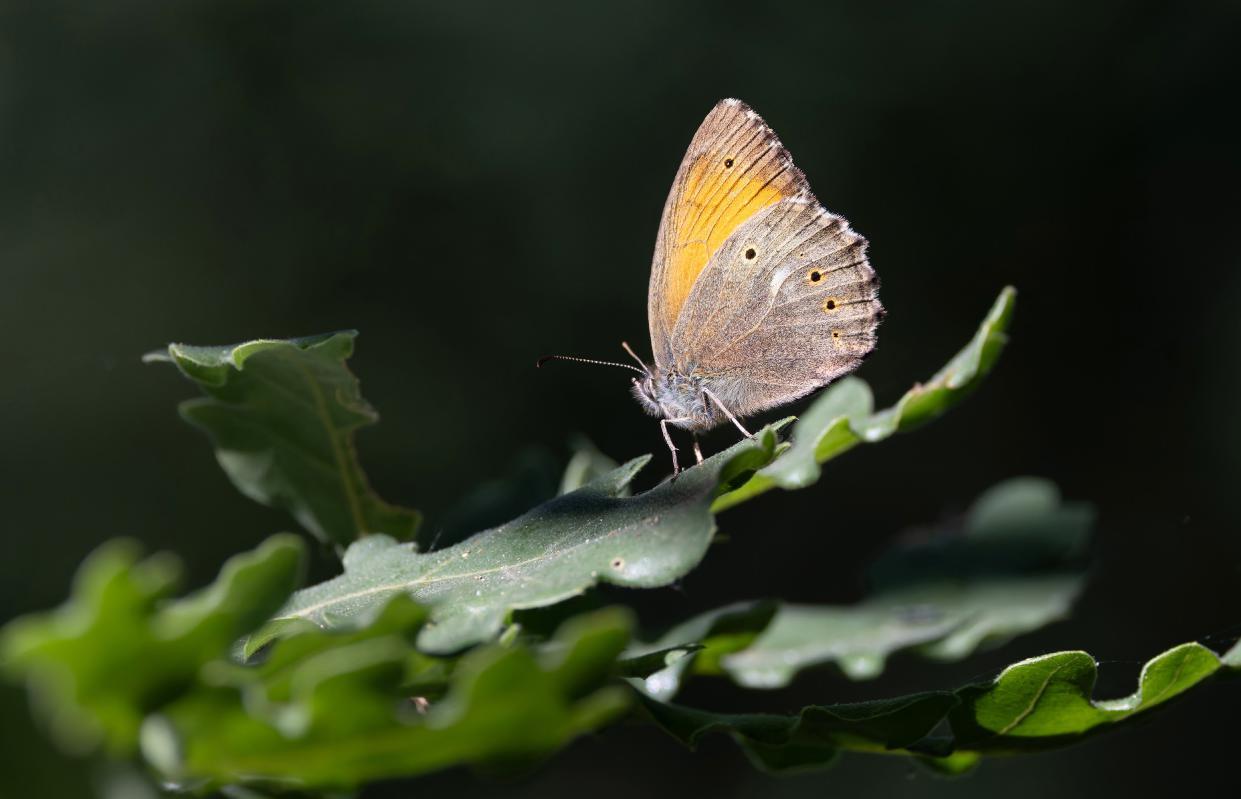
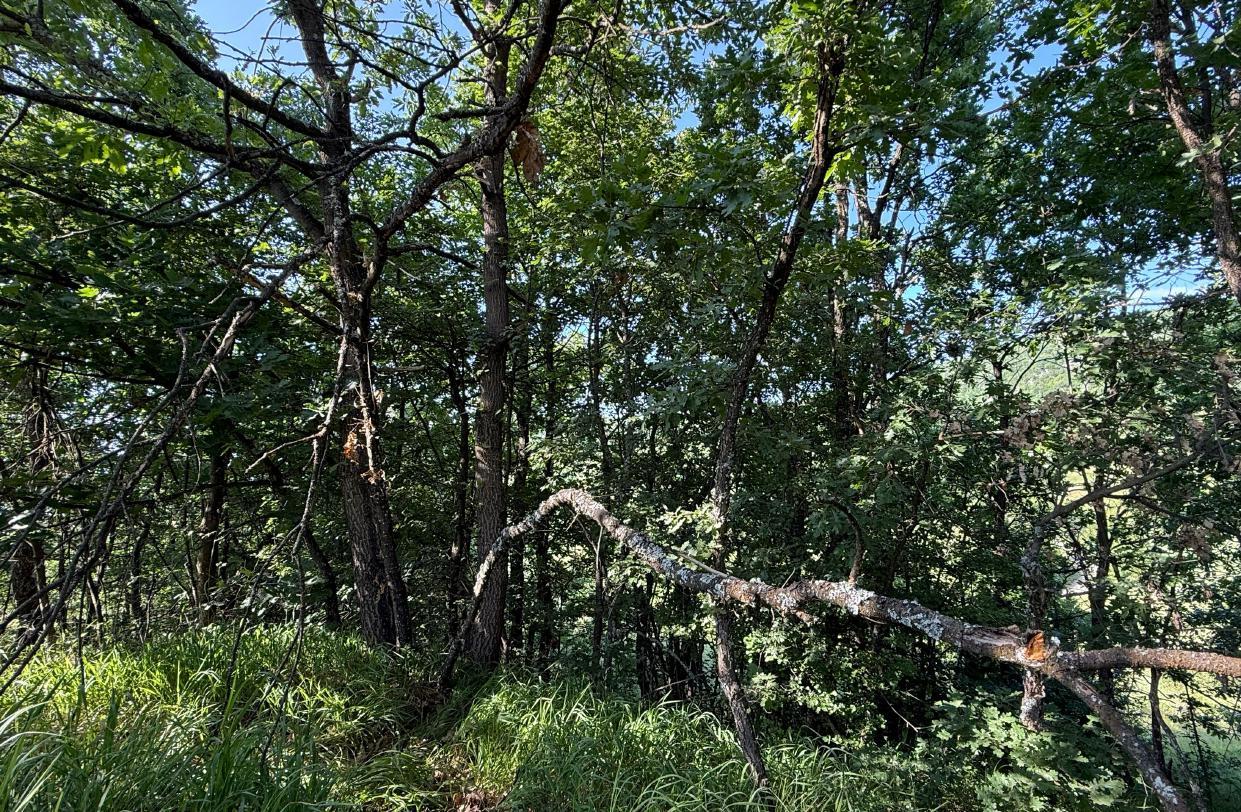
the two ‘scratch’ marks on the largely orange forewing (it was a male, and the scratch marks are just darkened transverse veins across the discoidal area). We could also study the lightly scalloped hind wing rear edge. Excellent! This subtle beauty of the shadows is a very localised butterfly in the Balkans and its habit of seeking shade in hot weather makes it a tricky species to locate. We owe much to sharp-eyed Jasmin for unlocking this one, the third of her hat-trick of mega finds. Thanks to the slope of the wood, our views were often at eye level too. Exiting the small wood there was a showy Nickerl’s Fritillary Melitaea aurelia, affording a chance to photograph this tricky species. What a classic day in the Balkans it had been! 15 June will now always be a special day for those on this tour.
There was only one way to follow such an unforgettable day. With something even bigger and more spectacular. There is one butterfly that fits this bill and it can be found a mere four kilometres as the Apollo P. apollo flies from a spot we were standing at on Babin Zub on
Nickerl’s Fritillary (Melitaea aurelia) (Mike Watson)
our first full day there. After a winding route around the mountain, we eventually reached its meadow habitat in a red sandstone valley, unlike all the others we visited. The geology of this area is really fascinating! There they were, gliding above the sedum-covered rocky slopes high above us. One minute you’re here, the next minute you’re gone is true of this huge butterfly, which can cover vast distances very quickly. Rather than chase it across the precipitous slopes, thankfully the best tactic is to wait until it descends in search of nectar lower down, which it does from time to time. For instance, one flew over the car windscreen further up the valley as we pulled up, but we only had some fleeting sightings afterwards, in the heat of the day. Even without luck, searching this lovely valley was not unpleasant though! Skippers featured strongly today and there was a lot of puddling going on at a couple of spring water spots. Mallow Carcharodus alceae, Yellow-banded Pyrgus sidae, Large Grizzled Pyrgus alveus and Chequered Skippers Carterocpehalus palaemon were spotted
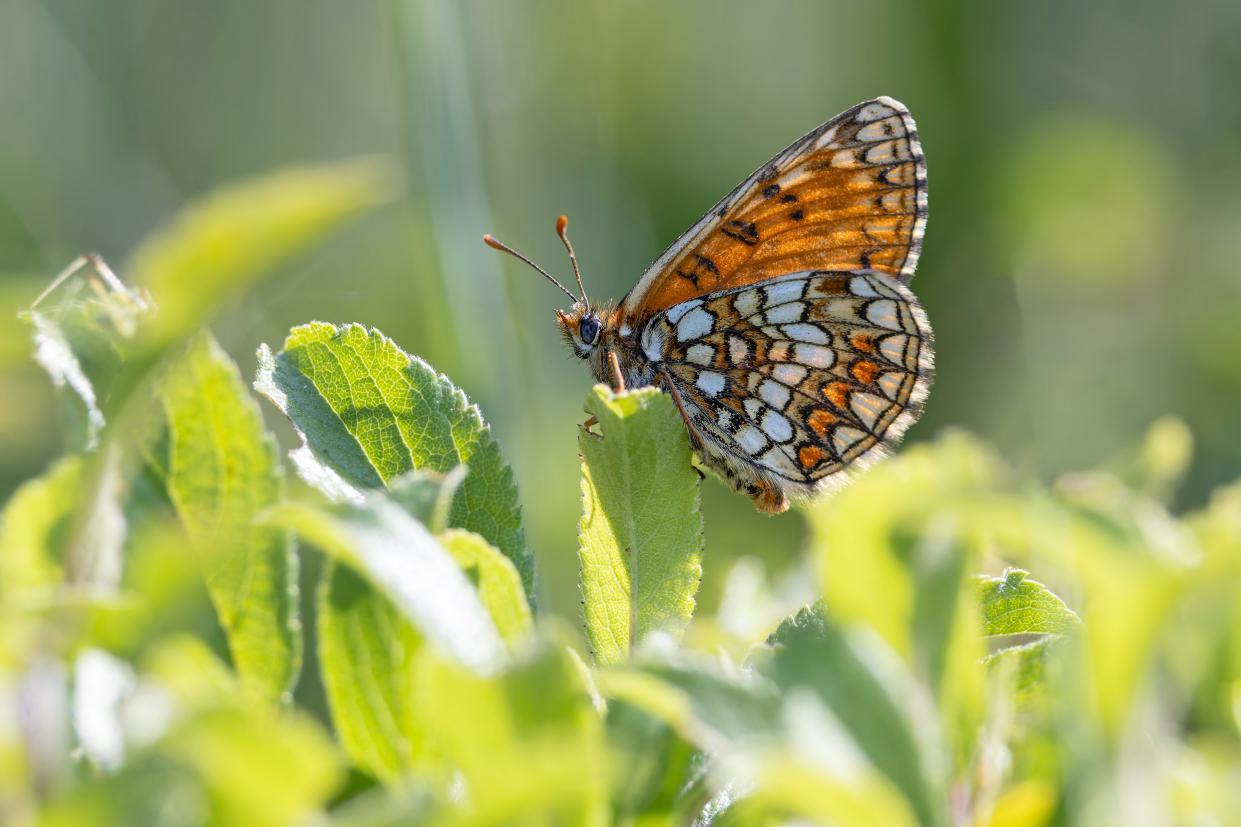
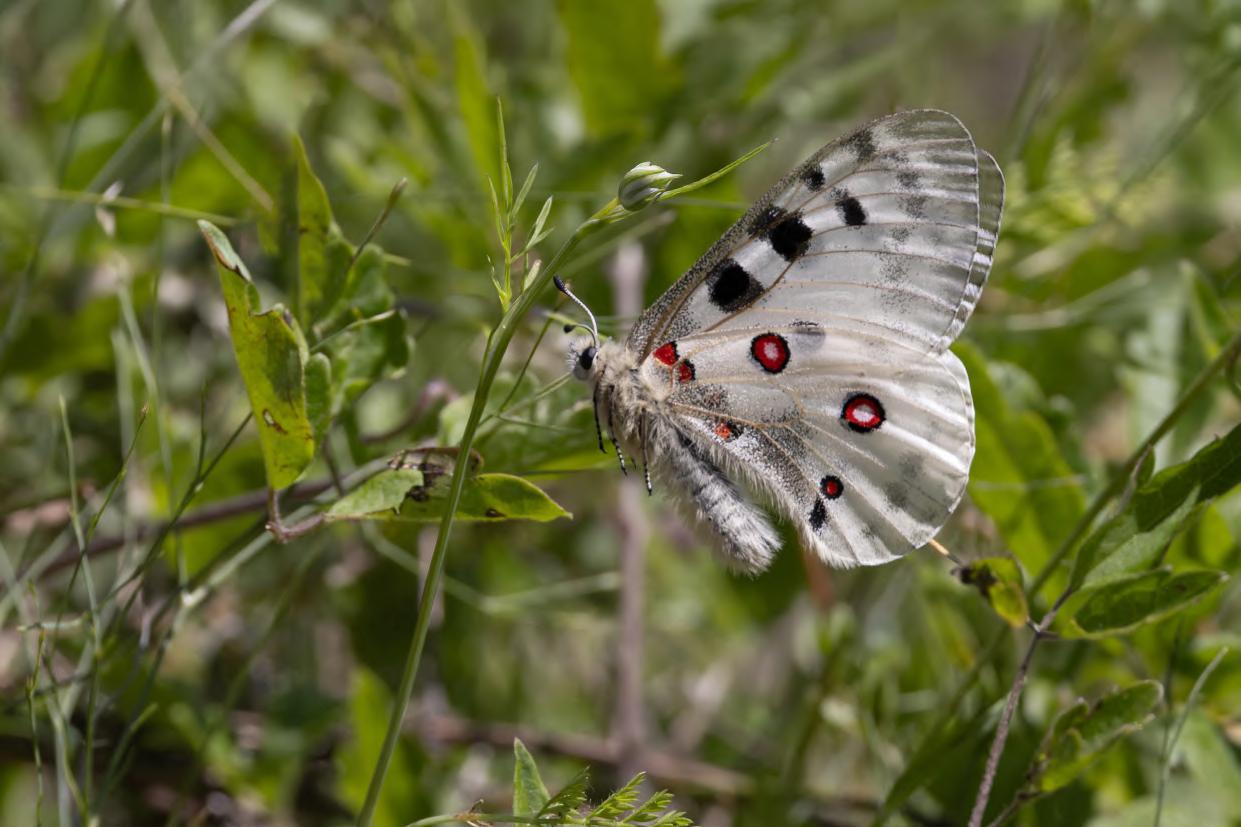
among the common species, and a nice male Scarce Copper Lycaena vigaureae was a good catch-up for the rest of us. Eastern Short-tailed Cupido decoloratus and Chequered Blues Scolitantides orion and Geranium Argus Eumedonia eumedon were new-for-the-trip and another couple of Blue Argus A. anteros was a very welcome chance to see this Balkan speciality. Nymphs were also well represented with Southern White Admiral Limentis reducta and Common Glider Neptis sappho of note and a flash of ginger and purple – it was another tremulae Poplar Admiral L. populi! Landing a little further along the track, we were able to take a closer look, although it did not linger long. We did not have any luck with Apollo P. apollo at the head of the valley, so we went back downstream to the location of our first sighting, and it was there that one came down lower… and lower and even crossed the road, landing right in front of us. Fortunately, we managed to stop a mis-timed car and fire a few shots at it.
Today was our last full day of butterflying in Serbia and although we needed to head north this afternoon, we had time for another couple of stops. Back at our favourite streamside puddling spot we added Tufted Marbled Skipper Carcharodus floccifera, where nearby 10 Large Chequered Skippers Heteropterus morpheus were counted among a throng of over 300 butterflies, mostly golden type (majority Essex Thymelicus lineola) skippers. A Southern Small White Pieris mannii (lacking the ‘Y’ vein at the at the apex of the under forewing) was side-by-side with a Small White Peiris rapae. Holly Blue Celastrina argiolus was also new for some here. Nymphs included Lesser Purple Emperor A. ilia (clytie again), White Admiral Limentis camila and False Heath Fritillary M. diamina of note.
Last port of call before the motorway was site one from day one. It was still almost 30 degrees Celsius late in the afternoon and there was plenty of butterfly action happening here.
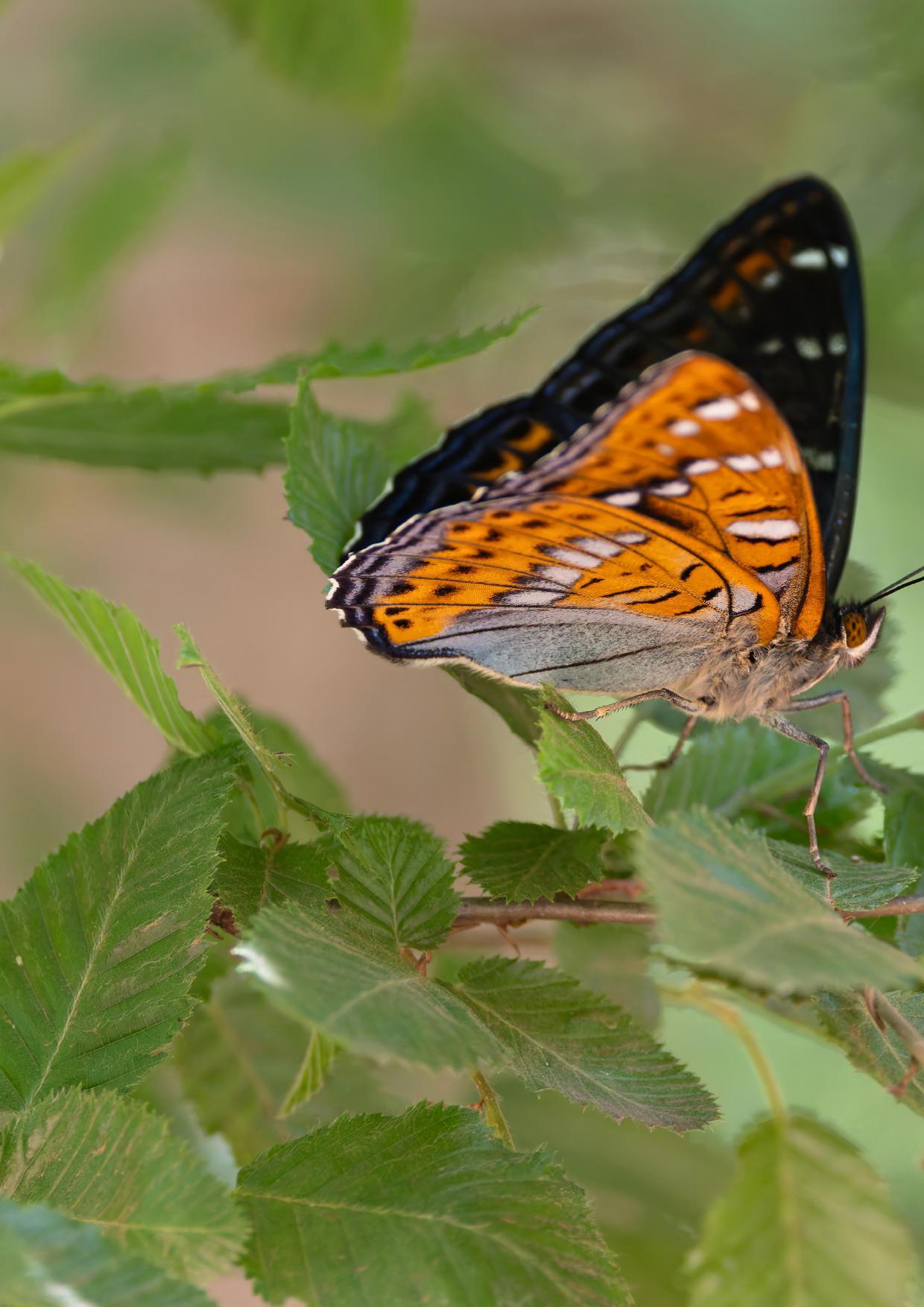
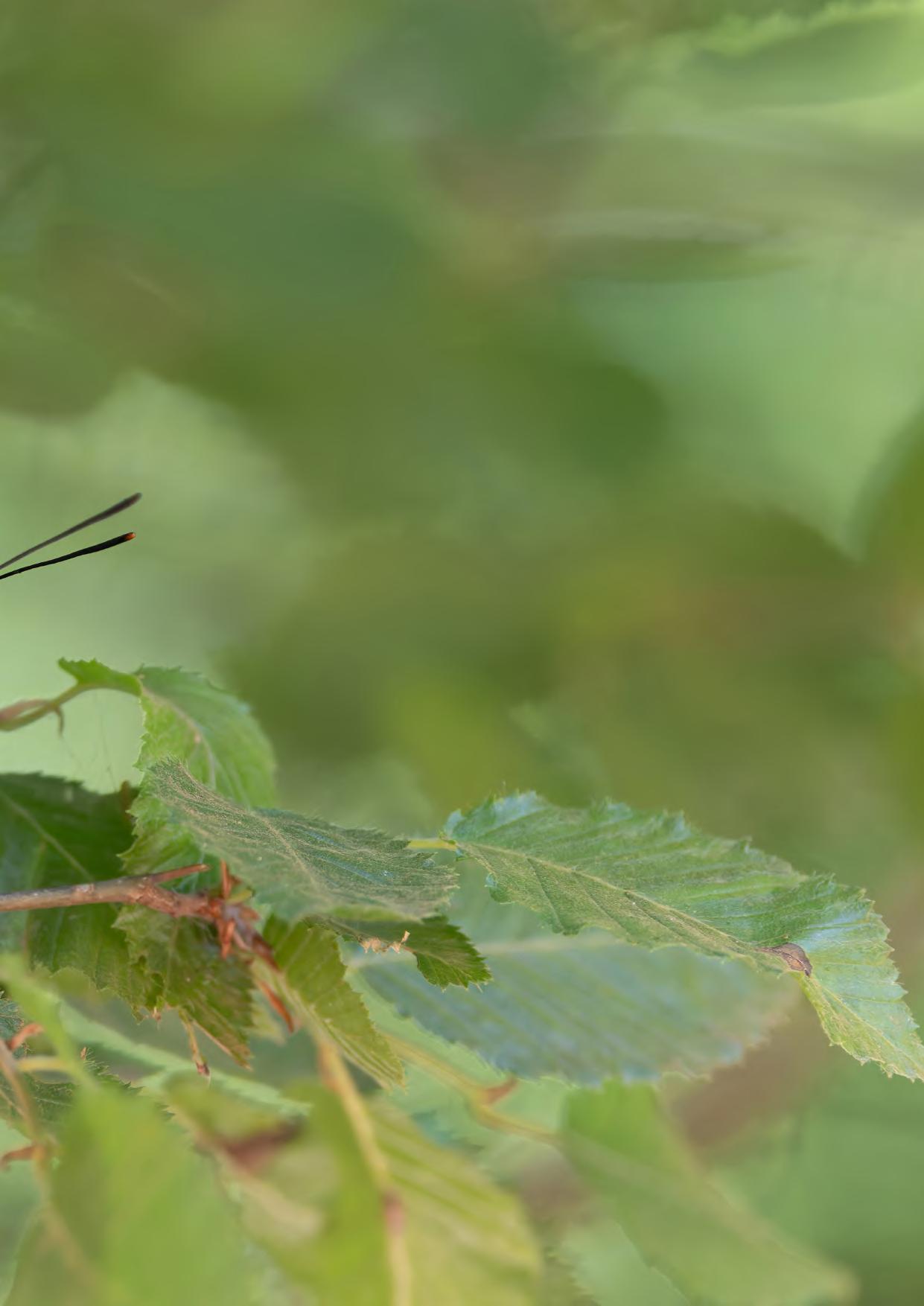
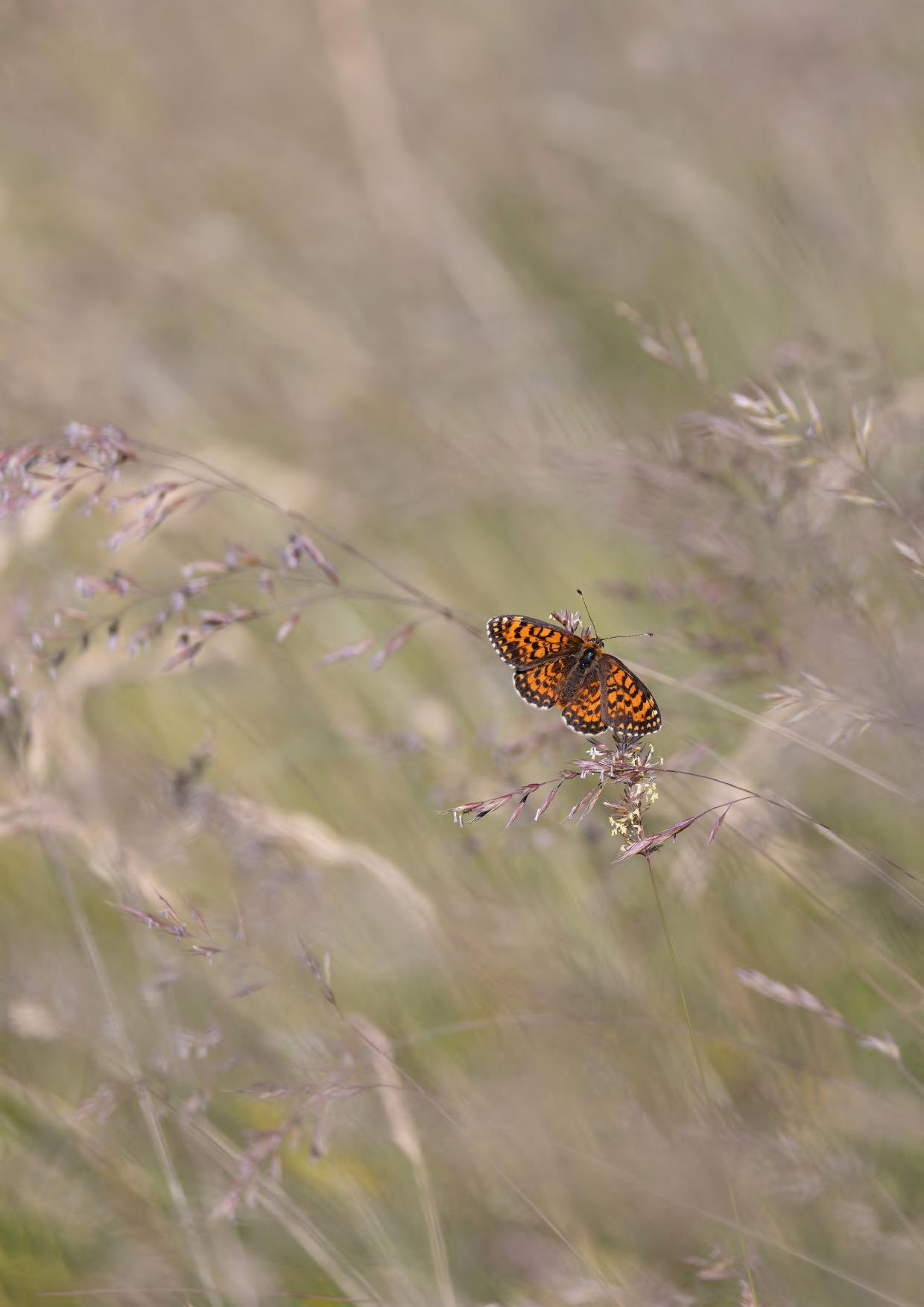
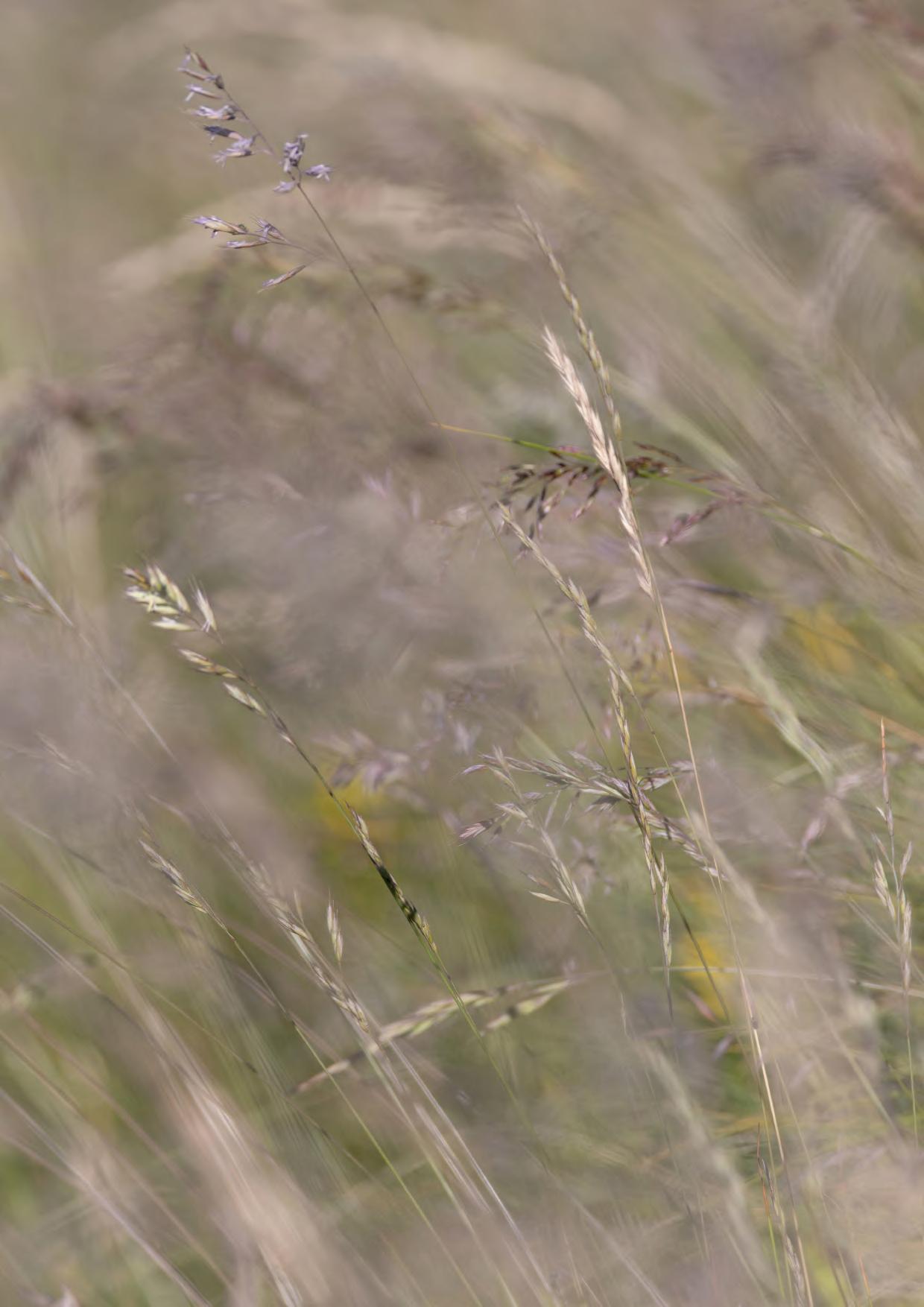
Niobe Fritillary Fabriciana niobe was new, albeit with a notched wing and the classic disturbed ground frits Glanville Melitaea cinxia and Knapweed Melitaea phoebe were still around. At least one million Ilex Hairstreaks Satyrium ilicus adorned trackside flowers for the photographers - it was hard to leave. We spent the last night of the tour at Jagodina, far to the north, in lowland agricultural Serbia, purely to be within easy striking distance of the airport next day and we still had one last roll of the dice. We explored the nearby hills but any unwooded land there was planted right up to the surrounding tree trunks of the forest - it seems that none of these farms are deserted. We tried a range of sites with mixed success but still a few highlights. Our best views of Mallow Skipper Carcharodus alceae were here. A handful of Large Coppers Lycaena dispar and a couple of Map Arashinia levana butterflies were on flowers by a small bridge, where we also saw a golden-ringed type dragonfly, which transpired to be the near threatened albotibialis subspecies of Small Pincertail Onychogimpohus forcipatus. A couple of bizzare Bellied Bright Bush-Crickets Poecilimon thoracias were in a
bush at the same spot. Thank you digital photography and Obsidentify! At another site we spotted a few Blue Featherleg (White-legged Damselfly) Platcnemis pennipes damselflies and an abrupt roadside stop was also made for a Hermann’s Tortoise Testudo hermanni. A track through woodland led us to some fallow, formerly cultivated meadows, where we made the final addition to our long butterfly list, Great Banded Grayling Brintesia circe. These large satyrs are false White Admirals in flight with huge white wing bands but at rest form the classic cryptic grayling pose. Even more spectacular were the predatory Owlflies Libelloides macaronius in the fallow fields, truly amazing insects! Weaver’s Fritillary Boloria dia was a nice catch up too.
So ended our first Serbia tour as we rolled up back at Belgrade Airport. We set a high bar for next time and It is already one of the classic European butterfly tours! Thanks to János Oláh of Sakertours for such a fabulous trip!
Great Banded Grayling (Brintesia circe). Previous pages: Poplar Admiral (Limentis populi) & Lesser Spotted Fritillary (Melitaea trivia). Next page: Owlfly (Libelloides macaronius), above & Weaver’s Fritillary (Boloria dia) (Mike Watson)
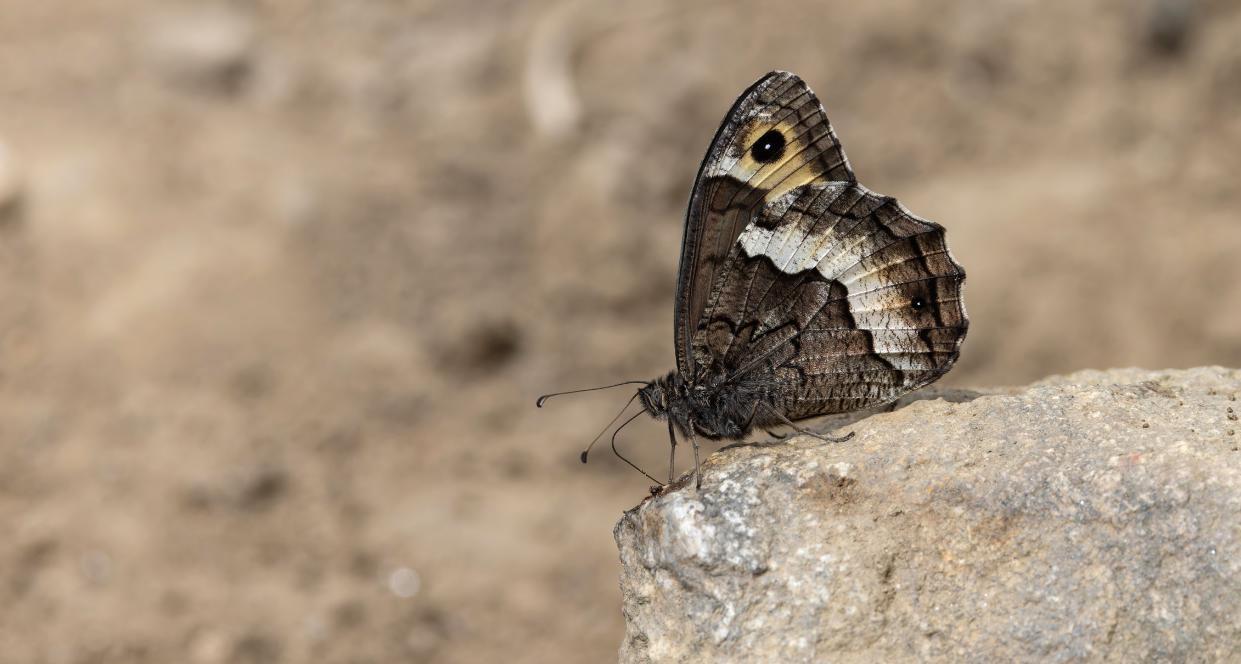
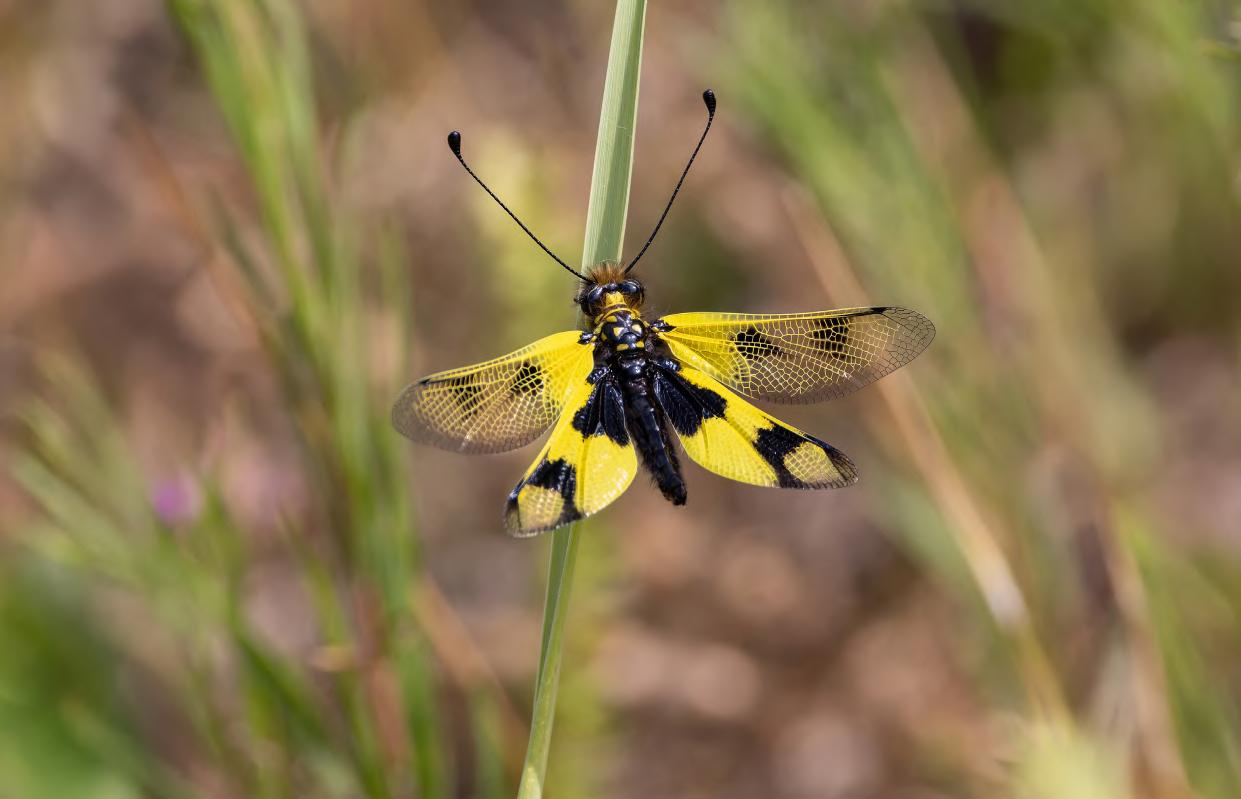
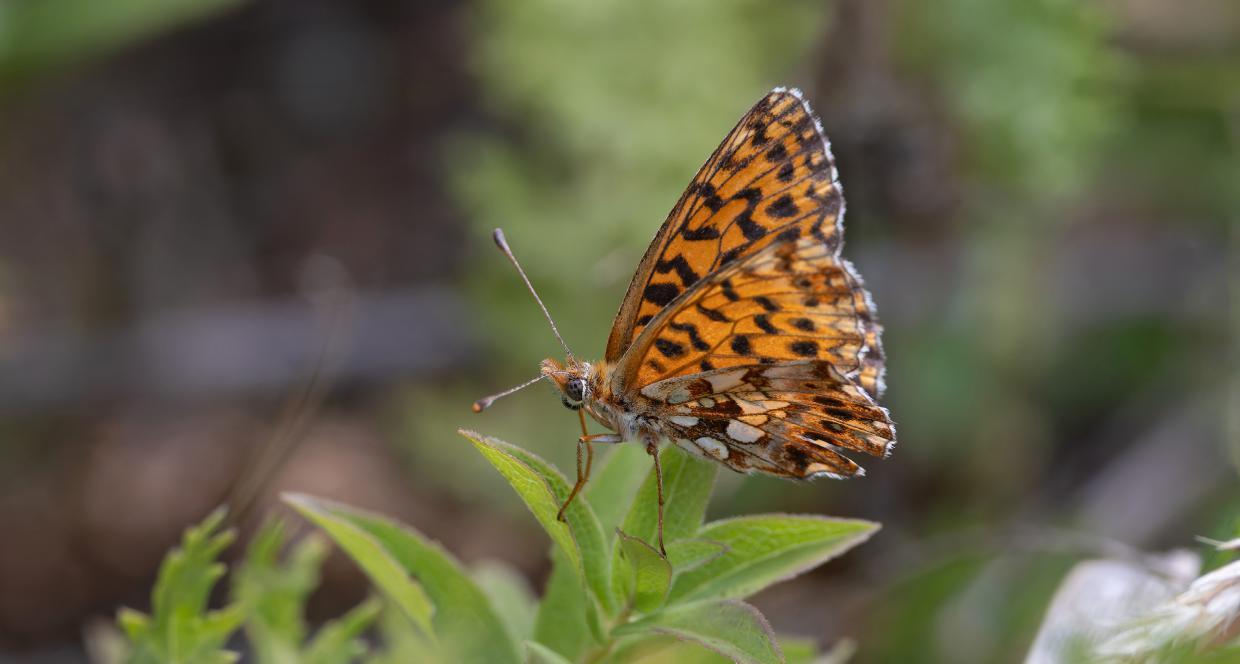
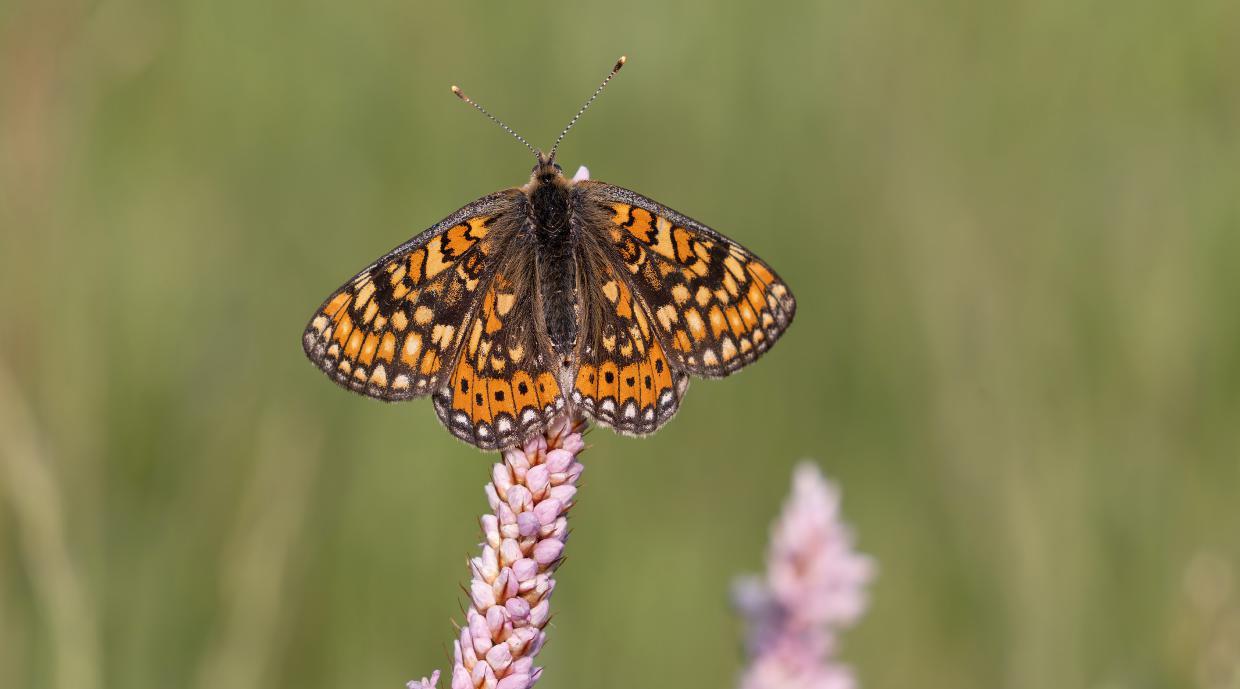
Butterfly Species List:
Dingy Skipper Erynnis targes
Mallow Skipper Carcharodus alceae
Marbled Skipper Carcharodus lavatherae
Tufted Marbled Skipper Carcharodus floccifera
Hungarian Skipper Spialia orbifer
Safflower Skipper Pyrgus carthami
Yellow-banded Skipper Pyrgus sidae
Grizzled Skipper Pyrgus malvae
Large Grizzled Skipper Pyrgus alveus
Large Chequered Skipper Heteropterus morpheus
Chequered Skipper Carterocpehalus palaemon
Essex Skipper Thymelicus lineola
Small Skipper Thymelicus sylvestris
Large Skipper Ochlodes sylvanus
[Southern Festoon Zerynthia polyxena larva only]
Apollo Parnassius apollo
Scarce Swallowtail Iphiclides podalirius
Swallowtail Papilio machaon
Wood White Leptidea sinapsis
Black-veined White Aporia crataegi
Southern Small White Pieris mannii
Small White Peiris rapae
Green-veined White Pieris napae
Eastern Bath White Pontia edusa
Clouded Yellow Colias crocea
Pale Clouded Yellow Colias hyale
Brimstone Gonepteryx rhamni
Duke of Burgundy Hameris lucinia
Small Copper Lycaena phlaeas
Violet Copper Lycaena helle
Large Copper Lycaena dispar
Scarce Copper Lycaena vigaureae
Sooty Copper Lycaena tityrus
Purple-shot Copper Lycaena alciphron
Balkan Copper Lycaena candens
Green Hairstreak Callophrys rubi
Blue-spot Hairstreak Satyirum spini
Ilex Hairstreak Satyrium ilicus
Sloe Hairstreak Satyrium acacia
Small Blue Cupido minimus
Osiris Blue Cupido osiris
Short-tailed Blue Cupido argiades
Eastern Short-tailed Blue Cupido decoloratus
Holly Blue Celastrina argiolus
Eastern Baton Blue Pseudophilotes vicrama
Chequered Blue Scolitantides orion
Green-underside Blue Glaucopsychea alexis
Silver-studded Blue Plebejus argus
Reverdin’s Blue Plebejus argyrognomon
Geranium Argus Eumedonia eumedon
Brown Argus Aricia agestis
Northern Brown Argus Aricia artaxerxes
Blue Argus Aricia anteros
Mazarine Blue Cyanirius semiargus
Turquoise Blue Polyommatus dorylas
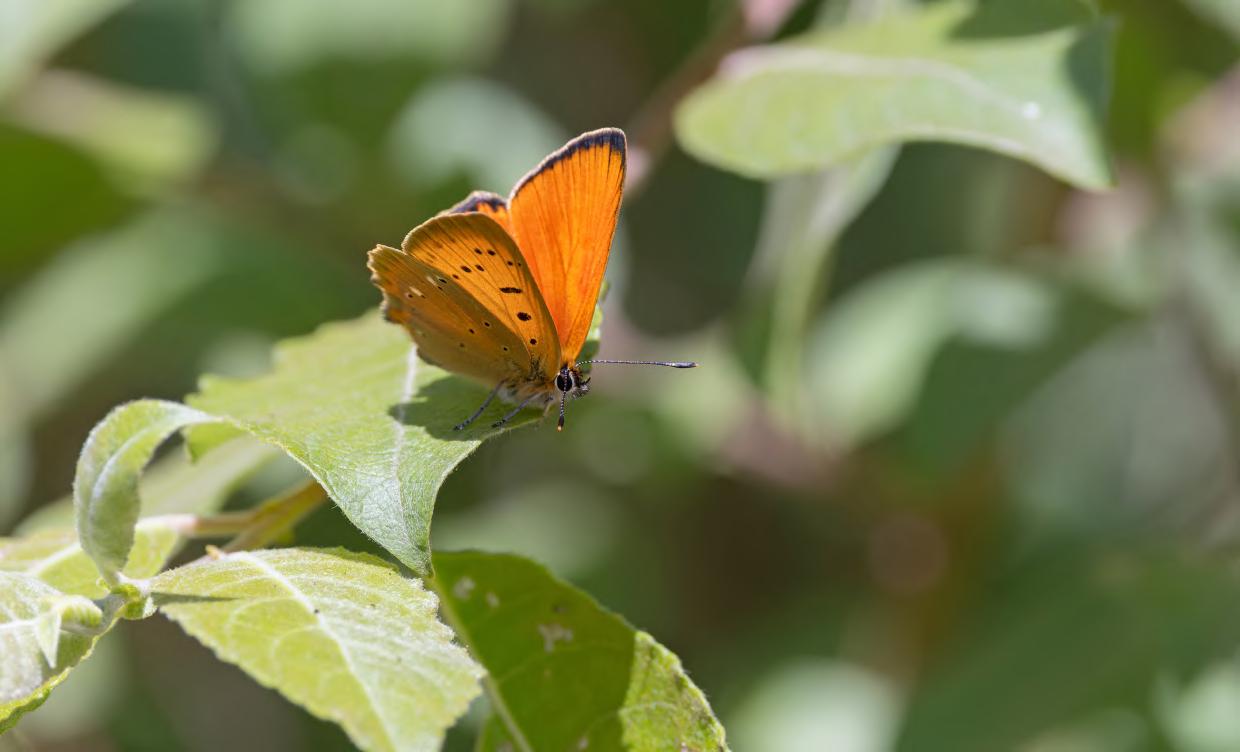
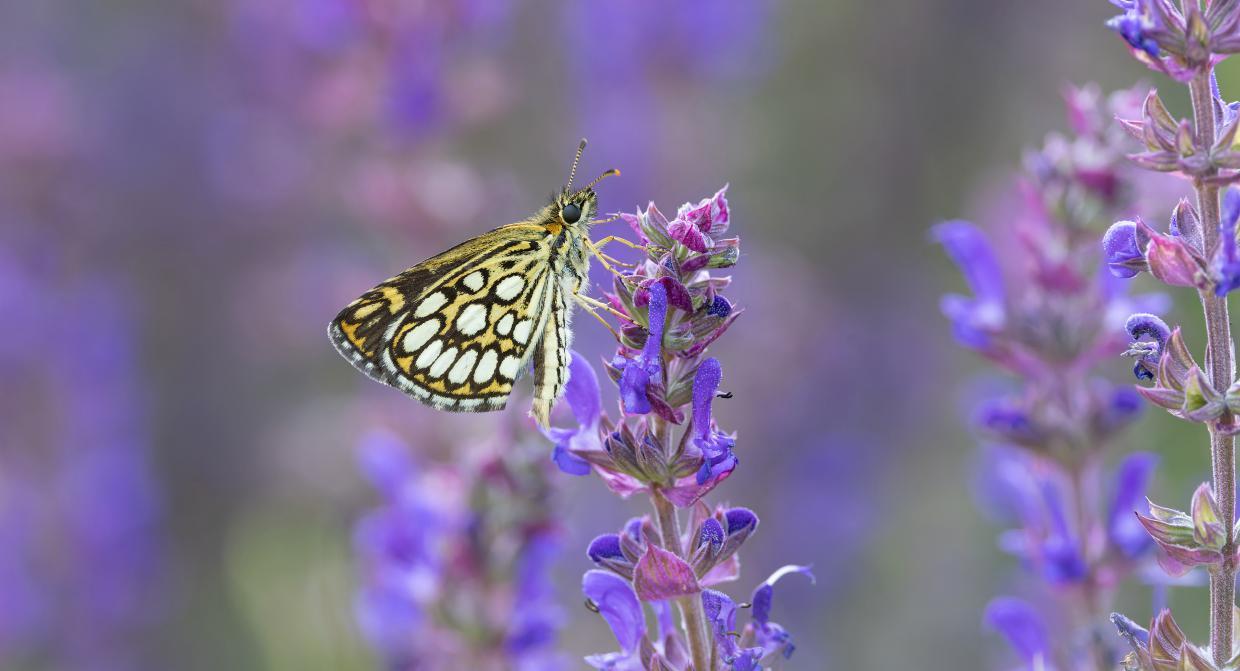
Amanda’s Blue Polyommatus amandus
Common Blue Polyommatus icarus
Chapman’s Blue Polyommatus thersites
Adonis Blue Lysandra bellargus
Silver-washed Fritillary Argynnis pahpia
High Brown Fritillary Fabriciana adippe
Niobe Fritillary Fabriciana niobe
Queen of Spain Fritillary Issoria lathonia
Marbled Fritillary Brenthis daphne
Lesser Marbled Fritillary Brenthis ino
Twin-spot Fritillary Brenthis hecate
Bog Fritillary Boloris eunomia
Weaver’s Fritillary Boloris dia
Red Admiral Vanessa atalanta
Painted Lady Vanessa cardui
Peacock Aglais io
Small Tortoiseshell Aglais urticae
Comma Polygonia c-album
Map Arashinia levana
Large Tortoiseshell Nympahlis polychloros
False Comma Nymphalis vaualbum
Marsh Fritillary Euphydryas aurinia
Glanville Fritillary Melitaea cinxia
Knapweed Fritillary Melitaea phoebe
Freyer’s Fritillary Melitaea arduinna
Lesser Spotted Fritillary Melitaea trivia
Spotted Fritillary Melitaea didyma
False Heath Fritillary Melitaea diamina
Nickerl’s Fritllary Melitaea aurelia
Heath Fritillary Melitaea athalia
Poplar Admiral Lementis populi
White Admiral Limentis camila
Southern White Admiral Limentis reducta
Common Glider Neptis sappho
Hungarian Glider Neptis rivularis
Lesser Purple Emperor Apatura ilia
Lattice Brown Kirinia roxelana
Lesser Lattice Brown Kirinia climene
Speckled Wood Pararge aegeria
Northern Wall Brown Lasiommata petropolitana
Eastern Large Heath Coenonympha rhodopensis
Pearly Heath Ceononympha arcania
Chestnut Heath Ceononympha glycerion
Russian Heath Ceononympha leander
Small Heath Ceononympha pamphilus
Meadow Brown Maniola jurtina
Bulgarian Ringlet Erebia orientalis
Woodland Ringlet Erebia medusa
Almond-eyed Ringlet Erebia albergana
Bright-eyed Ringlet Erebia oema
Marbled White Melanargia galathea
Great Banded Grayling Brintesia circe
